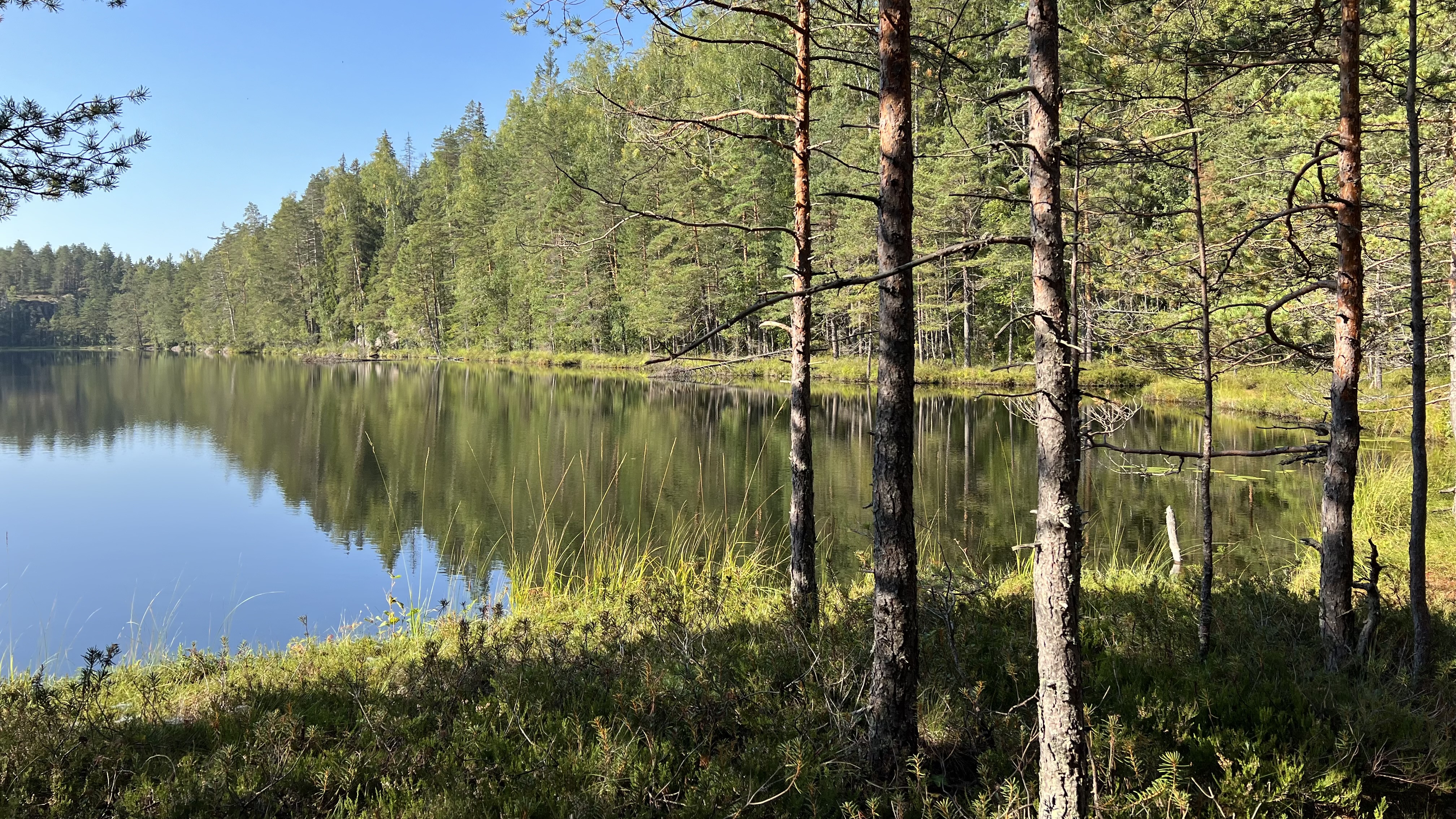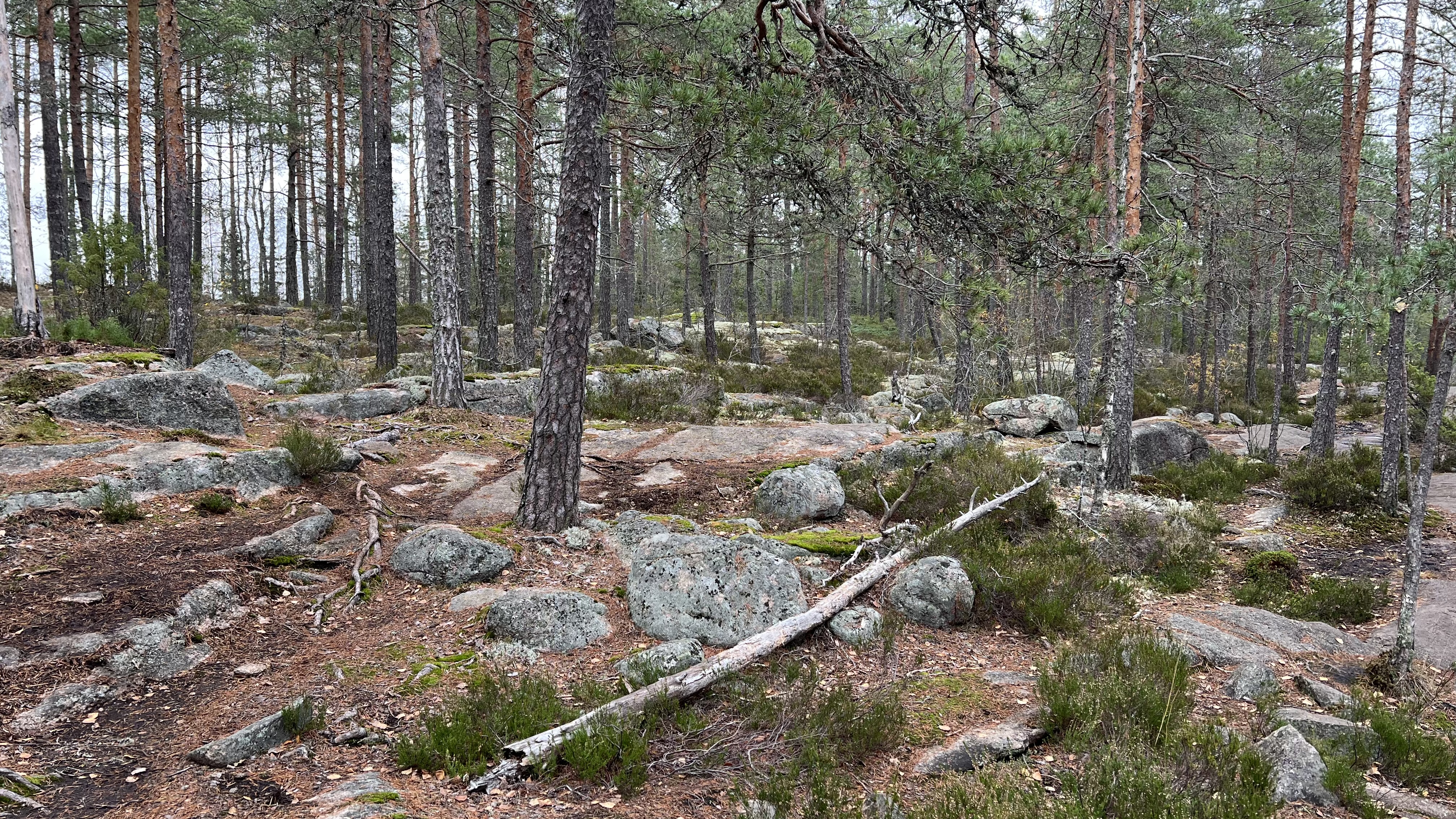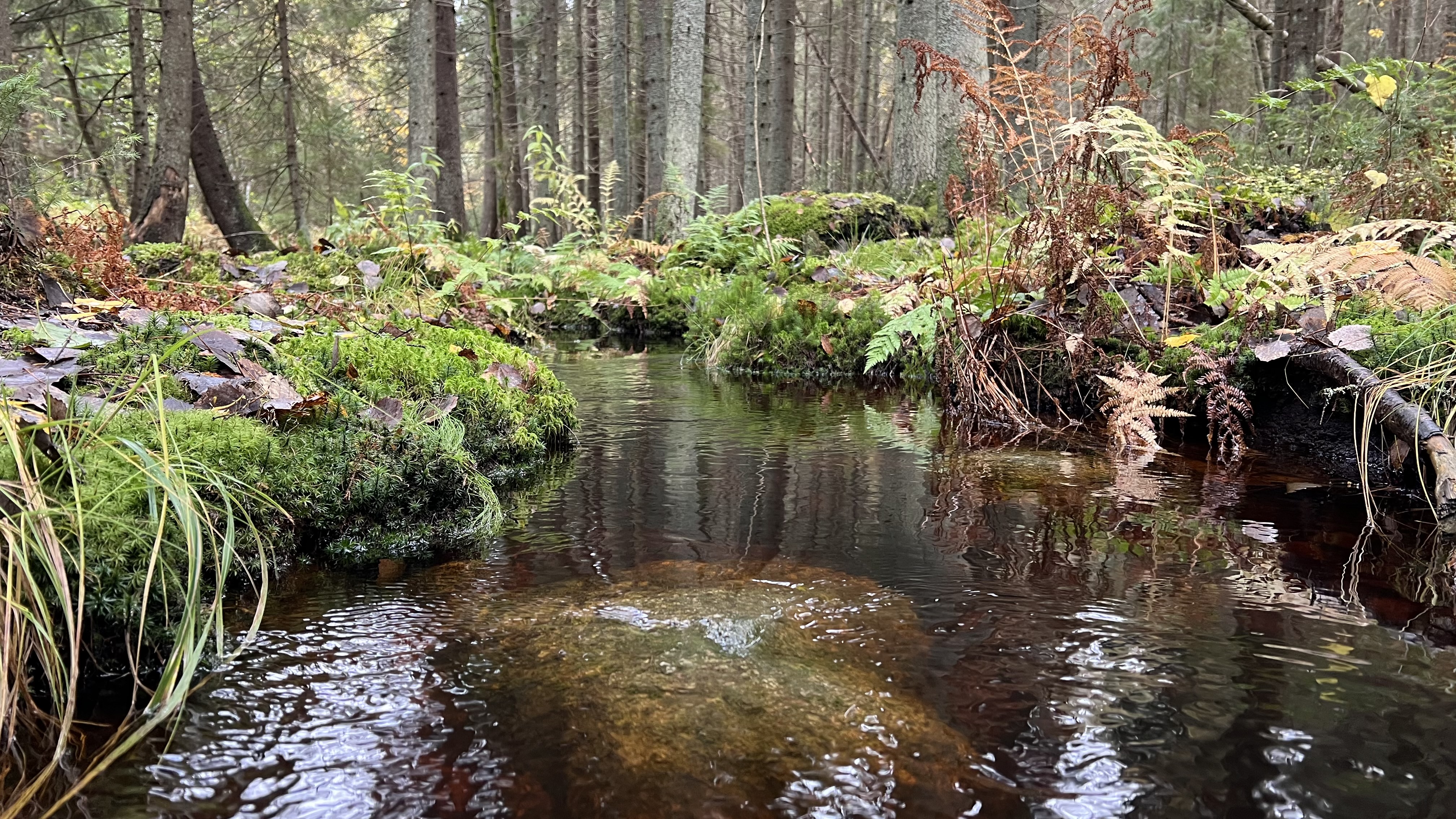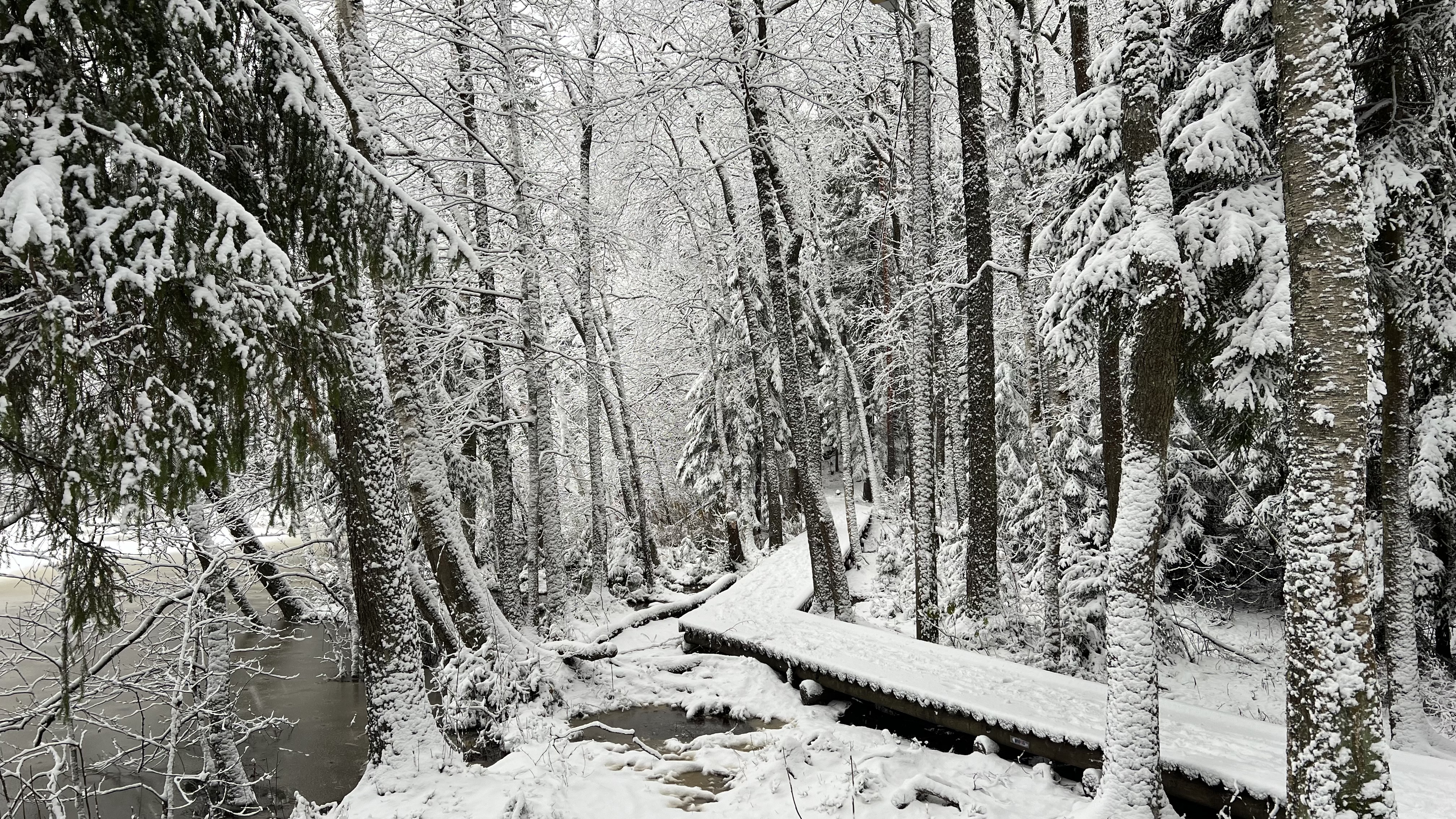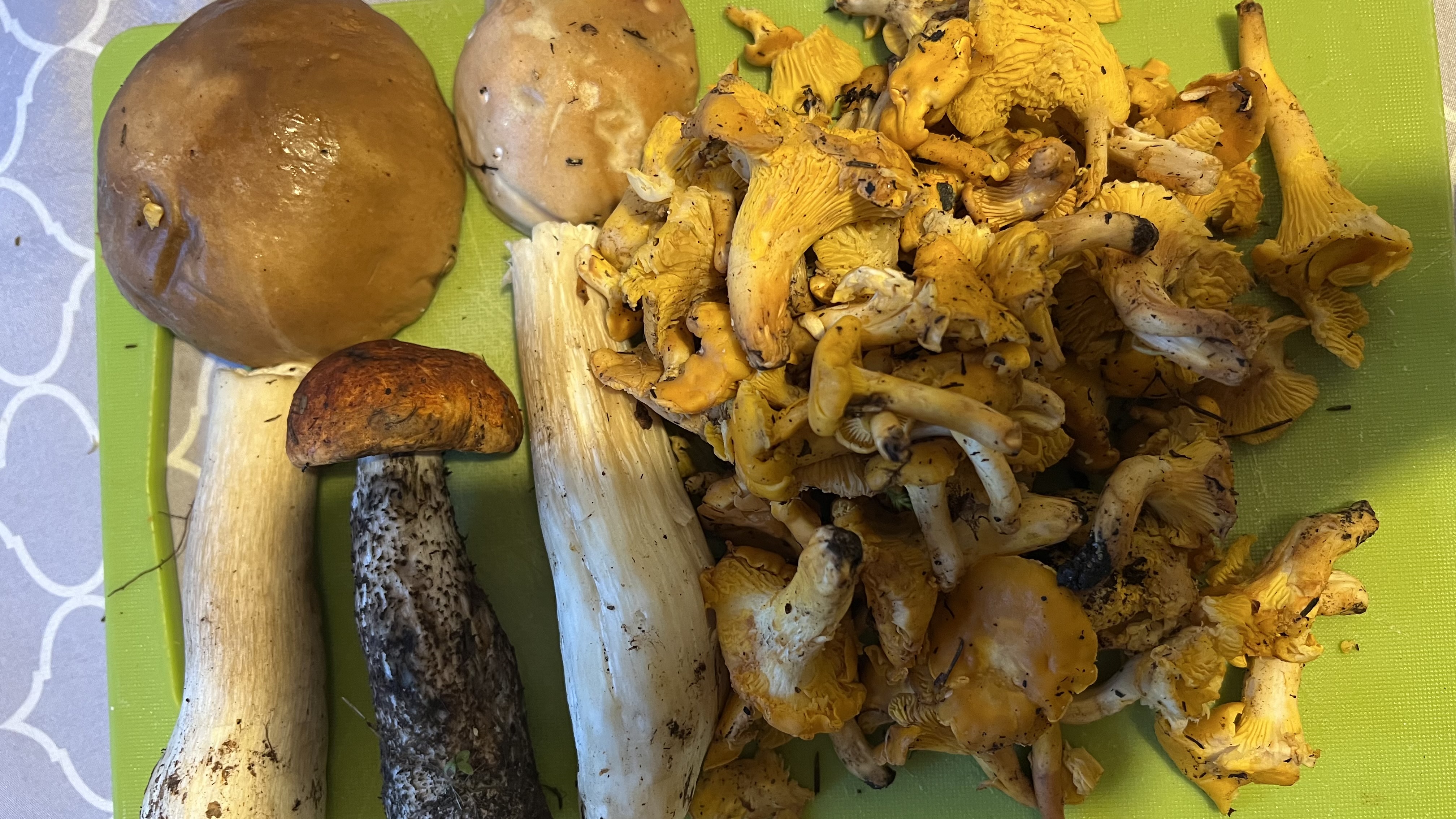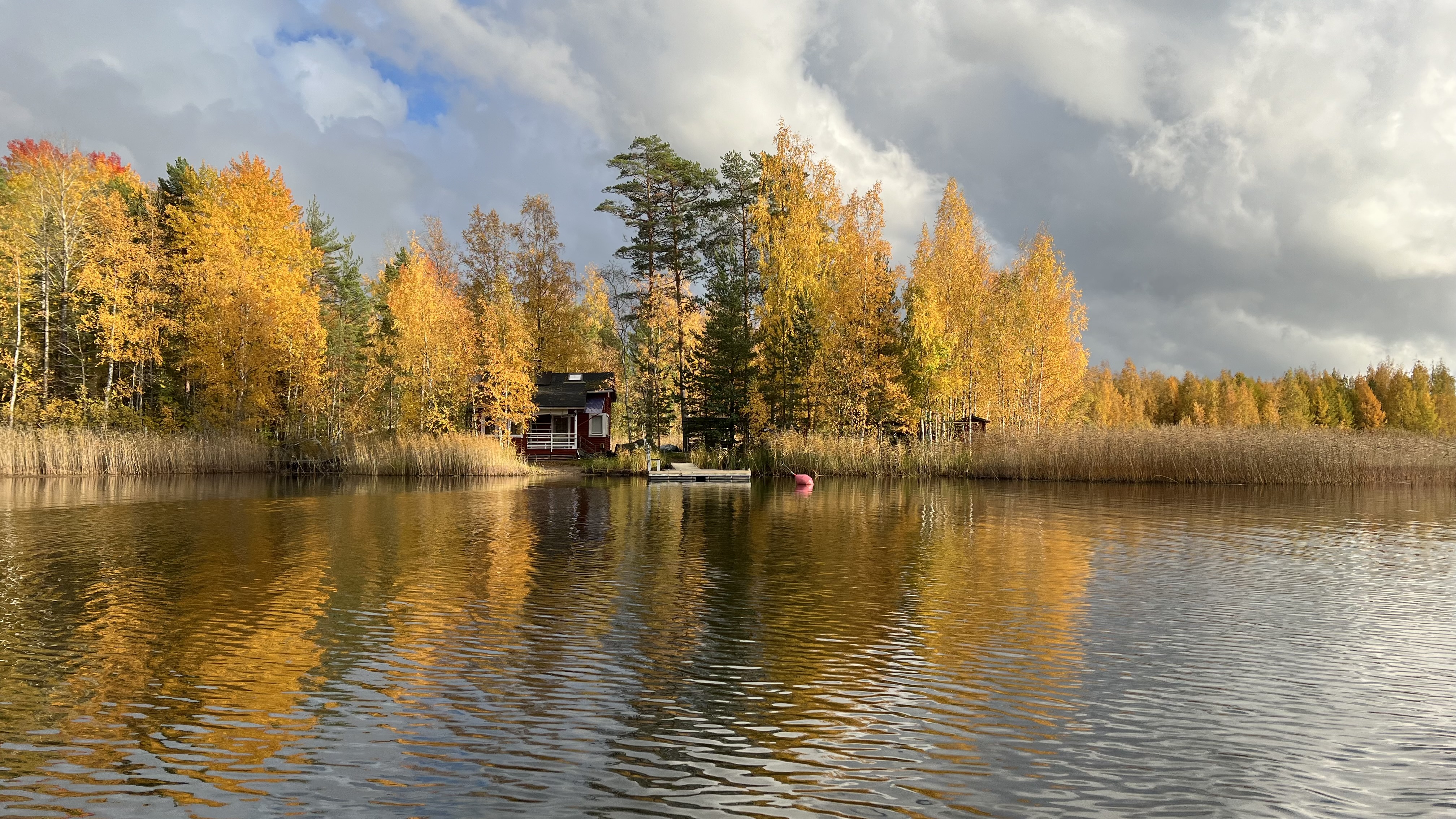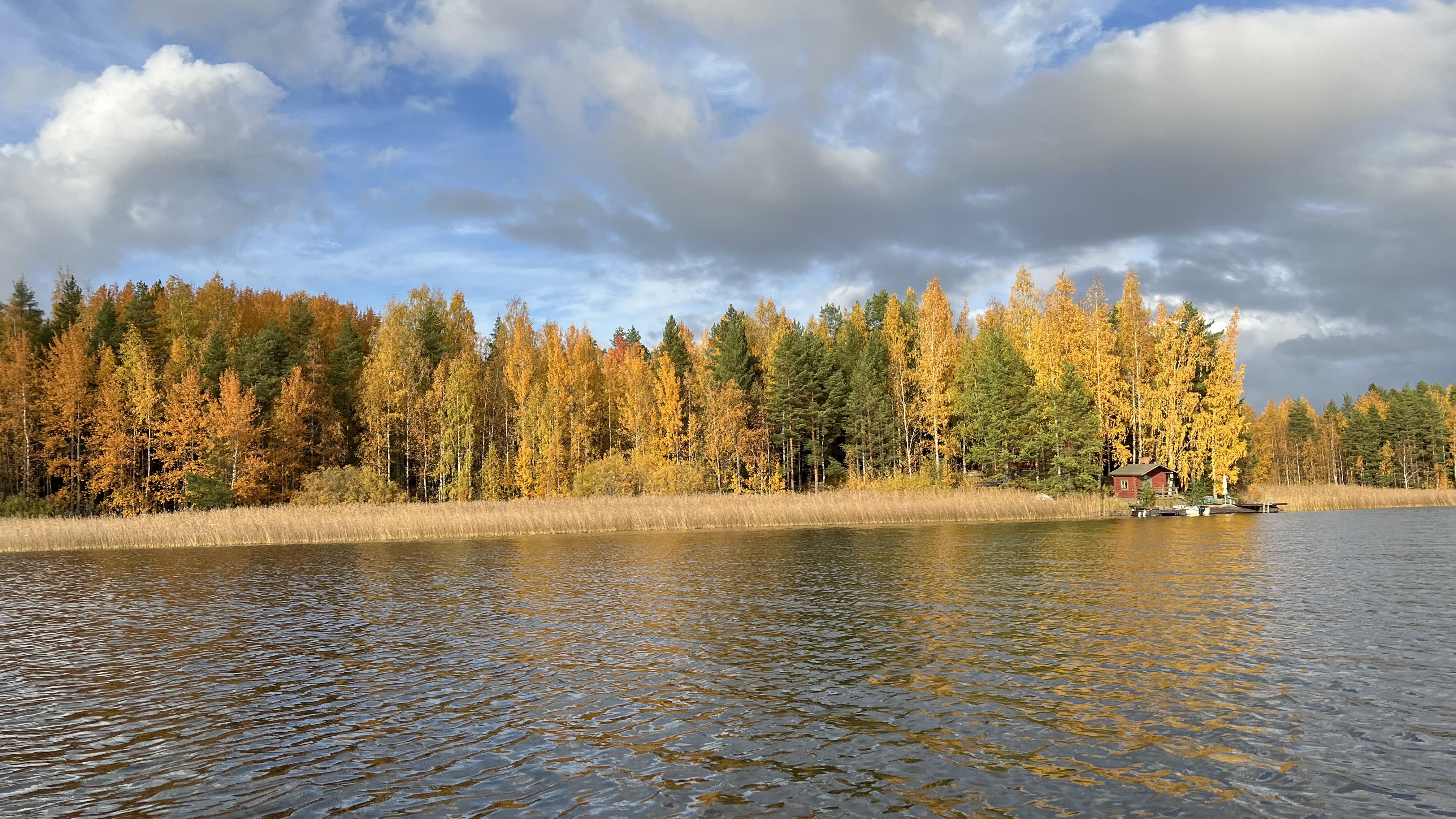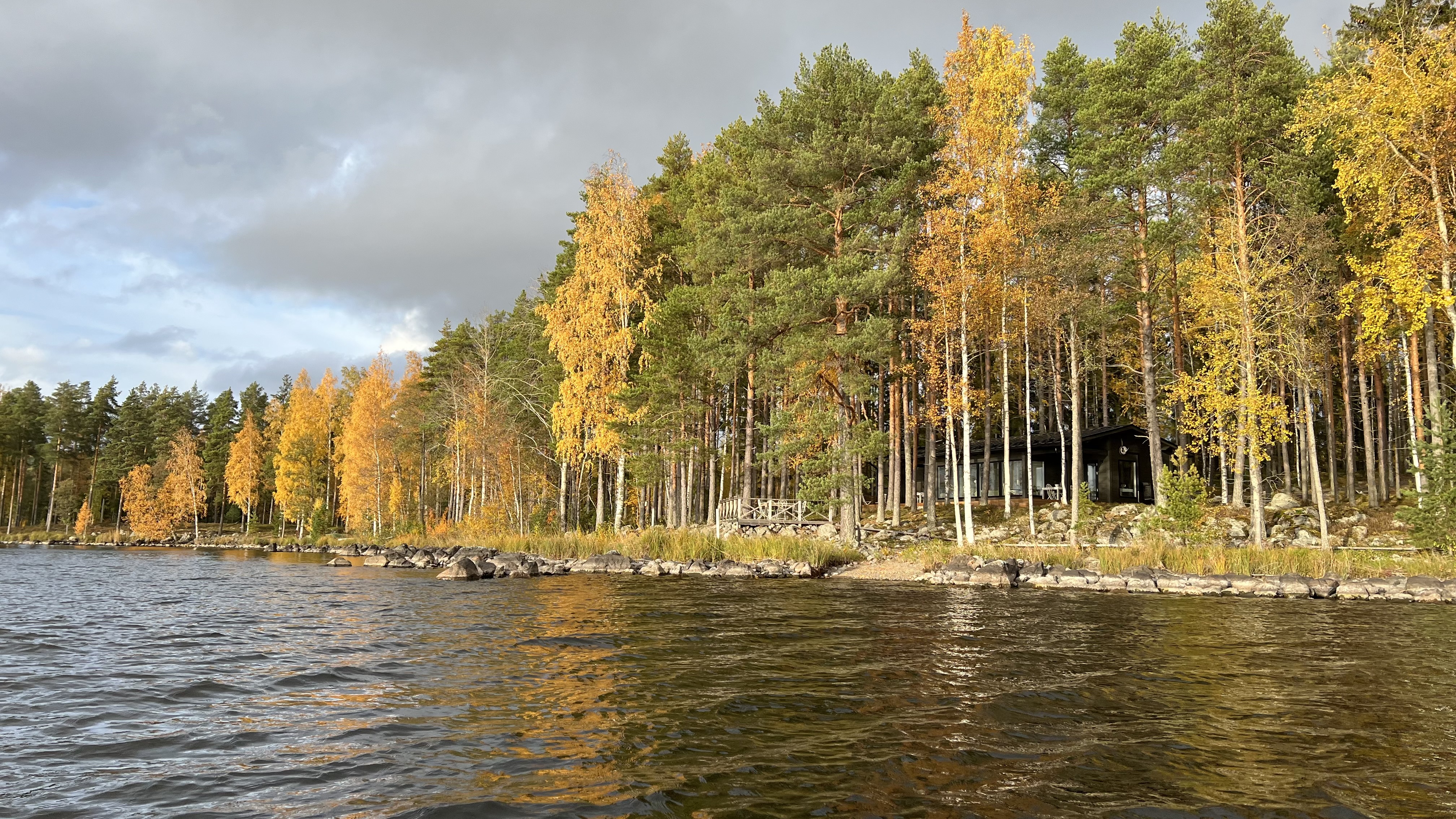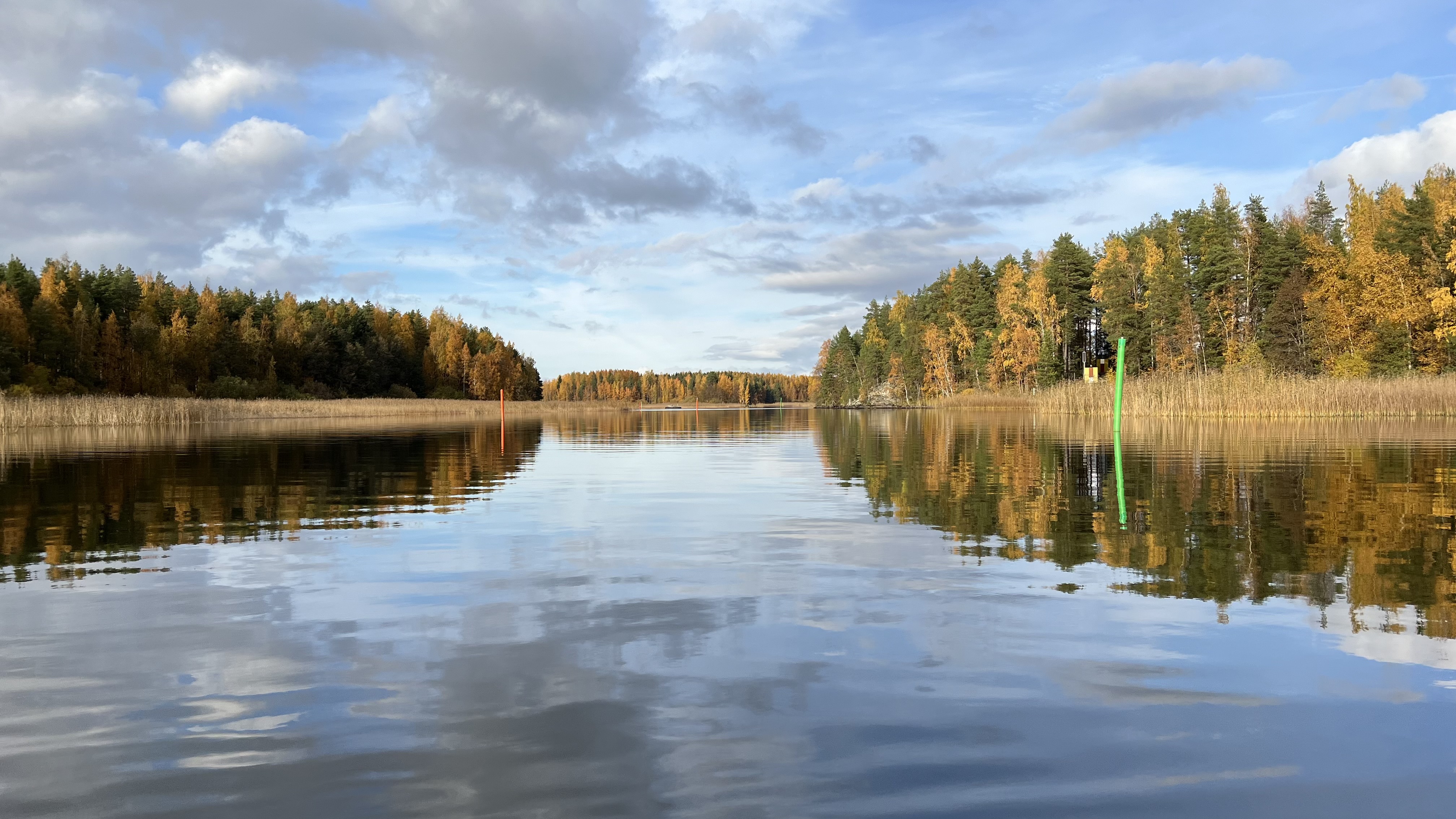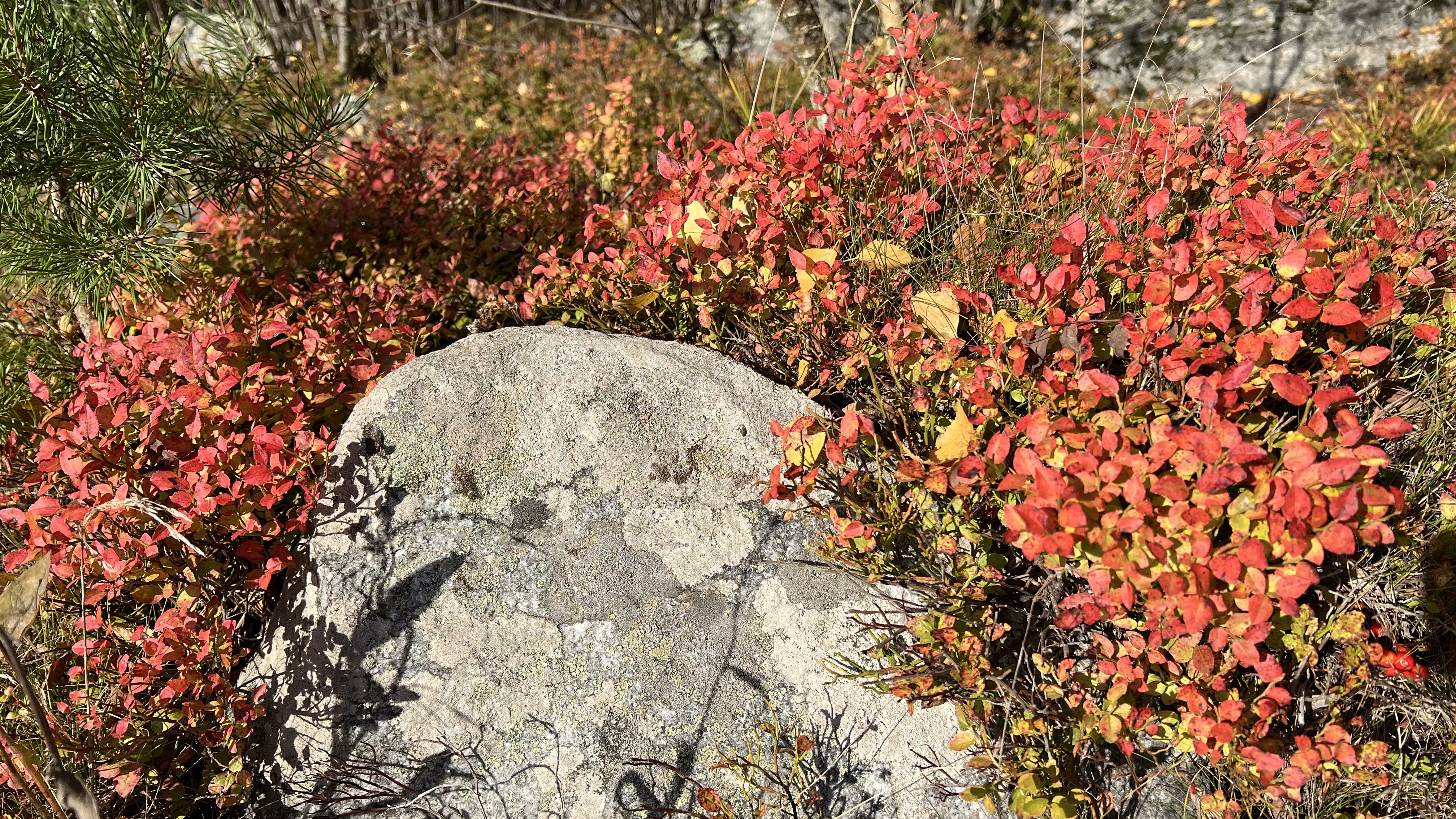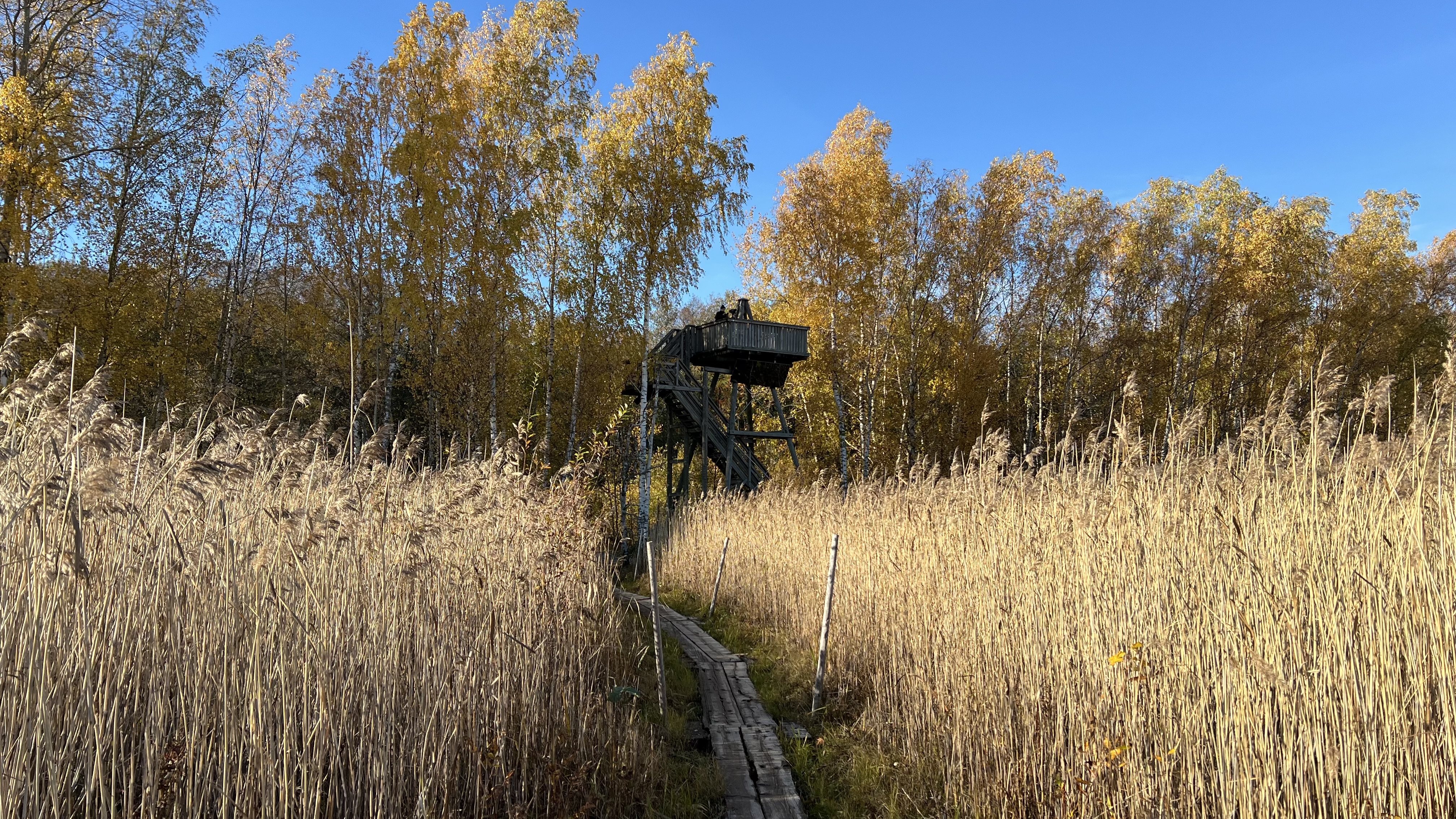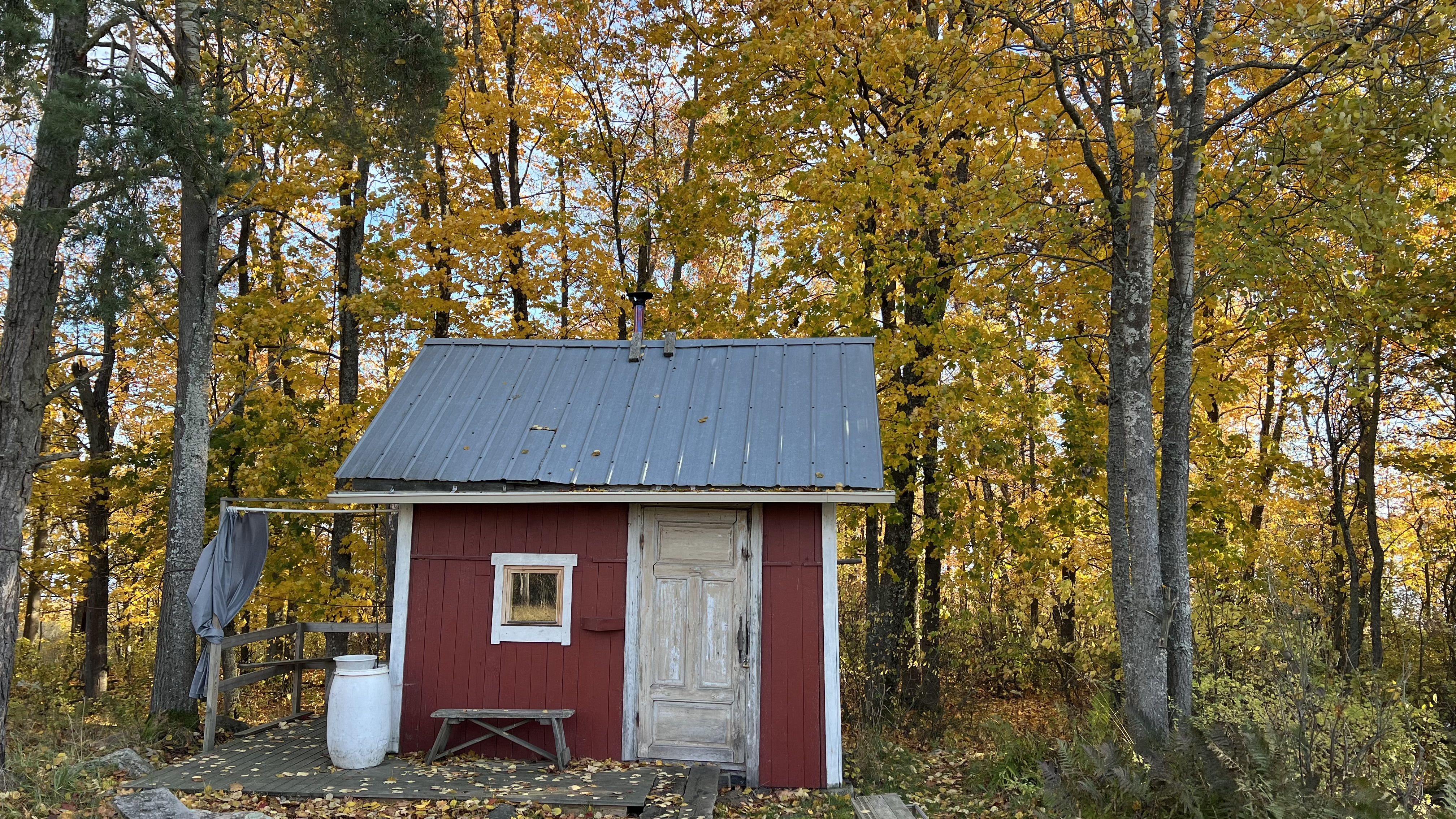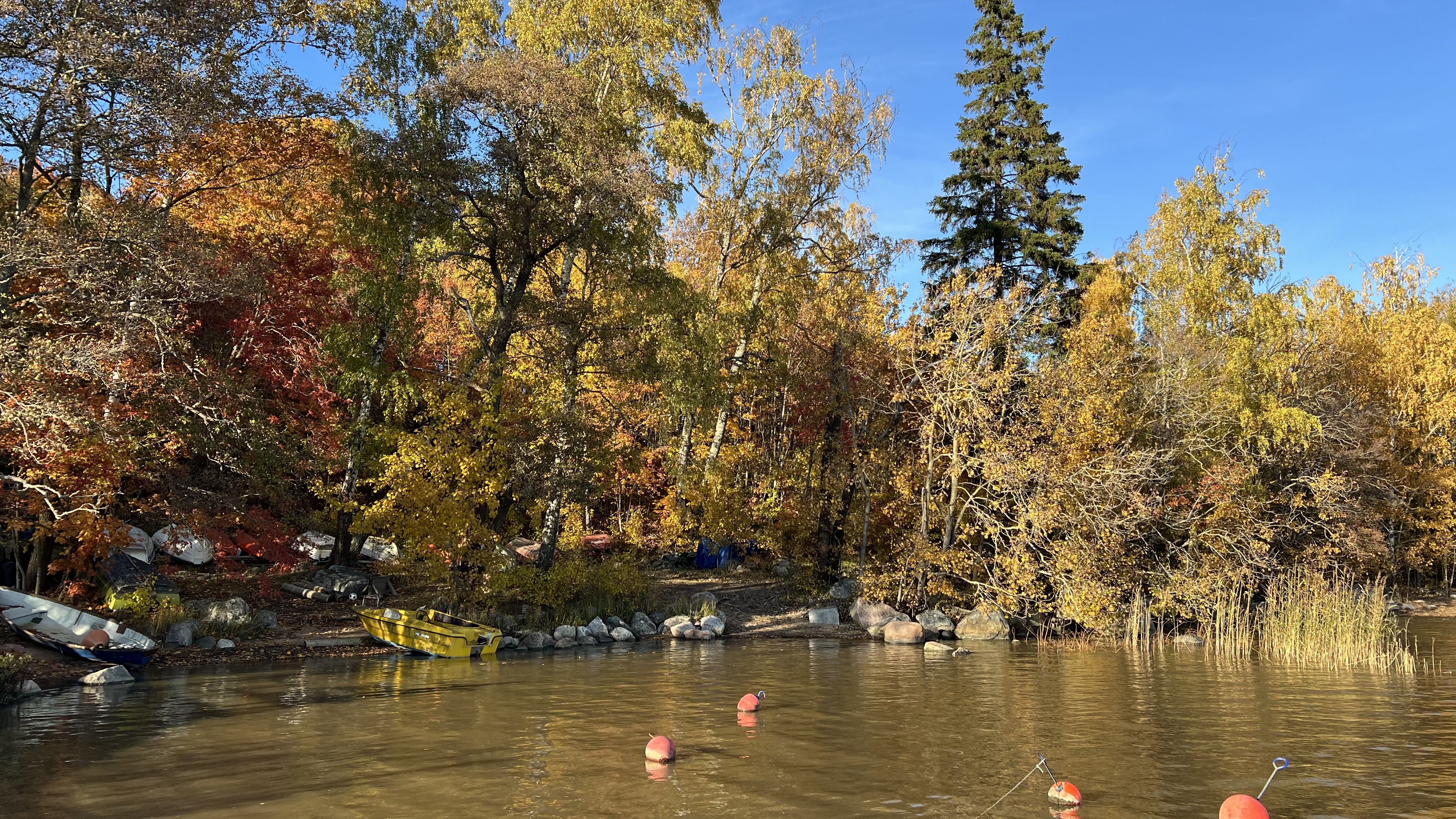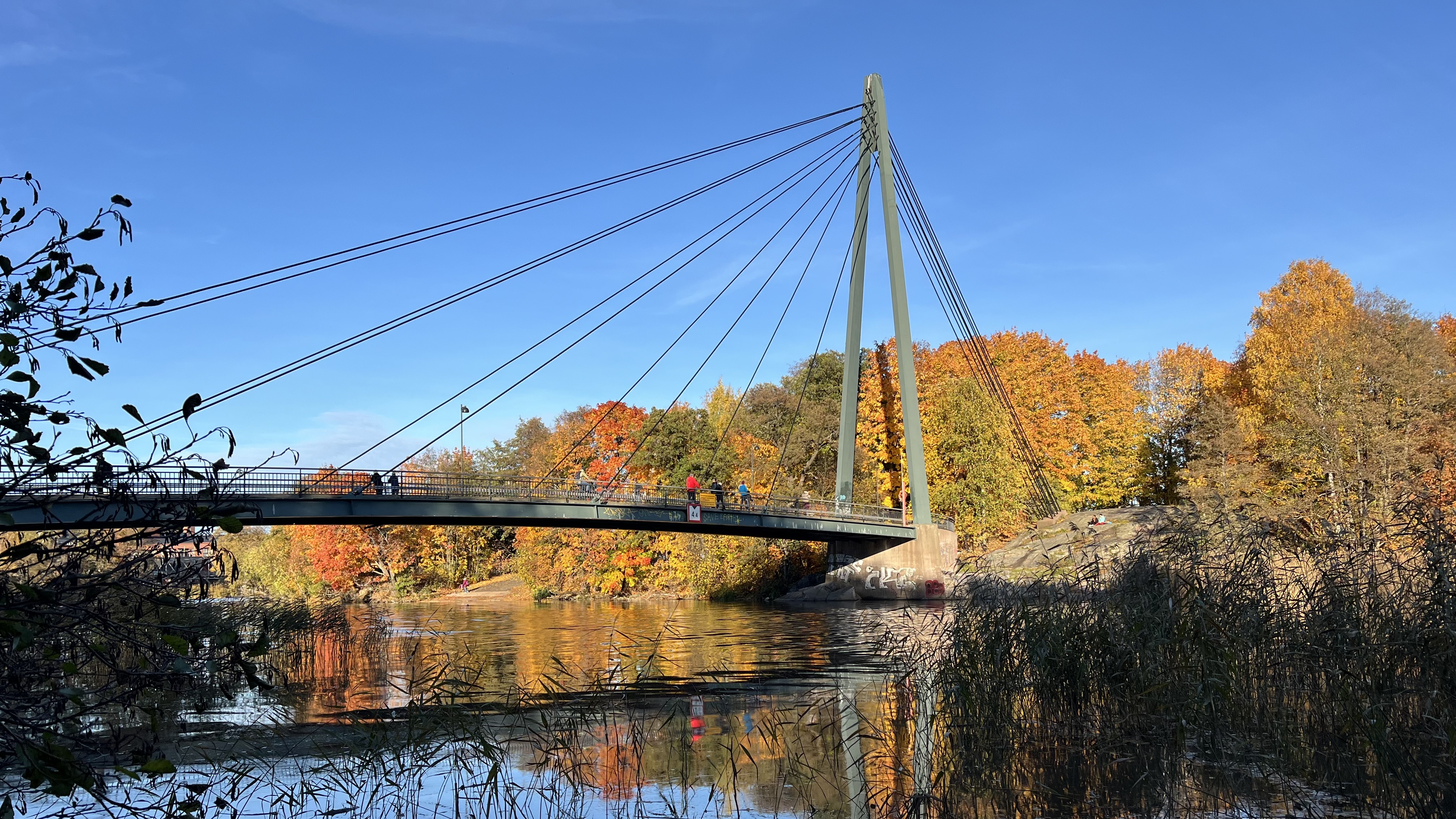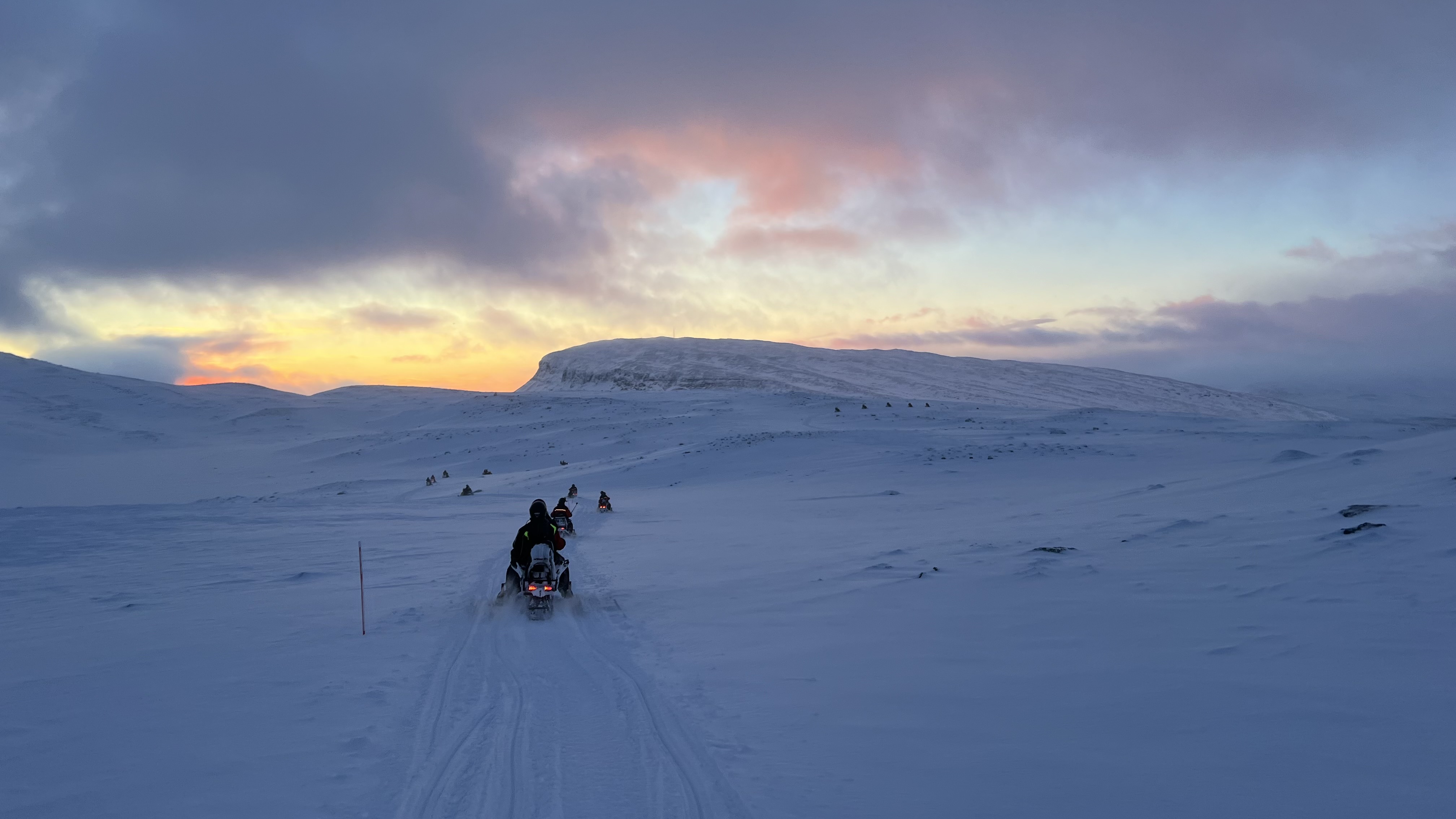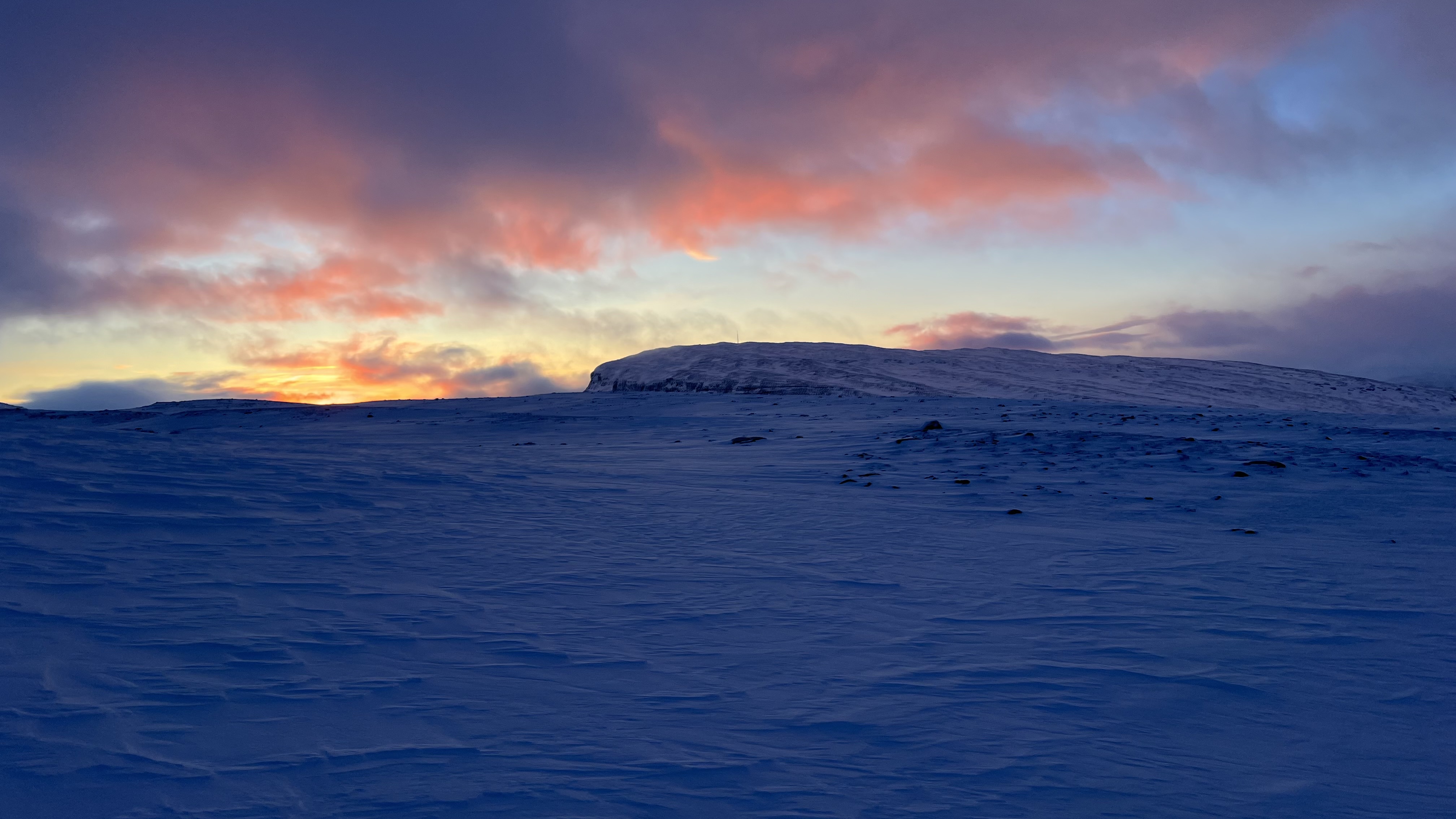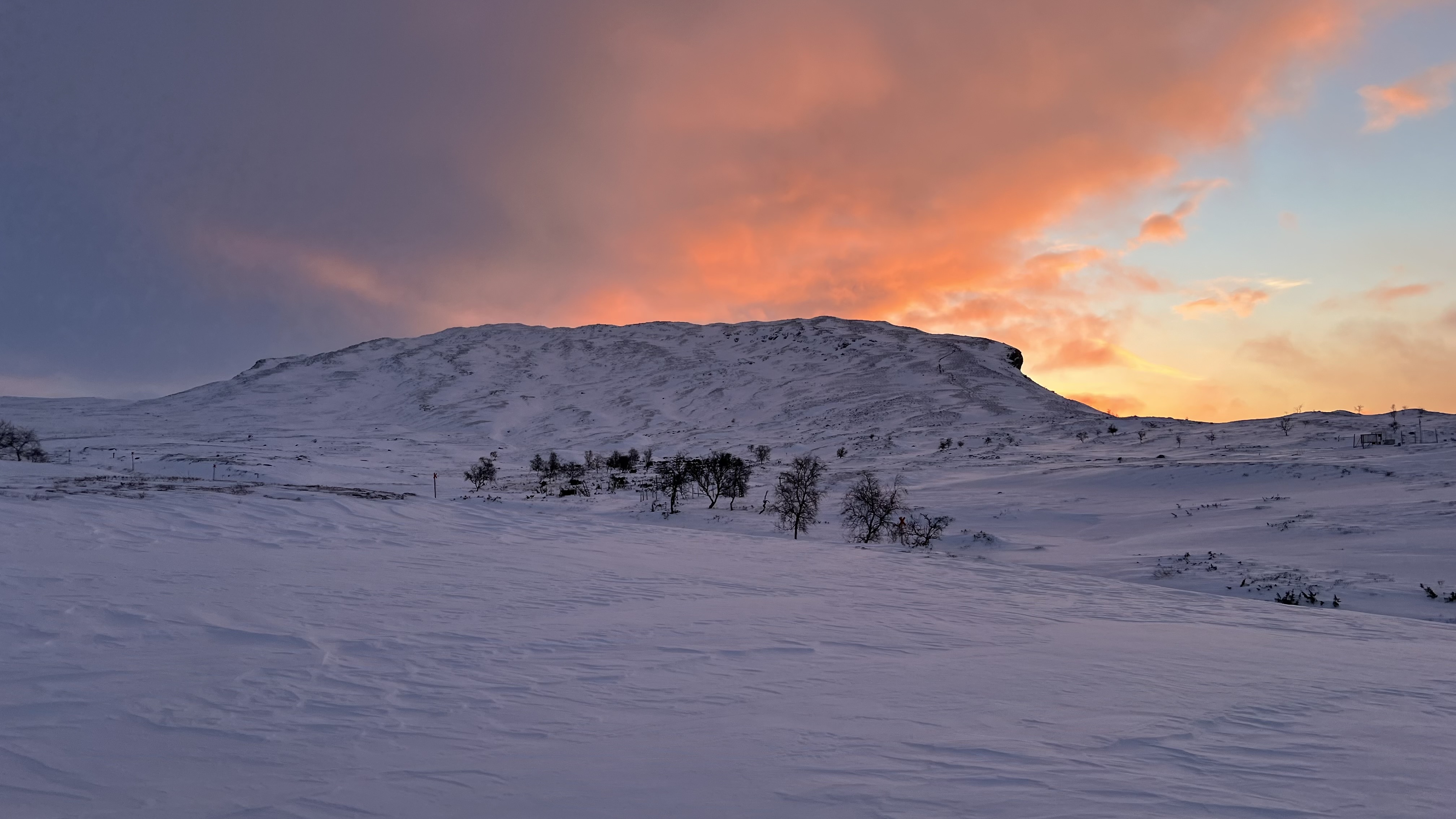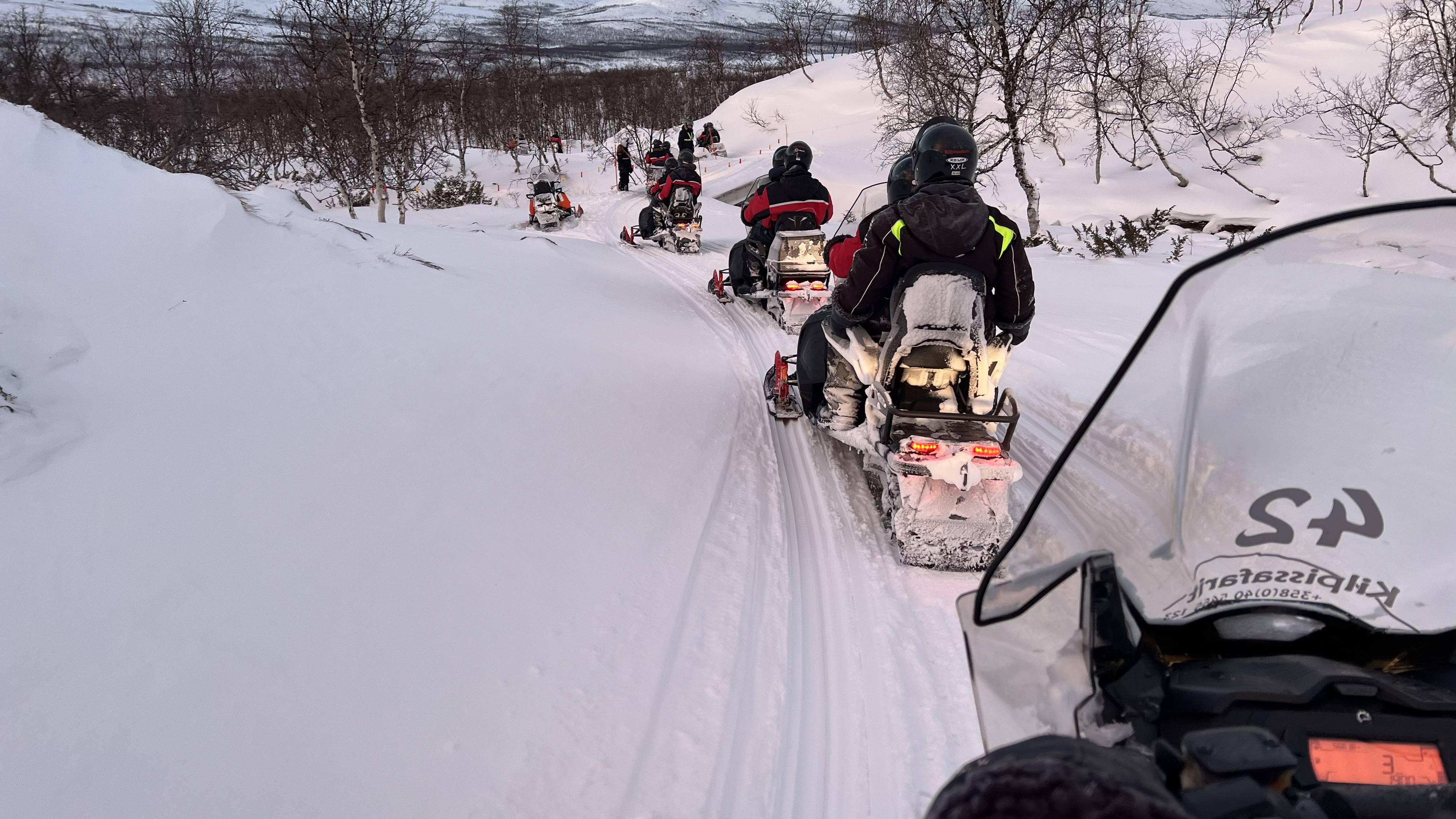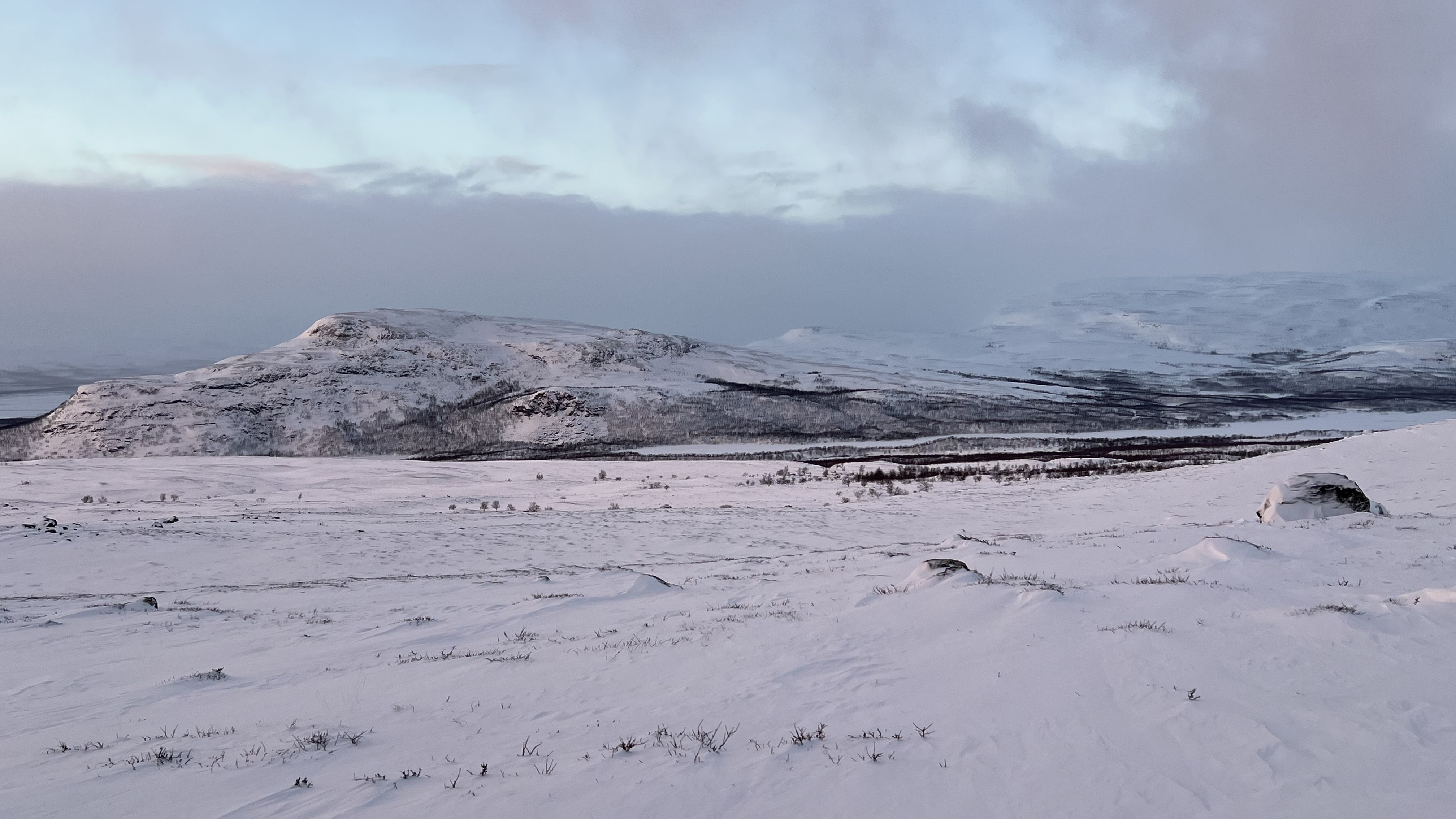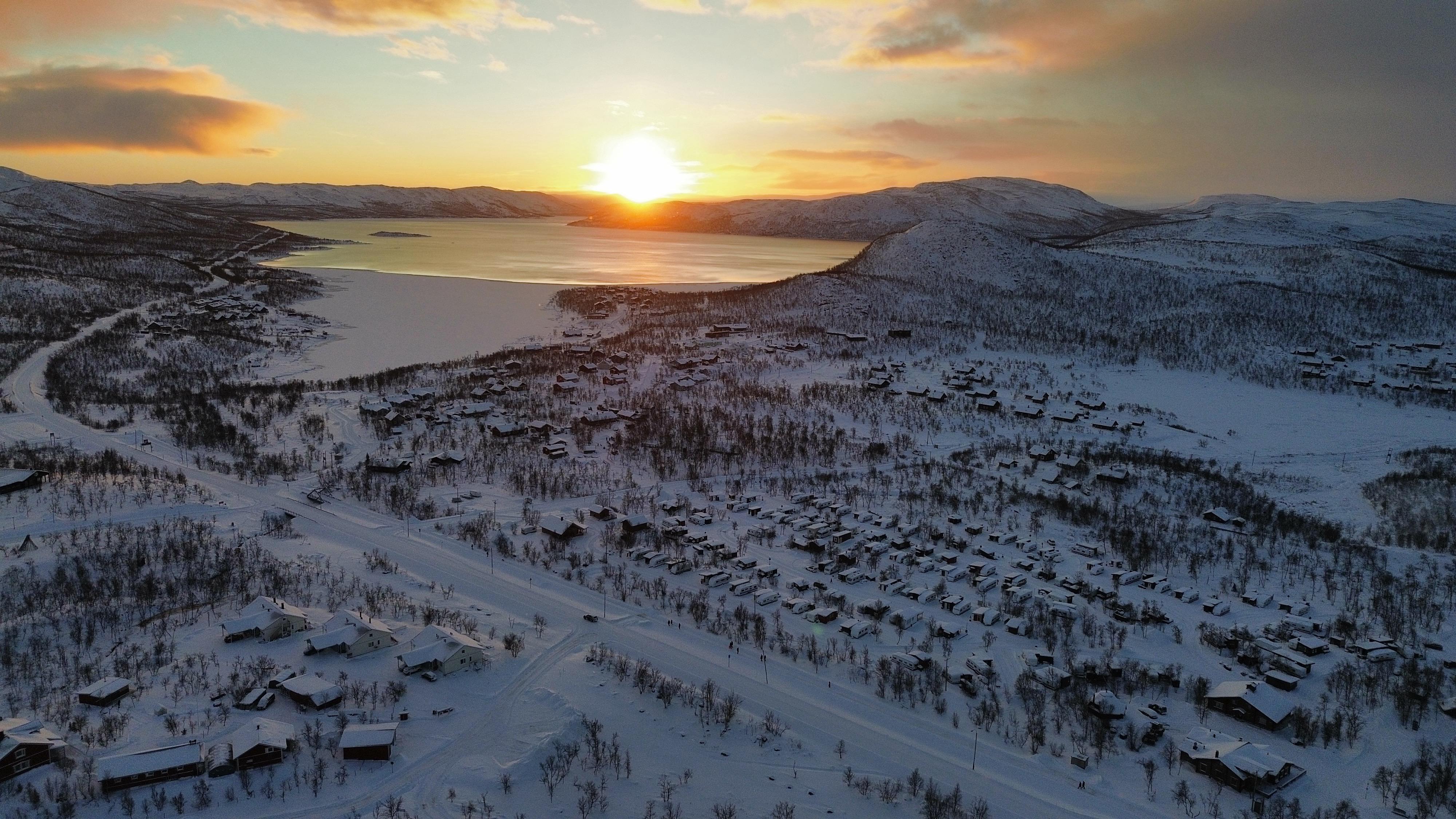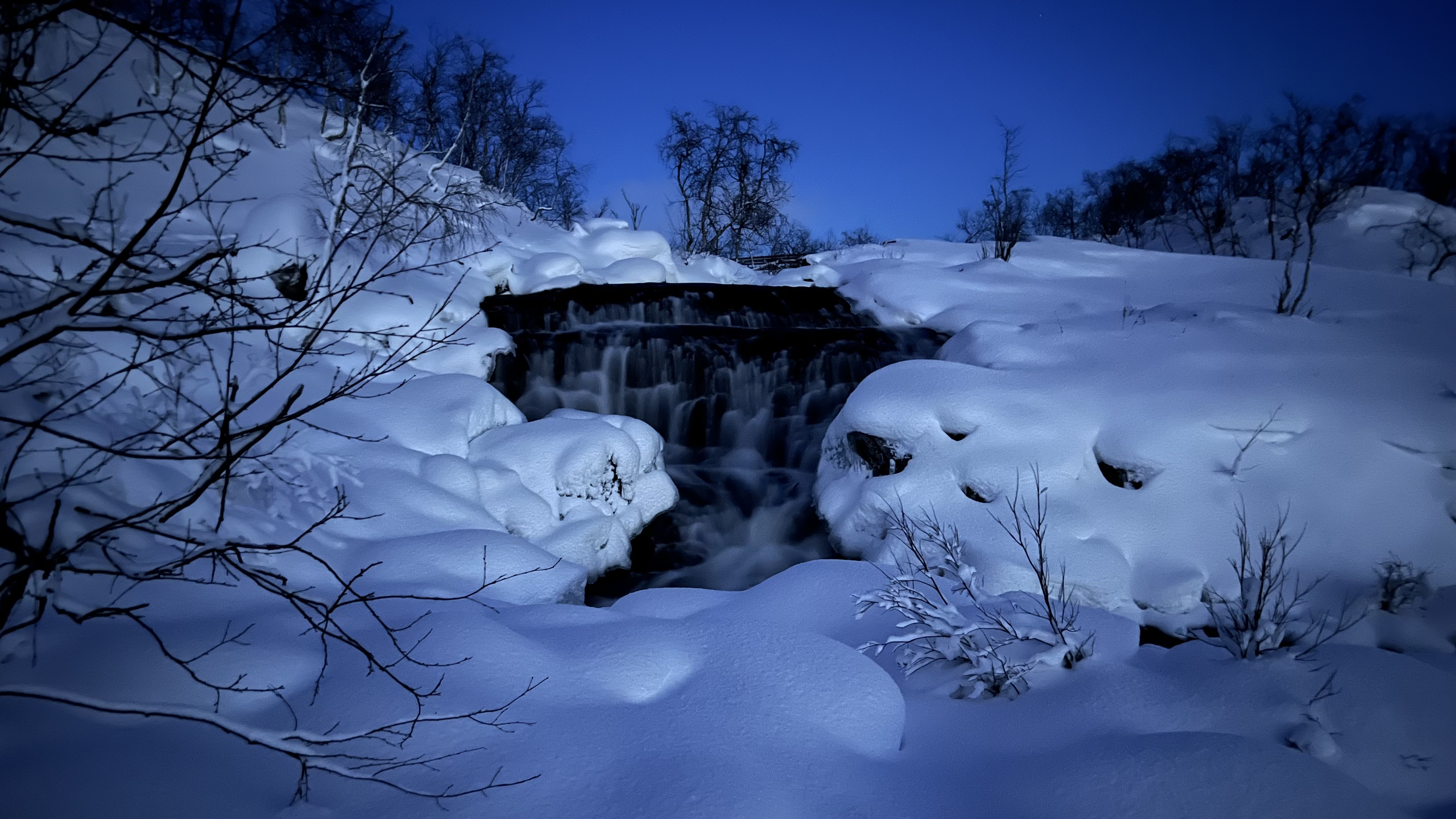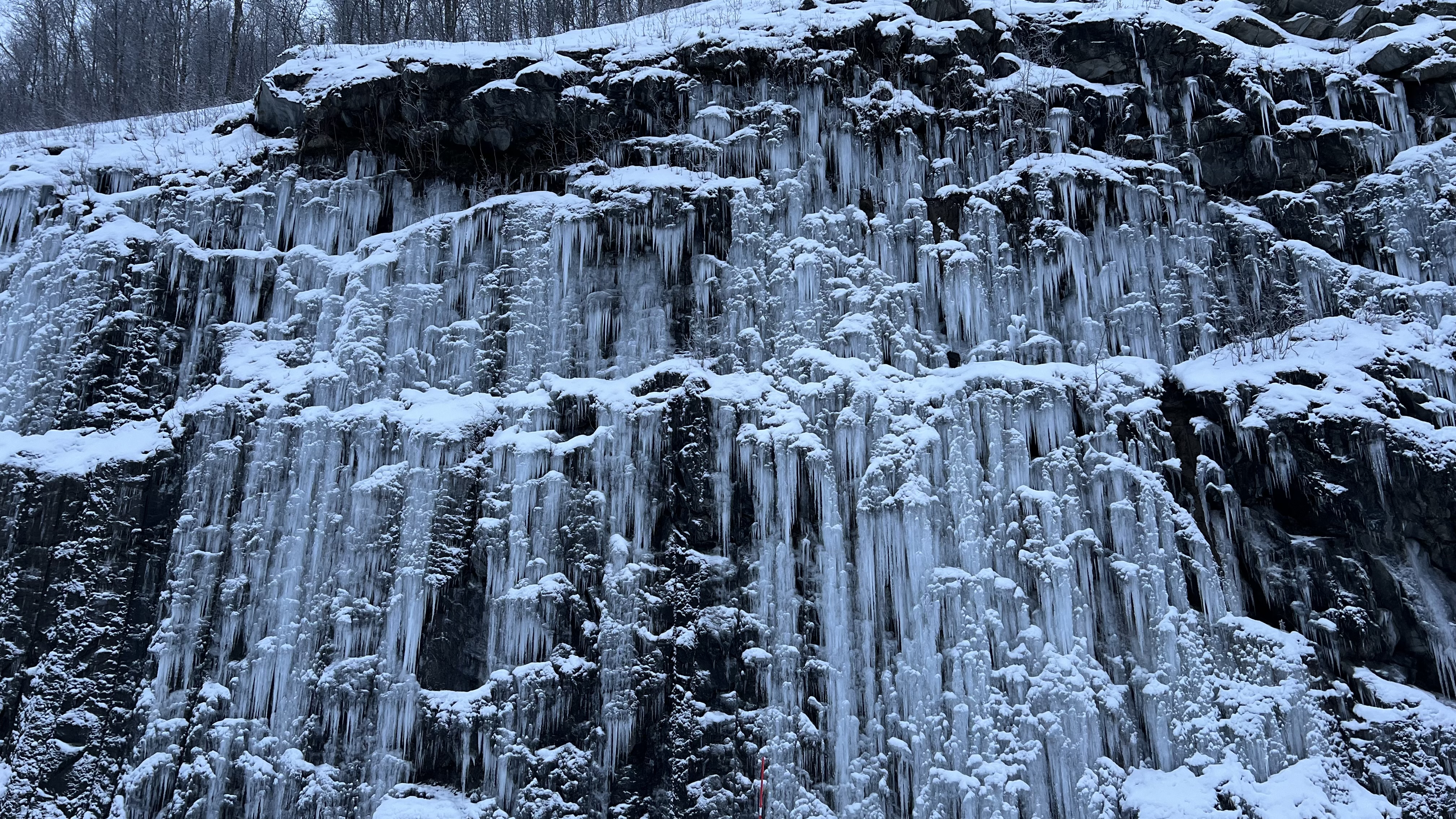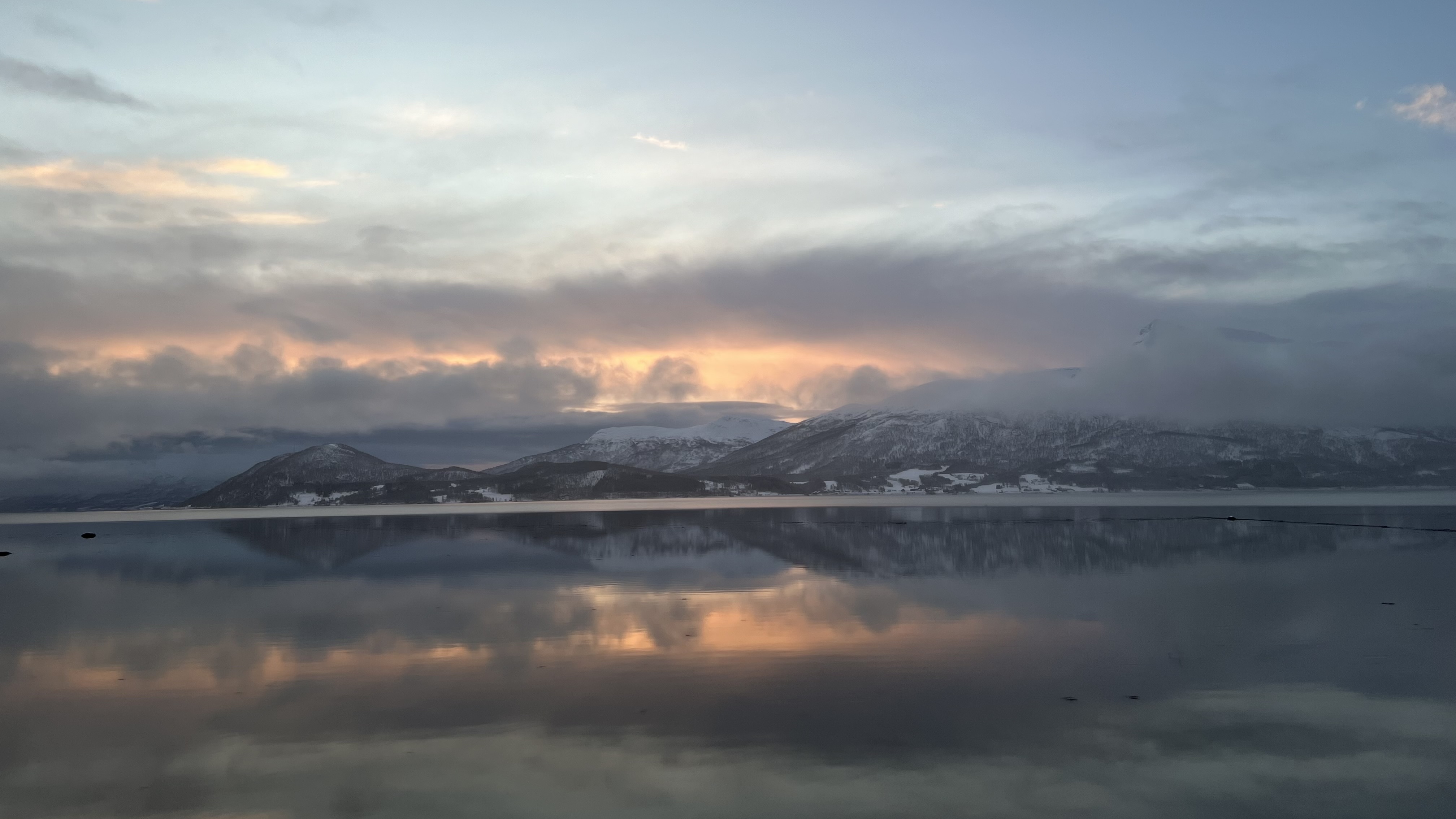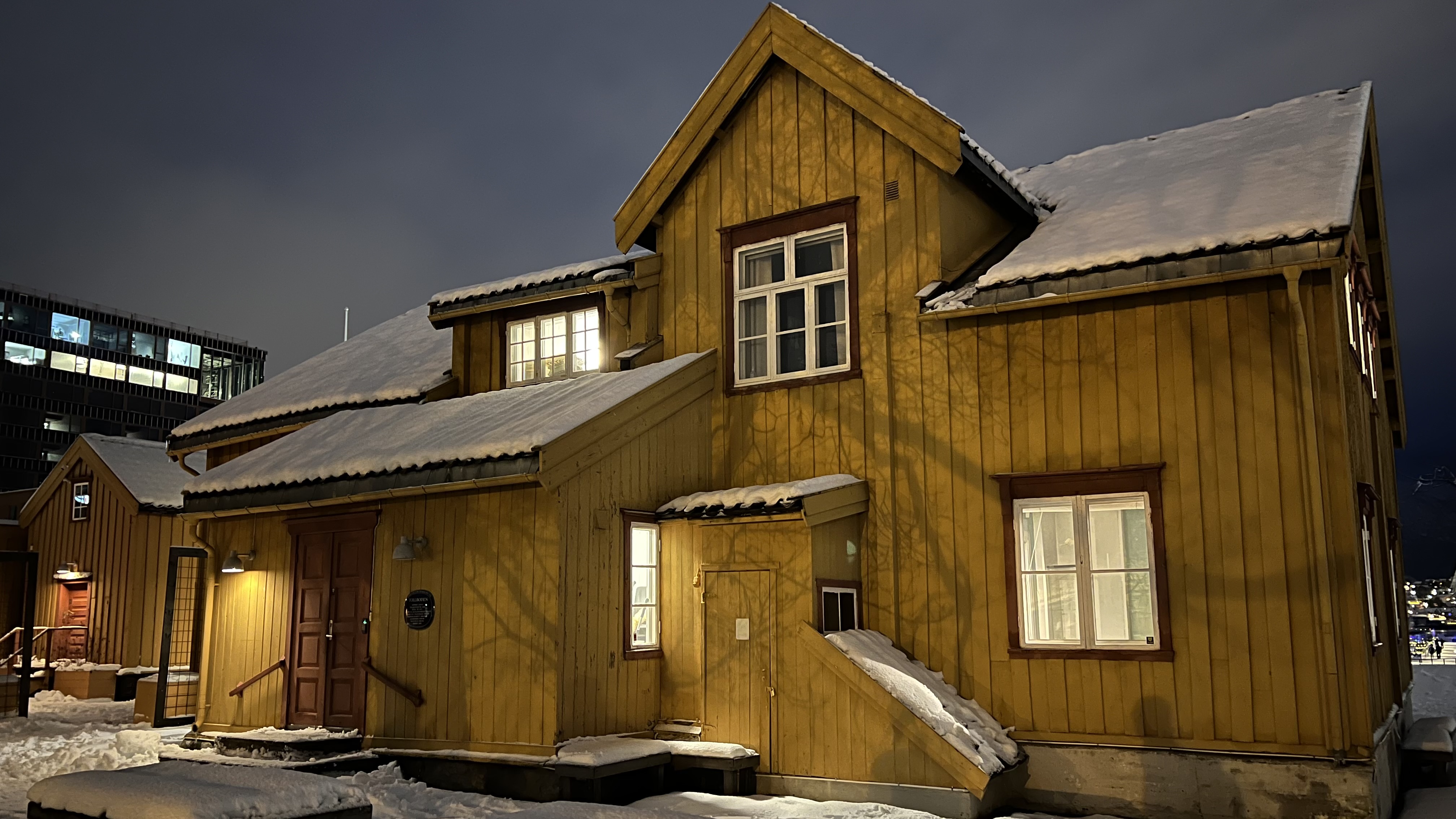Exchange Semester at Aalto University

In this report, I will share my experience of studying abroad in Finland at Aalto University during the fall semester of 2024. I will cover the application process, courses, and my overall experience of living in Finland.
Table of Contents
- Application and Preparation
- Housing and Dining
- Campus and Student Life
- Courses and Academics
- Activities in and around Helsinki
5.1. Sauna and Sightseeing
5.2. Nature
5.3. Food
5.4. Day Trips - Traveling
6.1. Finnish Mökki Culture
6.2. Baltic Countries
6.3. Stockholm (Pirates of the Baltic Sea)
6.4. Lapland - Useful Apps and Links
Note: This report reflects my personal experiences and recommendations during my exchange semester in 2024. None of the mentioned establishments or links are paid advertisements.
1. Application and Preparation
The application process is a two-stage procedure where one first has to apply to TU Darmstadt for one of the exchange spots, and after receiving one, submit an application to the partner university.
In the application at the TU, you can list your top five choices and prioritize them while explaining why you want to attend each university. As I already have been on exchange overseas before, I wanted to go to a university in Europe this time. I chose Aalto University in Finland as my first choice because of its excellent reputation in the field of computer science and its location in Helsinki, which is known for its high quality of life. Moreover, I have visited a friend doing an exchange semester there, and I was impressed by the university and the city.
The application process at Aalto University was more a registration than an application. The most important part was to choose courses and submit a learning agreement. After arriving in Finland another important step was to get the confirmation of arrival that is needed for the Erasmus+ grant.
2. Housing and Dining
I tried to get into student housing where you need to apply early to get a spot at AYY or HOAS. Unfortunately, I was not able to get a room in student housing, so I had to look for a private room. I found a room in a shared flat in central Helsinki, which was quite expensive but worth it. The flat was close to the university and the city center, so I could walk to most places. The public transport system in Helsinki is excellent, so I could also take the tram or metro if needed. I found the flat on the website housinganywhere, which feels like Airbnb for longer stays. Often you can also find flats in this Telegram group where students sublet their rooms or in this Facebook group.
Getting groceries in Helsinki is quite expensive, but fortunately, there are many student cafeterias on campus but also in the city where you can get good student-priced meals. These meals are subsidized by the Finnish government, so they are quite cheap compared to other restaurants (2.95€). They include a salad bar and a main course with meat or vegetarian options. Also included is a glass of water and a glass of milk - fins drink milk with every meal - and bread with different spreads. The quality of the food is quite good, and you put on the food yourself which means you can take almost as much as you want, as long as you can build a tower with it. Different cafterias have different opening times, but some of them are even opened in the late afternoon / evening and during the weekend (such as A-bloc in Aalto or Kaivopiha in Helsinki city center). To get student prices, you get a card during the orientation week that you need to show. Alternatively, you can also show your digital student card that you get when having an AYY membership. This membership is 32€ and is required if you have AYY housing, otherwise I would say it is useless.

Student Meal
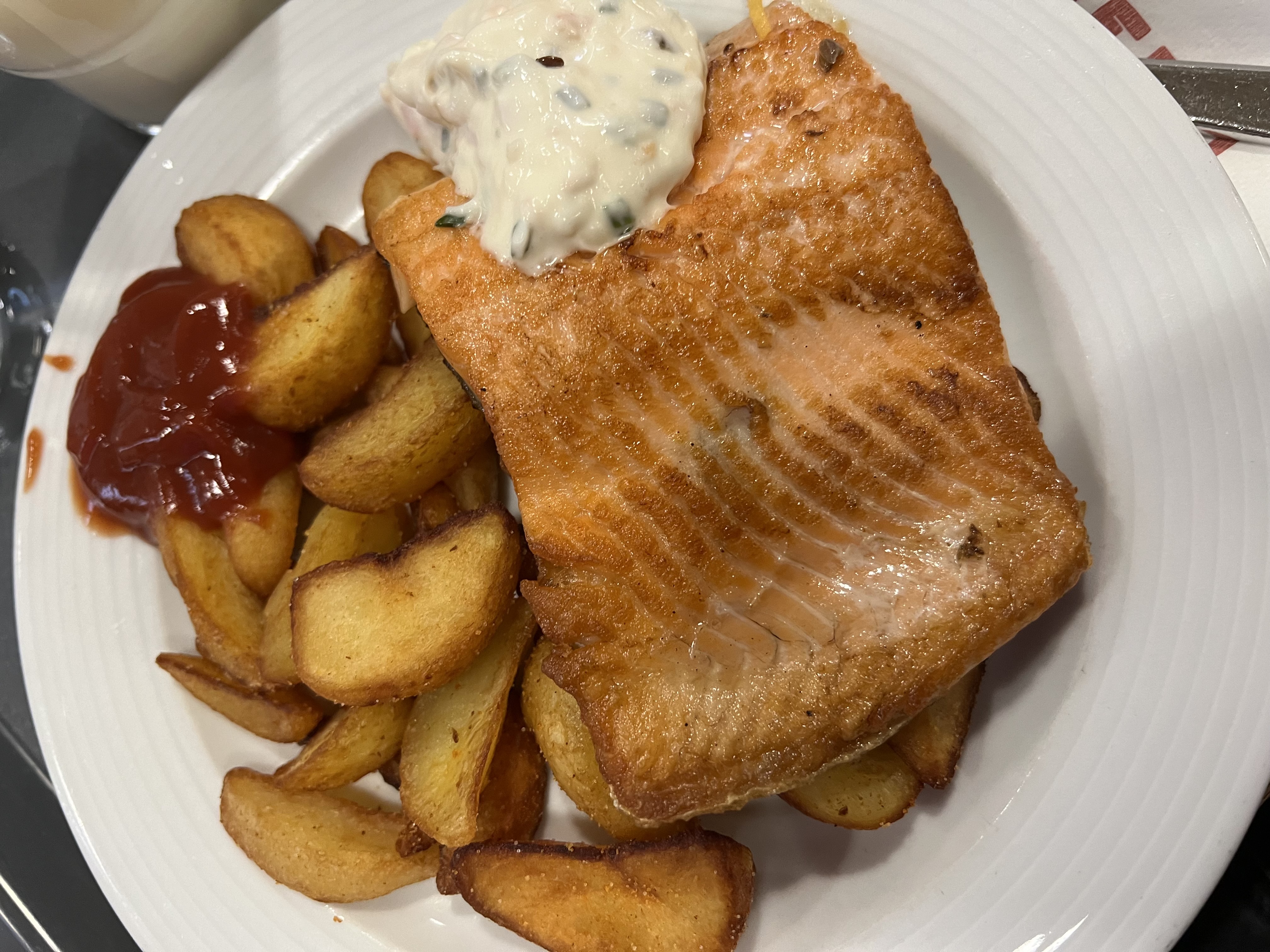
Salmon at Täffä
Some cafeterias also offer other dishes such as pizza (A-bloc) that are a little more expensive than the standard meal. Täffä, a student-run cafeteria in Aalto, for example offers salmon with potato wedges for 5.70€ every Friday. For a small additional cost (usually around 1€), you can also get a coffee along with the meal in most cafeterias.
3. Campus and Student Life
The Aalto University campus is located in Otaniemi, Espoo, approximately 10 minutes by metro from Helsinki city center. Situated close to the Baltic Sea, the campus is surrounded by nature with several walking paths along the coastline. The campus features a combination of traditional university buildings from the 1970s and modern architecture, most notably the contemporary Väre building with its distinctive glass facade that houses the School of Arts, Design and Architecture. At the heart of campus stands the Undergraduate Centre with its iconic fan-shaped auditorium, which is considered an architectural masterpiece. Another remarkable building is Dipoli, with its unique organic architecture that now serves as the university's main building and staff restaurant.
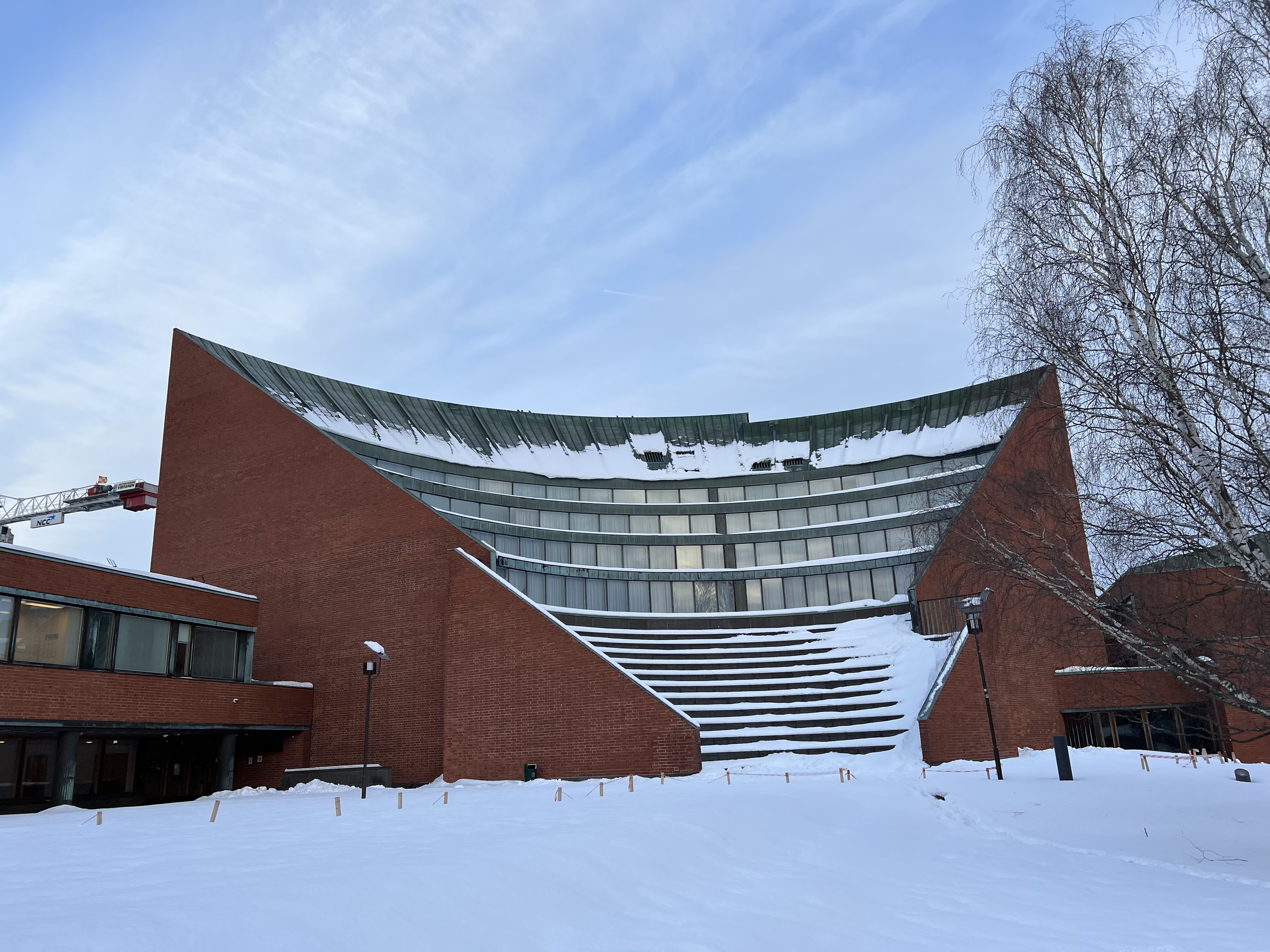
Undergraduate Center
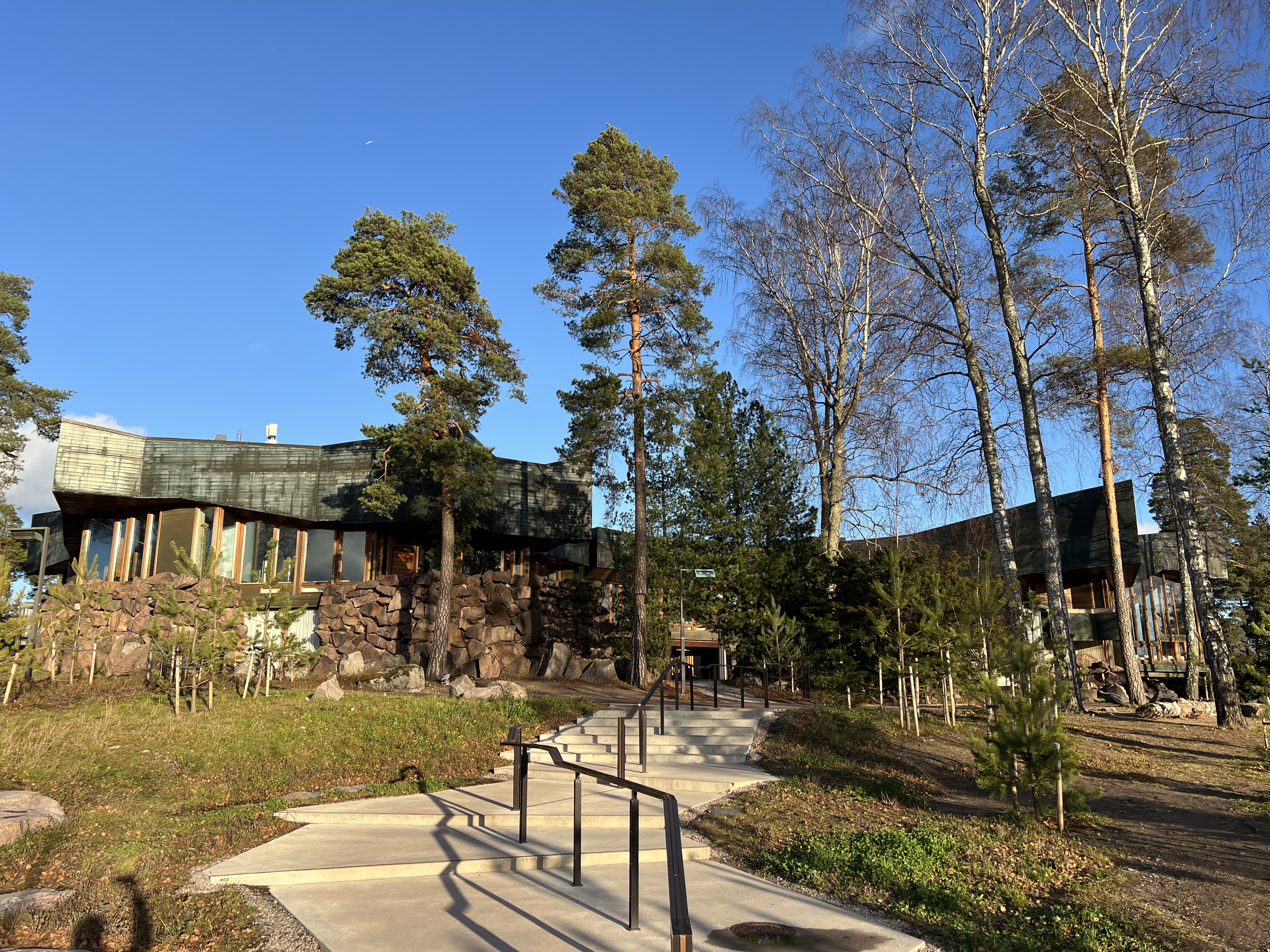
Dipoli
The central hub of student life is the modern A Bloc shopping center, which houses the main metro station, a K-Market grocery store, and various restaurants and cafes. This makes it convenient to grab lunch or get groceries between classes. Across campus, there are numerous specialized facilities for students who can easily book various rooms and spaces across campus through the online reservation system - from small group rooms to larger project spaces, many equipped with screens and whiteboards. The campus is well-equipped with modern learning facilities spread across different buildings. The Learning Centre, which includes the main library, provides extensive study spaces ranging from silent reading rooms to collaborative areas. For computer science students, the Computer Science building offers specialized computer labs and meeting spaces, however, this building is quite cold during winter.
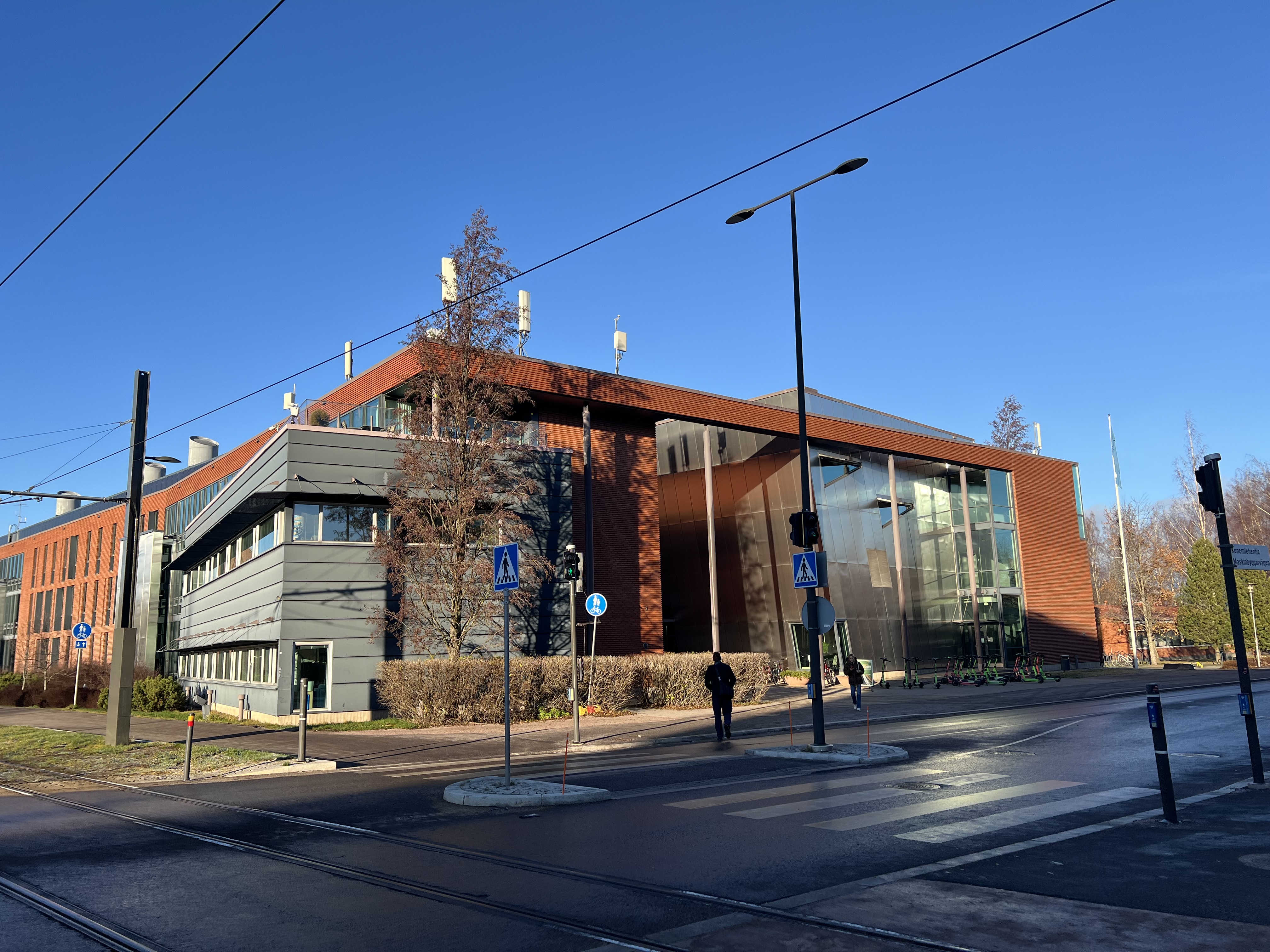
Computer Science Building
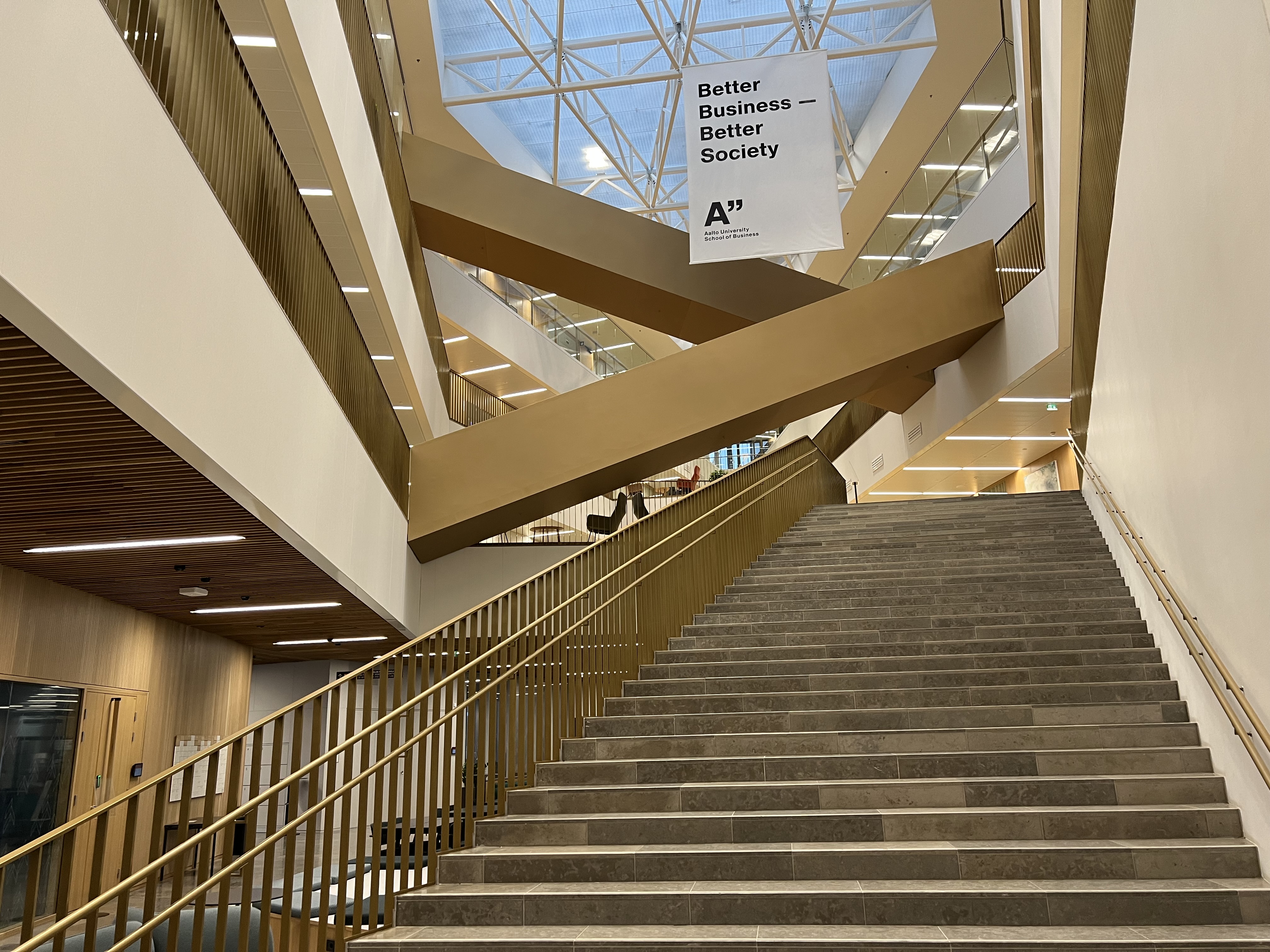
Business Building
A unique aspect of student life at Aalto are the student guilds, which are subject-specific student organizations that play a central role in academic and social life. Each major field of study has its own guild - for example, computer science students belong to Tietokilta (Information Guild). These guilds maintain their own spaces called 'guild rooms' where students can relax, study, or socialize with their peers. Guilds organize various events throughout the year, from academic workshops to social gatherings, and particularly famous are their 'sitsit'. They also help with academic matters by providing old exam materials and advice from older students. New students are assigned older student tutors through their guilds, helping them integrate into university life. The guilds are also recognizable by their distinct overalls - each guild has its own color (Tietokilta's being black), and students wear these overalls to various student events and parties.
Sitsits are traditional academic dinner parties that are a cornerstone of Finnish student culture. These formal three-course dinners follow specific etiquette rules and are filled with academic songs (called 'drinking songs' although drinking is optional). During a sitsit, you sit at long tables with assigned seating. The event is led by 'songmasters' who guide through the evening, announce songs, and ensure everyone follows the rules - for example, you need permission to leave your seat, and speeches or 'table bombs' (prepared entertainment) can only be performed at specific times. The songs are sung in Finnish, Swedish, and English, with song booklets provided, and range from traditional academic songs to more humorous ones. While sitsits can seem quite formal with their rules and dress code (usually smart casual or themed), they are actually very fun and social events where the rules are part of the entertainment. The evening typically continues with an afterparty, where the formal atmosphere gives way to more relaxed socializing. For exchange students, attending a sitsit is a must-do experience to truly immerse in Finnish student culture.
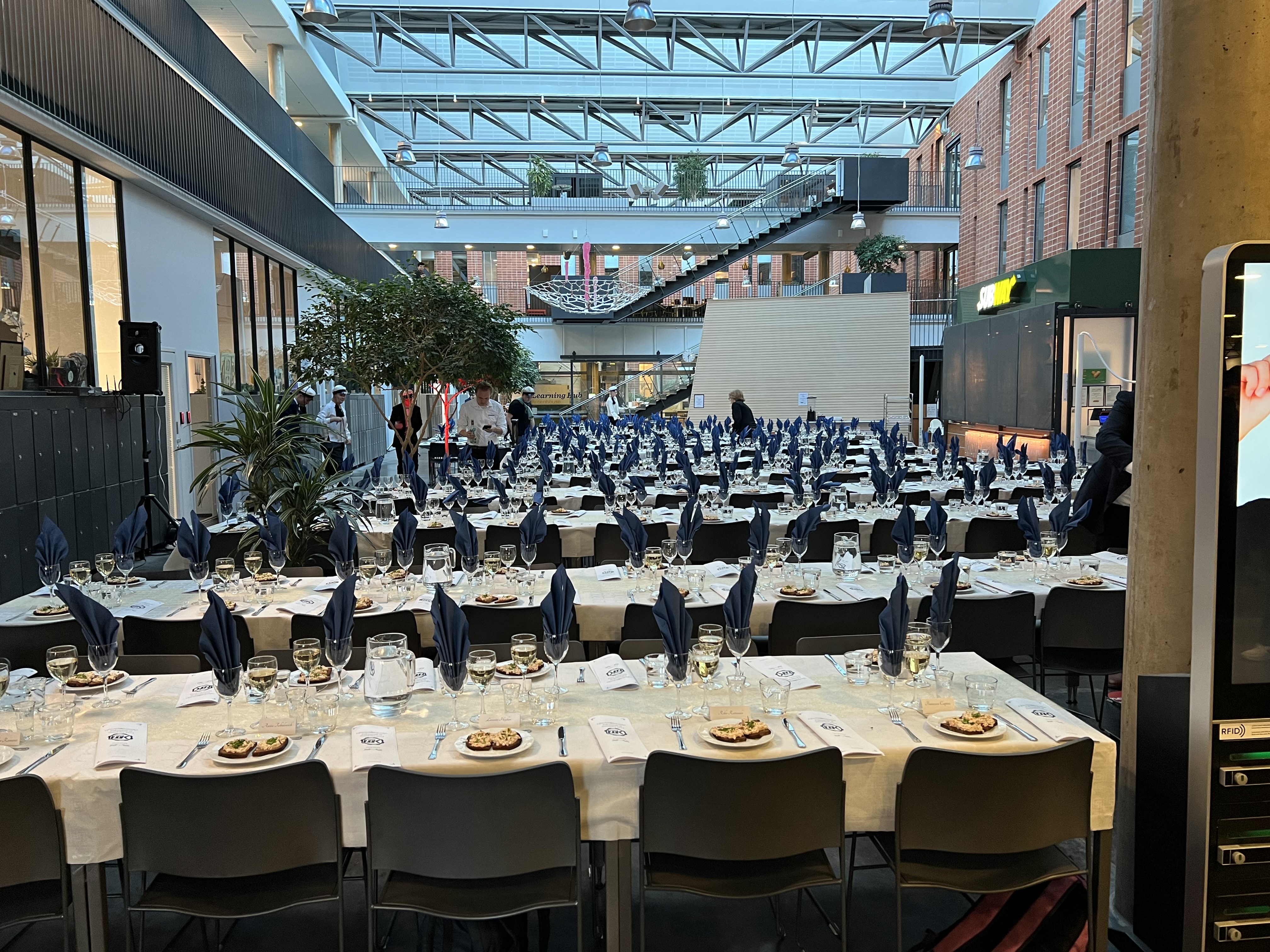
Sitsit
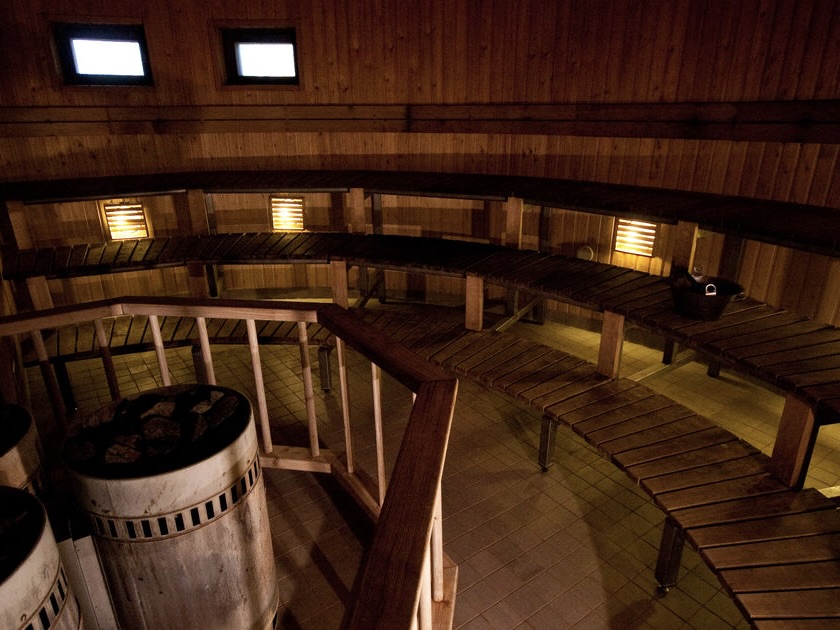
Rantasauna (img-src)
Sports and sauna are integral parts of student life at Aalto. Unisport, the university sports service, offers extensive facilities and activities across campus. For a reasonable semester fee students get unlimited access to all Unisport facilities, not just in Otaniemi but also at other locations across Helsinki. True to Finnish culture, many student events end with a sauna session. The campus has several sauna facilities that student groups can reserve, including the beautiful Rantasauna (Beach Sauna) right by the sea. Whether it's after sports, guild events, or just a regular weekday evening, gathering with friends in the sauna is a quintessential part of the Finnish student experience.
4. Courses and Academics
The academic structure at Aalto University differs notably from TU Darmstadt. As a computer science exchange student, I had to take at least 70% of my credits in computer science courses. The teaching style emphasizes continuous learning through assignments and group work rather than traditional final exams. While this means a higher workload during the semester compared to TU Darmstadt, it also means less stress during exam periods as there are fewer high-stakes exams. Unlike what I am used to, exams are often conducted in dedicated computer rooms.
Course delivery formats vary significantly. Some courses are entirely self-study online modules, while others feature traditional in-person lectures and workshops. Being particularly interested in AI and having already completed foundational courses at TU Darmstadt, I focused on specialized applications: Machine Learning in Biomedicine, Marine Data Analysis, and Modeling Biological Networks. I also took advantage of Aalto's self-study options with Introduction to Large Language Models and Software Engineering with Large Language Models.
One of Aalto's distinguishing features is its strong entrepreneurial ecosystem. I complemented my technical courses with several startup-focused modules: Starting Up, Entrepreneurship Essentials, and Digital Business Management. These courses provided valuable insights into the startup scene and practical business knowledge. For international students, Aalto offers a unique 1 ECTS course called "Get to Know Finland," which provides an excellent introduction to Finnish culture and helps students better understand their host country. This mix of technical, entrepreneurial, and cultural courses made for a well-rounded exchange experience.
5. Activities in and around Helsinki
Helsinki and its surroundings offer a rich variety of cultural experiences, outdoor activities, and unique Finnish traditions.
5.1. Sauna and Sightseeing
One quintessentially Finnish experience is the sauna, and Helsinki offers several outstanding options. Allas Sea Pool, located in the heart of the city near the Market Square, provides a unique combination of heated pools and saunas with stunning views of the Baltic Sea and harbor. For a more authentic local experience, Sompasauna offers a distinctive community-focused atmosphere that embodies the traditional Finnish sauna spirit. Unlike commercial saunas, visitors actively participate in the experience by chopping wood and stoking the fire to heat the sauna themselves. The sauna's location directly on the seafront adds another layer to the experience, allowing visitors to follow the cherished Finnish tradition of combining hot sauna with cold water swimming. This is particularly spectacular during winter months when you can take dip into a hole cut into the frozen sea.
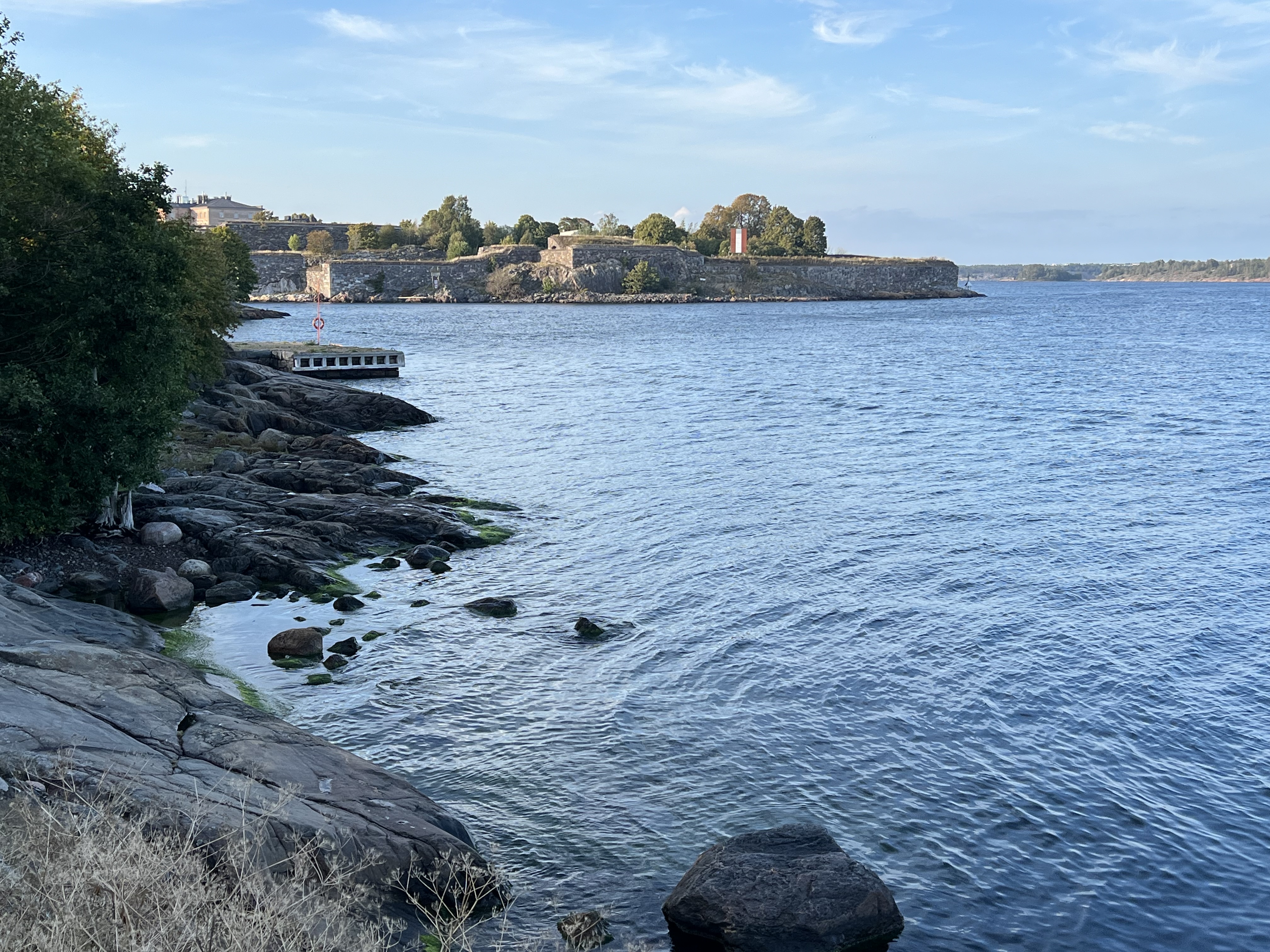
Suomenlinna Shore
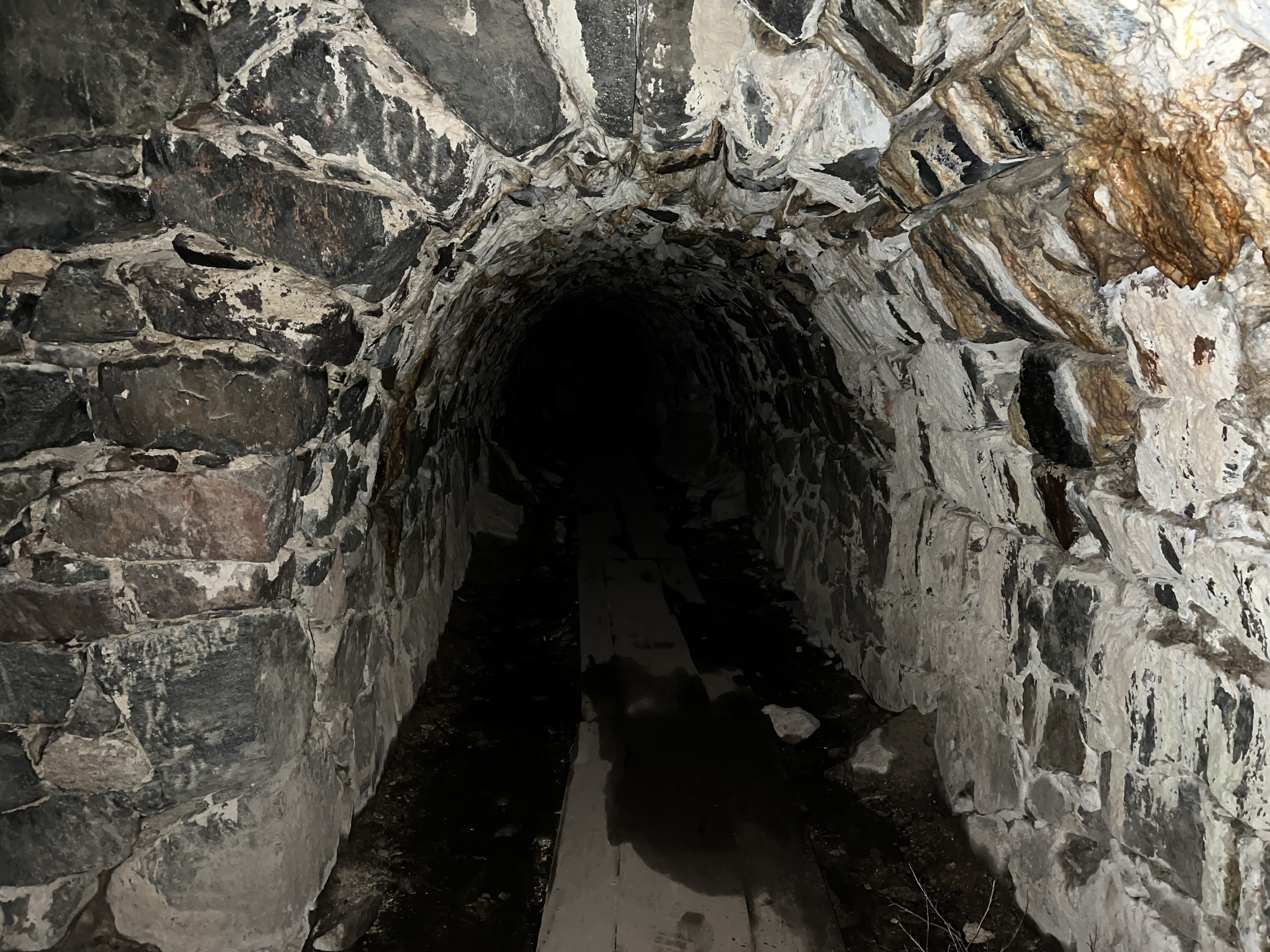
Suomenlinna Tunnel
Suomenlinna Fortress is a must-visit destination accessible by a short ferry ride (included in the local public transport) from the Market Square. It is located on a group of islands and offers a unique blend of history and nature. After walking though the fortress you can take a nice walk on the walls along the sea that also have some old canons. Very iconic for this fortress are also it's tunnels that can be explored. Helsinki also has a variety of museums, with the Ateneum Art Museum (the Finnish National Gallery), Amos Rex (a modern art museum), and the Helsinki City Museum being particularly noteworthy. For a more traditional experience, the Seurasaari Open-Air Museum offers a glimpse into Finnish history with its collection of old buildings and artifacts. It is located on the equal-named island that is also well suited for a walk. The Senate Square, the Cathedral and the Uspenski Cathedral are also worth visiting. The Oodi Library is a modern architectural masterpiece and a great place to study or relax. It is equipped with a variety of workspaces, a café, and a rooftop terrace with a view of the city, as well as with rooms for different activities such as gaming or professional music production. In December, the city hosts a small and cozy Christmas Market in the city center, at the foot of the Cathedral where you can for example enjoy the typical Finnish Glögi (mulled wine). Another great activity in winter is ice-skating. There are many sites where skates can be rented and sometimes it is also possible to rent ice hockey equipment too.
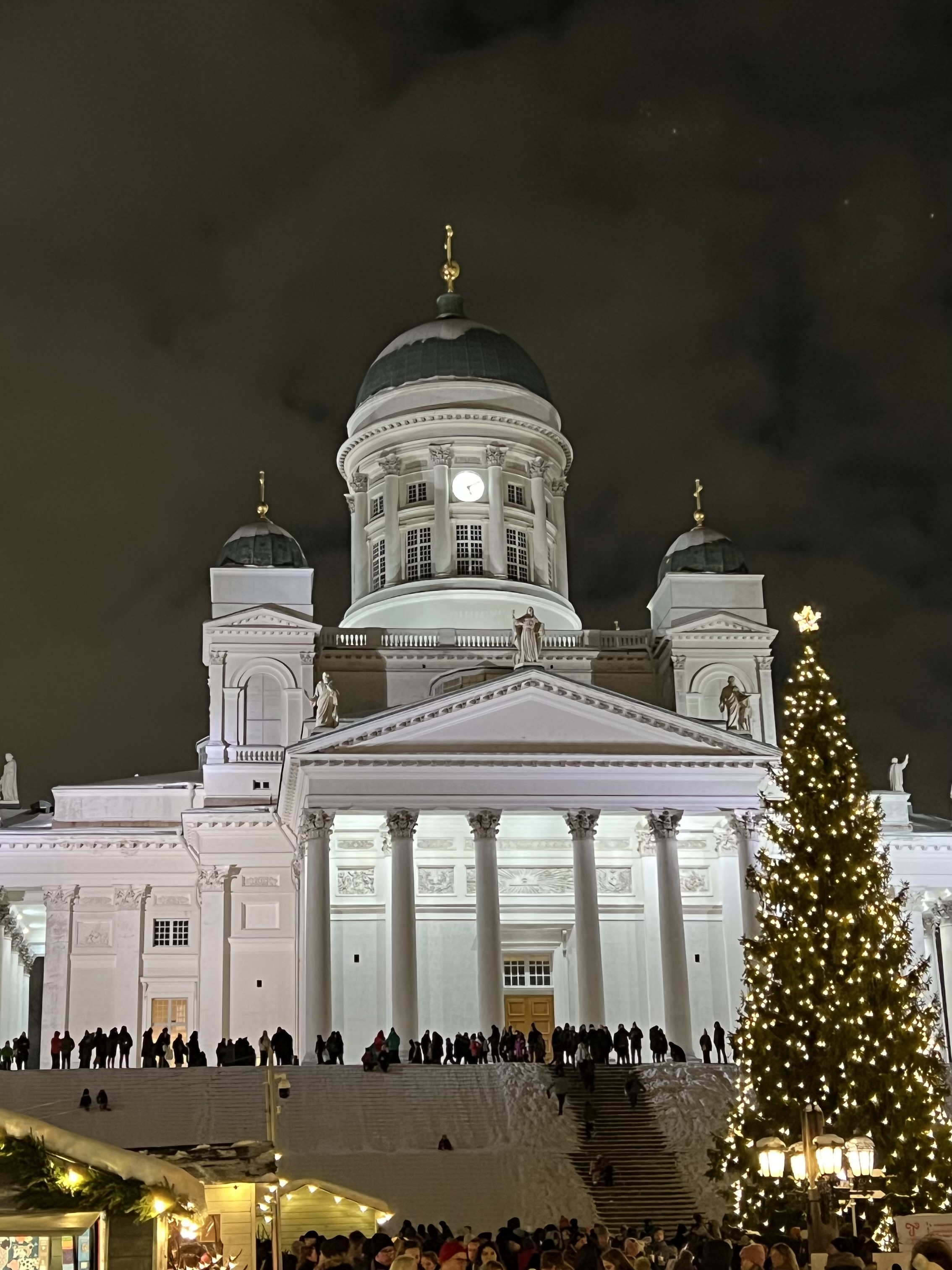
Helsinki Cathedral

Uspenski Cathedral
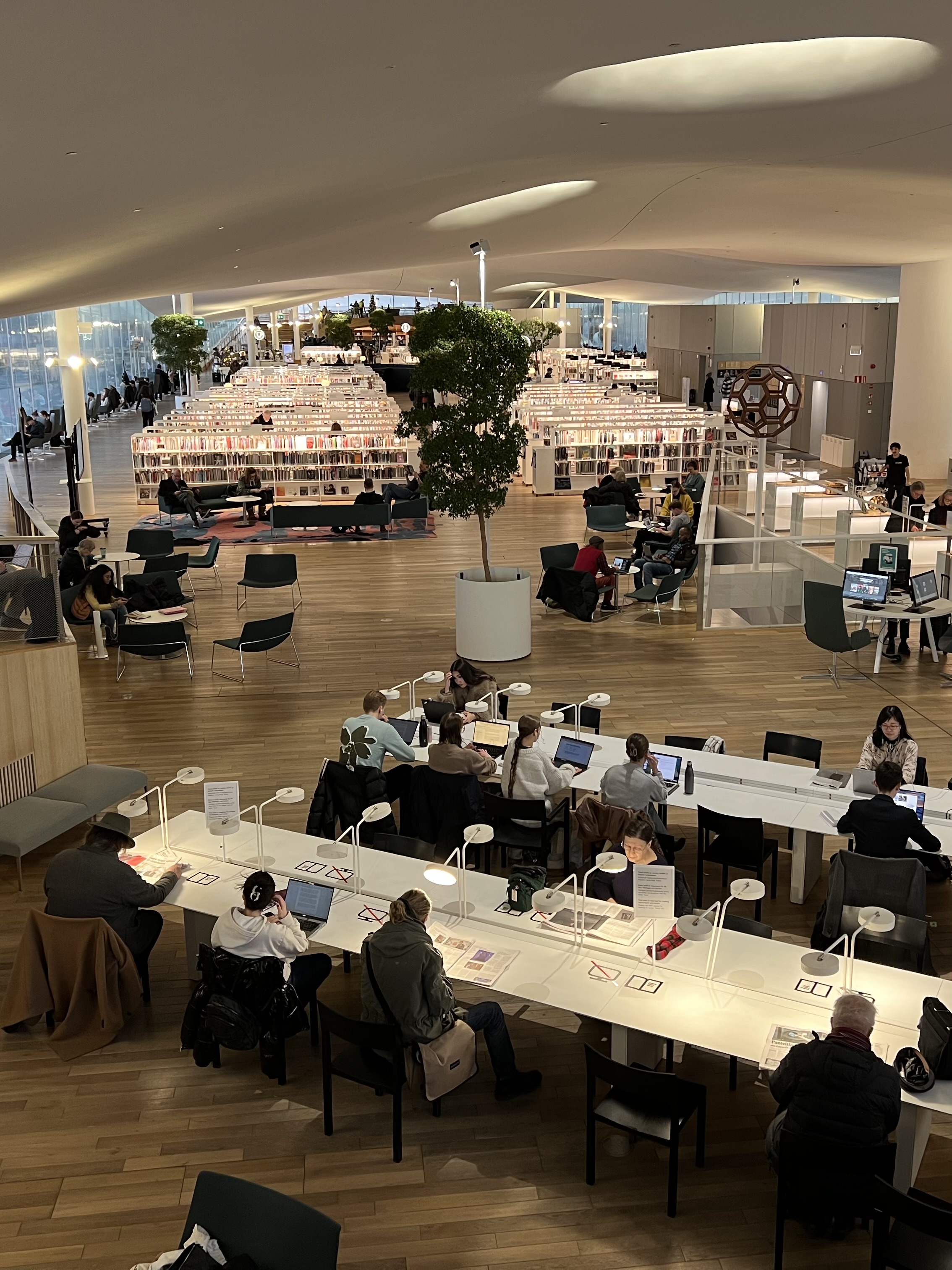
Oodi Library
5.2. Nature
Nature is easily accessible from Helsinki. The Lammassaari Nature Reserve is reachable by public transport and offers walks on wooden boardwalks through the wetlands. Along the way one can find may bird-watching towers frequented by enthusiasts with impressive telephoto lenses. OOne of the islands accessible via these boardwalks is home to a flock of sheep. If you want to take a selfie with one of them, I recommend bribing them with some food :) (grass or leaves only, no processed food). For more extensive hiking adventures, both Nuuksio National Park and Sipoonkorpi National Park are just a short bus ride from the city. During warmer months, I recommend packing swimwear, as it is really refreshing to jump into a small lake hidden in the forest. While Nuuksio is characterized by its tranquil lakes, Sipoonkorpi offers dramatic trails winding over exposed bedrock. Both parks are prime locations for foraging berries and mushrooms in autumn, an activity permitted under Finland's "everyman's right" (jokamiehenoikeus) which extends to most national parks. A quintessential Finnish outdoor experience is gathering around a campfire at one of the many designated sites. These well-maintained areas come equipped with everything needed - a fireplace, woodshed, and basic tools like saws and axes. It's a cherished tradition to roast sausages over the open fire while surrounded by nature.
5.3. Food
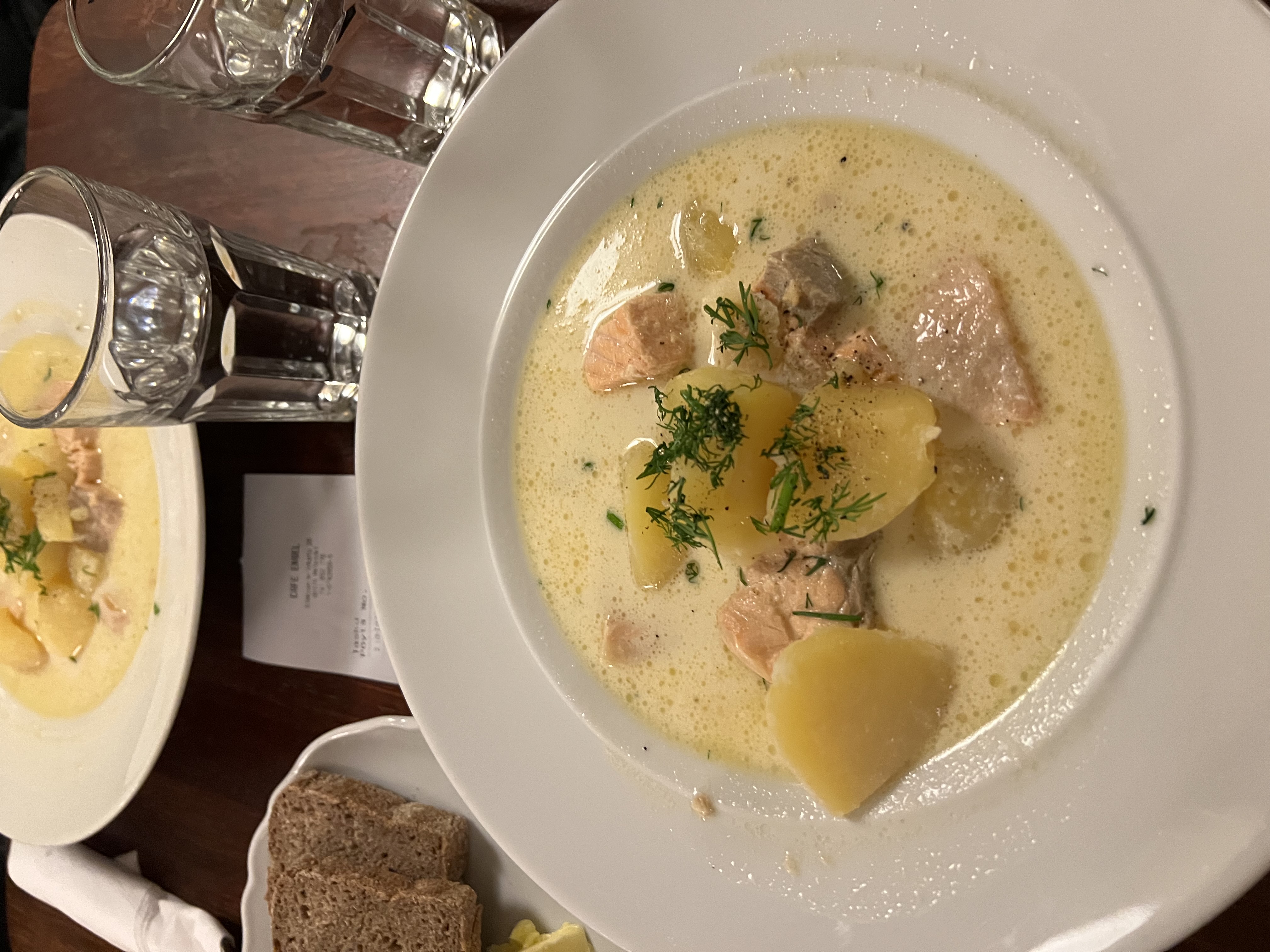
Salmon Soup
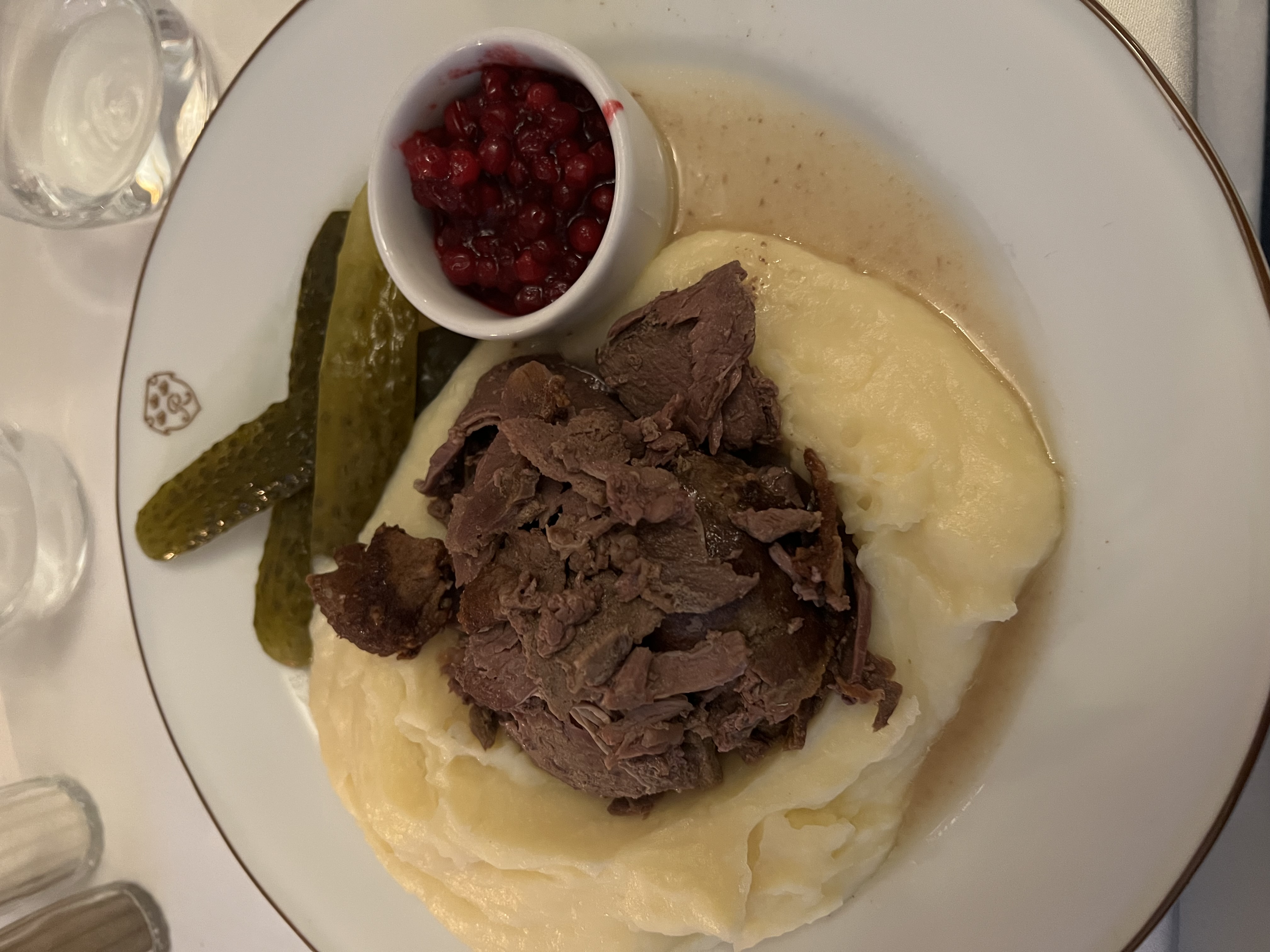
Reindeer
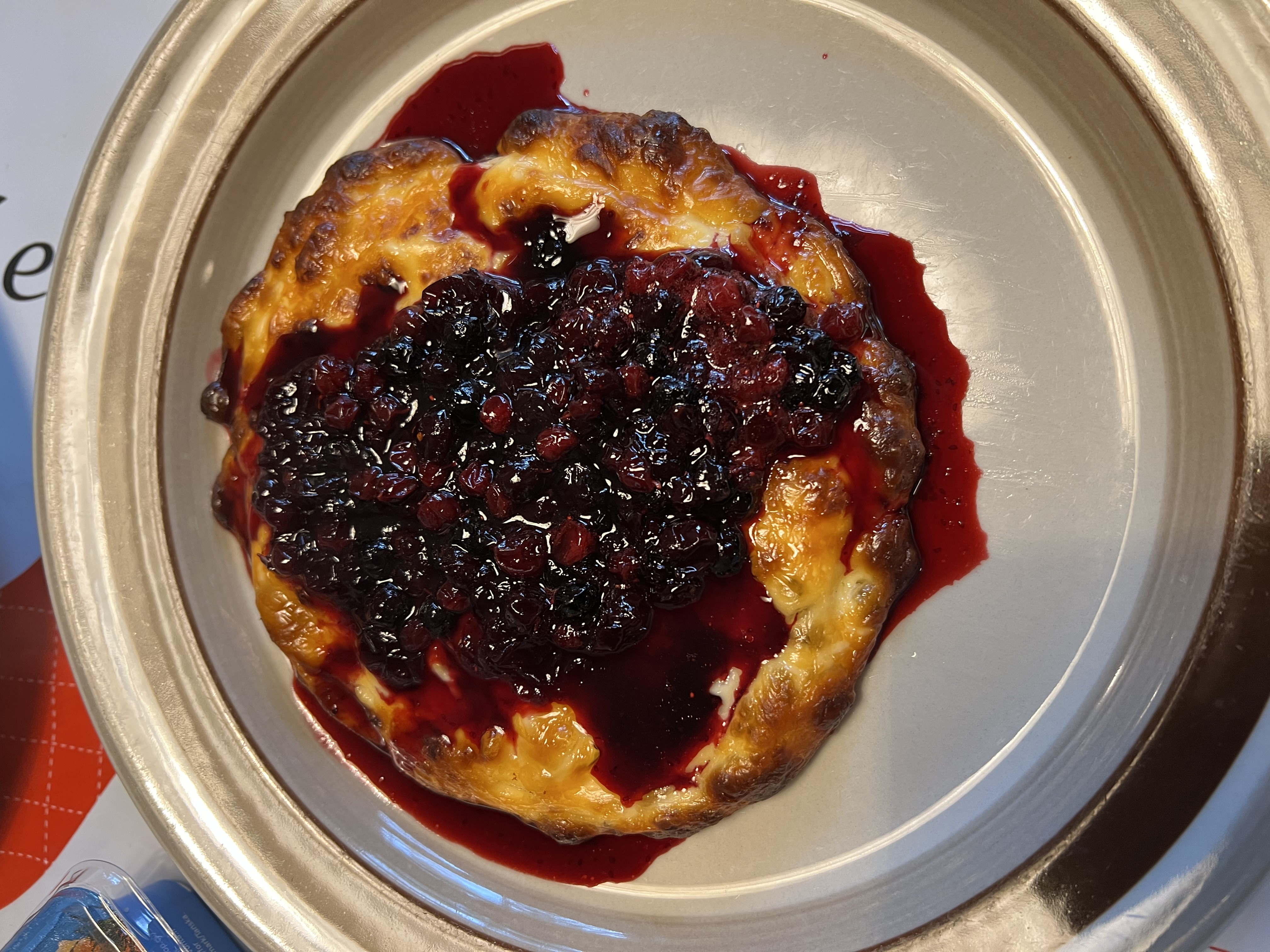
Bread Cheese with Berries
Helsinki's food scene offers many affordable dining options despite the generally high cost of living. The city has several all-you-can-eat sushi restaurants, particularly around the Kamppi area, where you can enjoy quality Japanese cuisine for around 15€ during lunch hours. The historic Old Market Hall (Vanha Kauppahalli), nestled by the harbor, is a delightful destination for sampling traditional Finnish delicacies. The hall houses various vendors selling local specialties like smoked fish, reindeer meat, fresh pastries, and the famous Finnish salmon soup. Among these offerings, I particularly enjoyed the reindeer quiche, which offers a unique taste of Finnish cuisine. For those seeking the perfect salmon soup, Café Engel (16.5€, Nov 2024), situated right at Senate Square, serves an excellent version of this Finnish classic. When craving authentic Finnish dishes, for example reindeer, I can recommend Ravintola Kolme Kruunua. A local delicacy worth trying is leipäjuusto (Finnish bread cheese), readily available in any supermarket. This squeaky cheese is best enjoyed warm from the oven or pan, traditionally served with fresh berries (self-picked if you're fortunate enough to go foraging) or with cloudberry or cranberry jam for a true taste of Finnish cuisine.
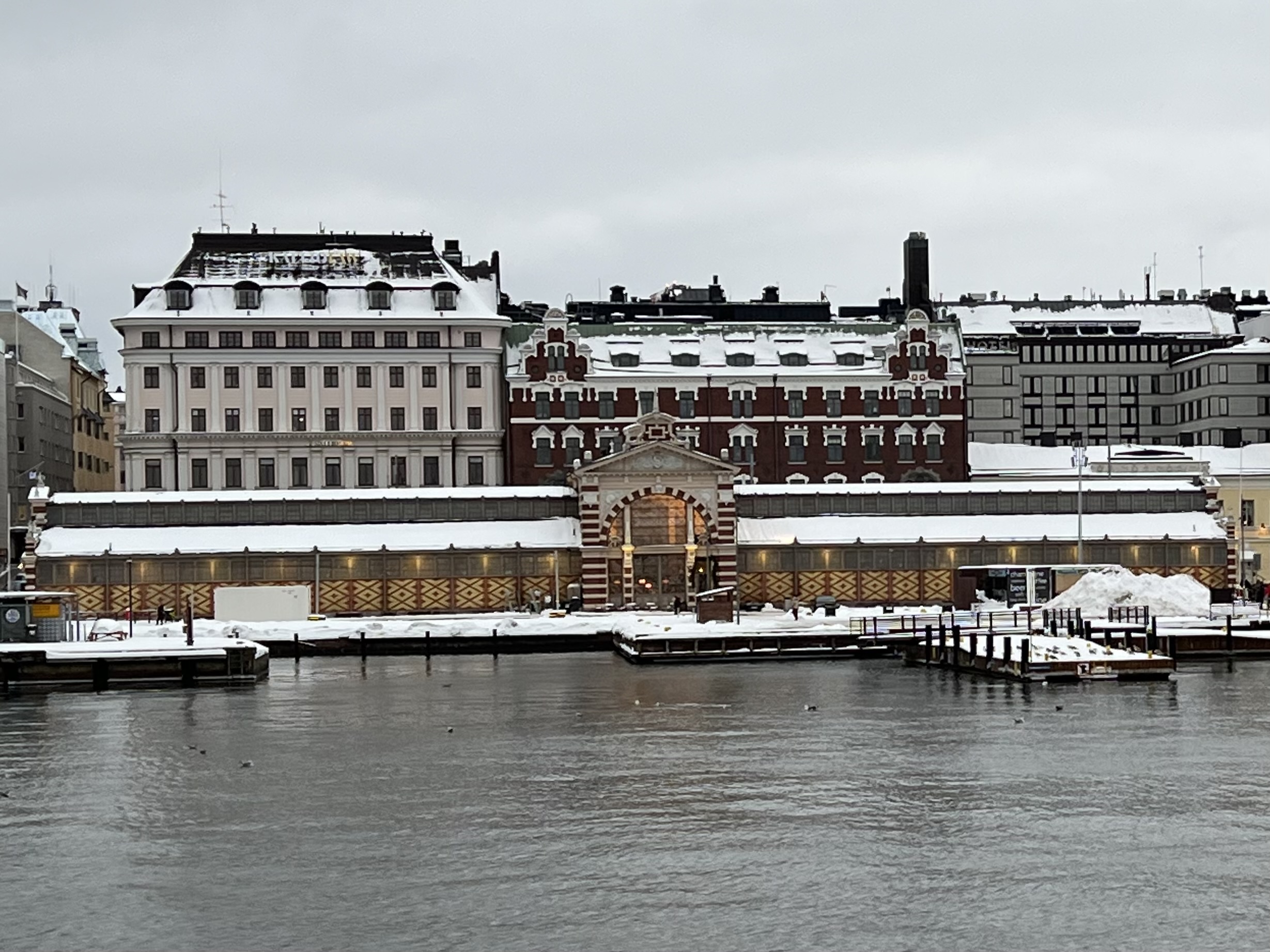
Helsinki Old Market Hall
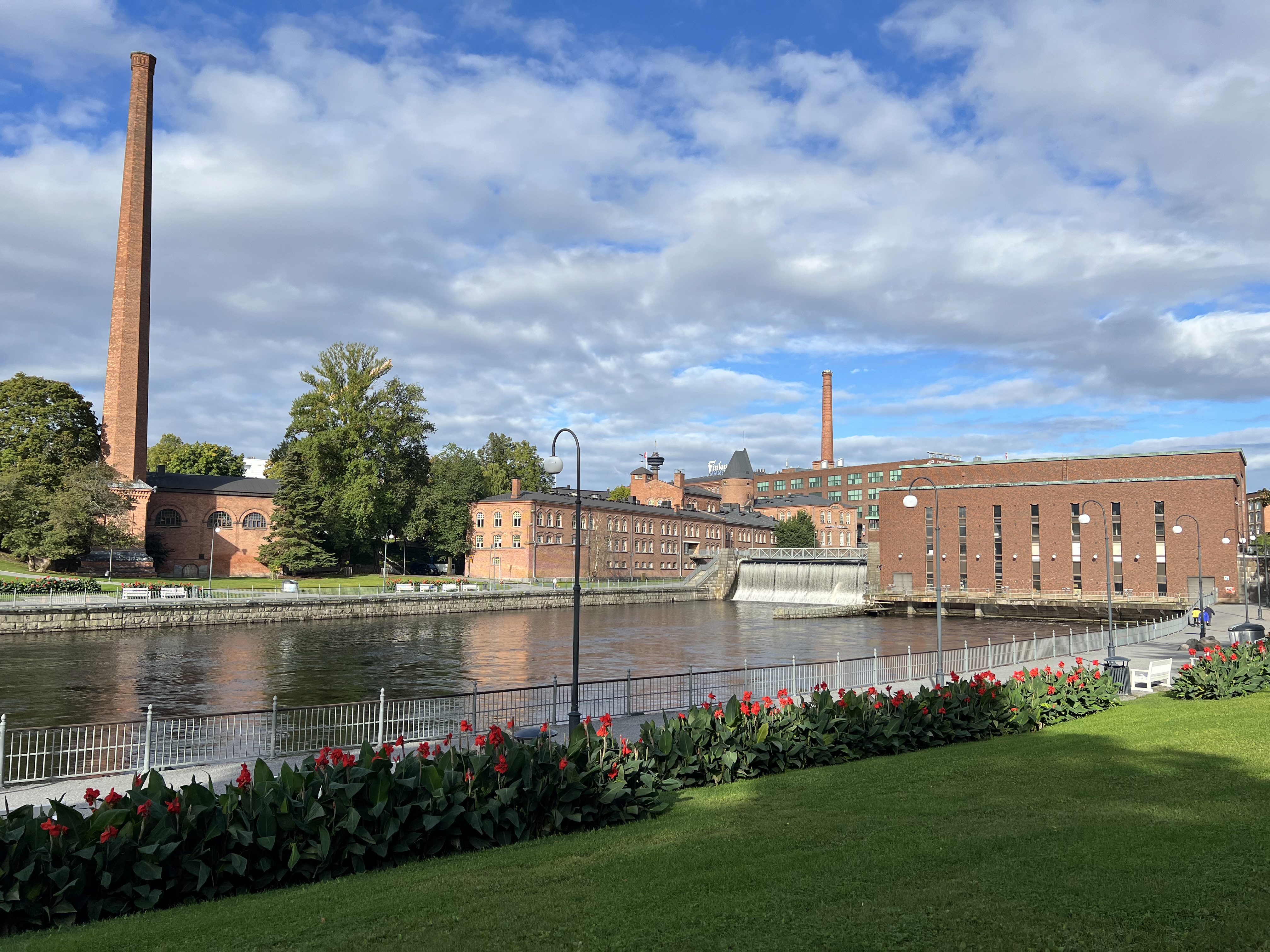
Tampere
5.4. Day Trips
For those looking to explore beyond Helsinki, several cities are easily accessible by public transport. Porvoo, one of Finland's oldest towns, is just an hour away by bus and makes for a perfect day trip. Its well-preserved old town features iconic red wooden shore houses and cobblestone streets. The trip costs about 12€ with a student discount, and buses run regularly from Helsinki's central bus station. Tampere, Finland's second-largest city, is easily reached by train in about two hours. Known for its industrial heritage, the city offers a different perspective on Finnish urban life. The red-brick factories converted into museums, shops, and restaurants create a unique atmosphere.
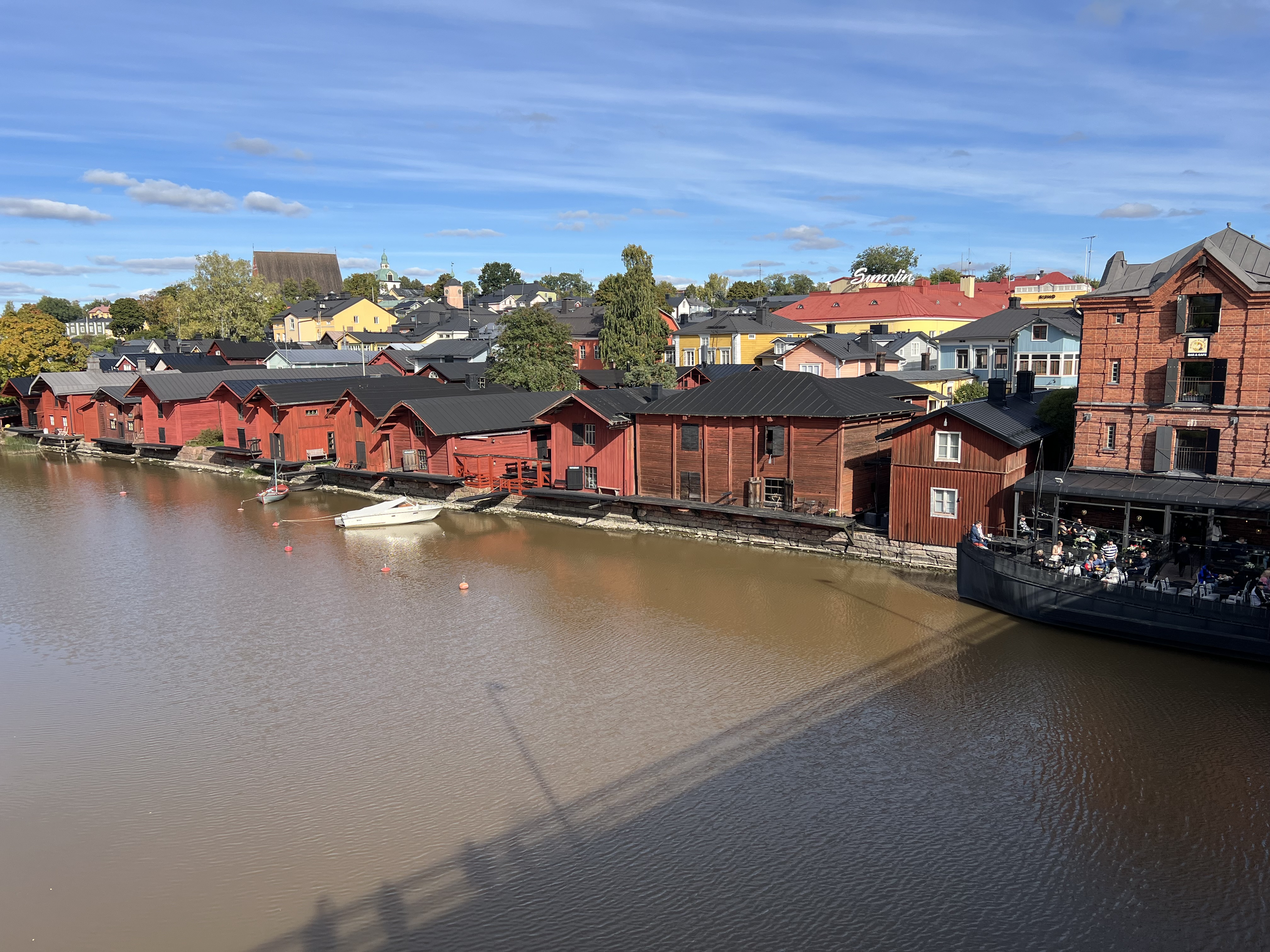
Typical red houses in Provoo
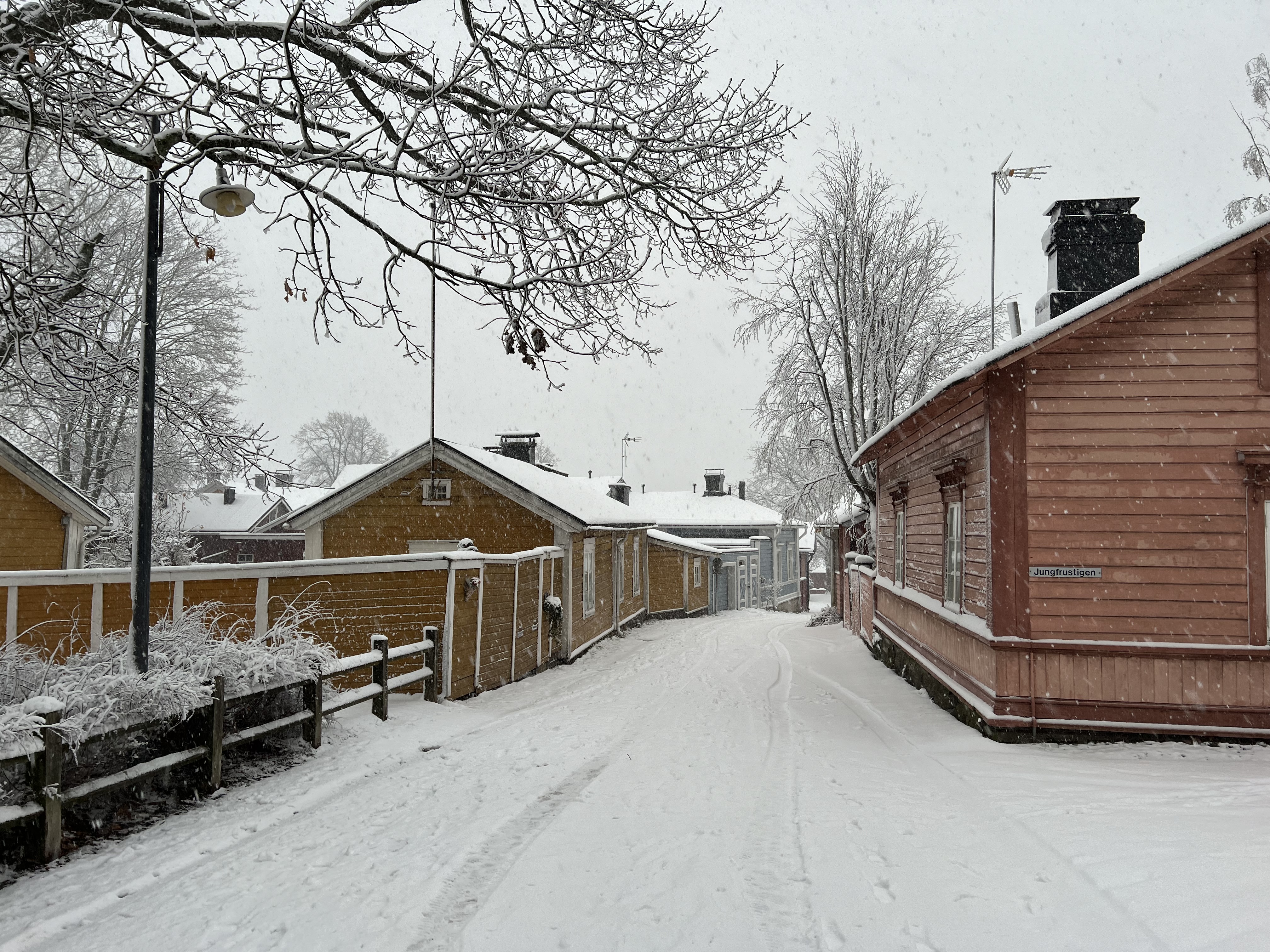
Street in Porvoo
Tallinn can be reached by ferry from Helsinki in about 2 hours for around 20€ round trip, with several ferry companies operating daily routes. The old town of Tallinn is very beautiful with its medieval buildings and narrow cobblestone streets. The city's highlights include the panoramic viewpoints at Toompea Hill, the impressive Alexander Nevsky Cathedral, and the medieval Town Hall Square (Raekoja plats). The reason for many Finnish students to visit Tallinn on a regular basis, however, is the cheap alcohol. For learning more about the history of the city, I recommend looking for a guided walking tour. These are usually for free and only ask for a tip at the end.
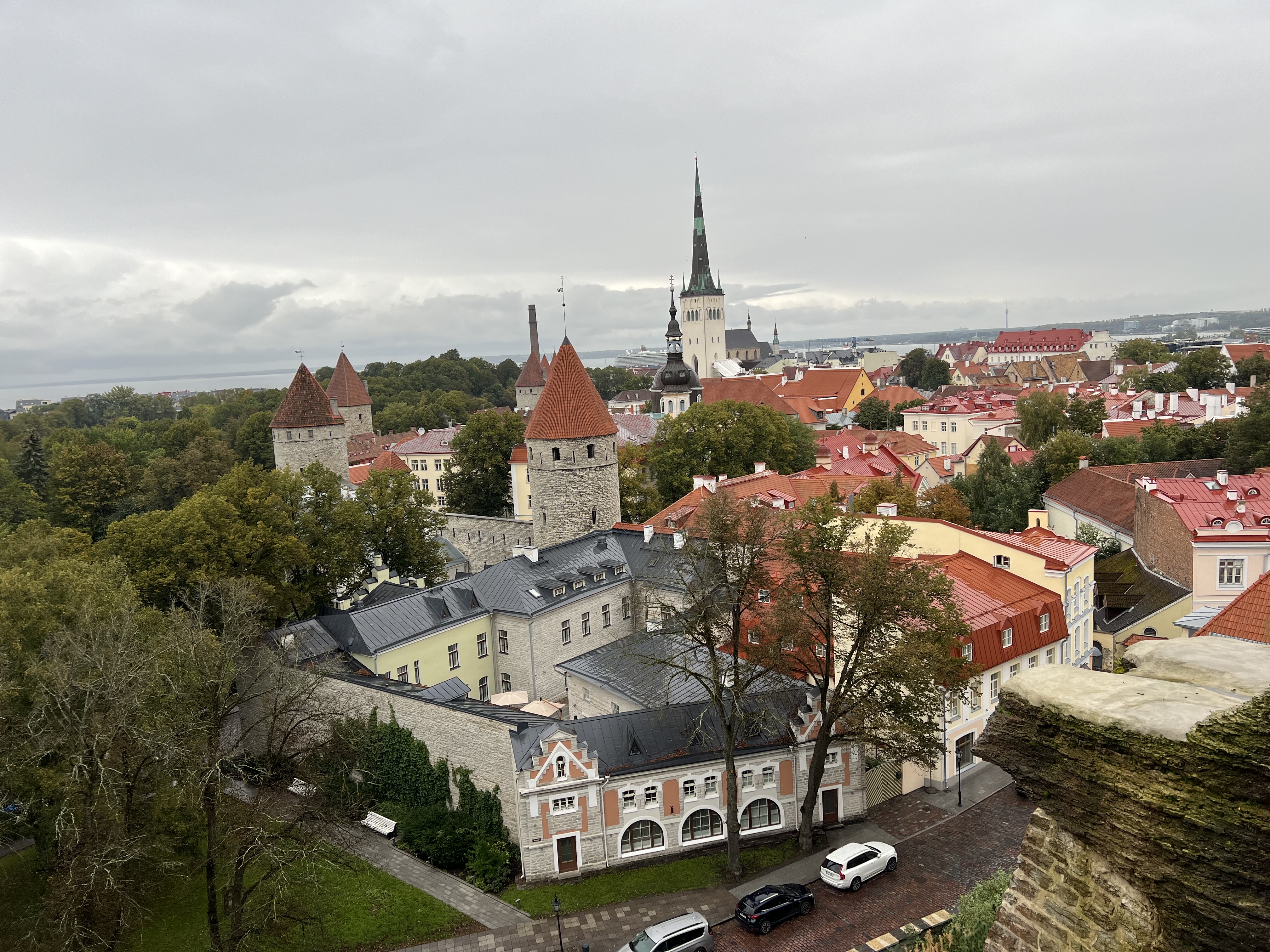
Patkuli Viewing Platform in Tallin

Tallin City Wall
6. Traveling
6.1 Finnish Mökki Culture
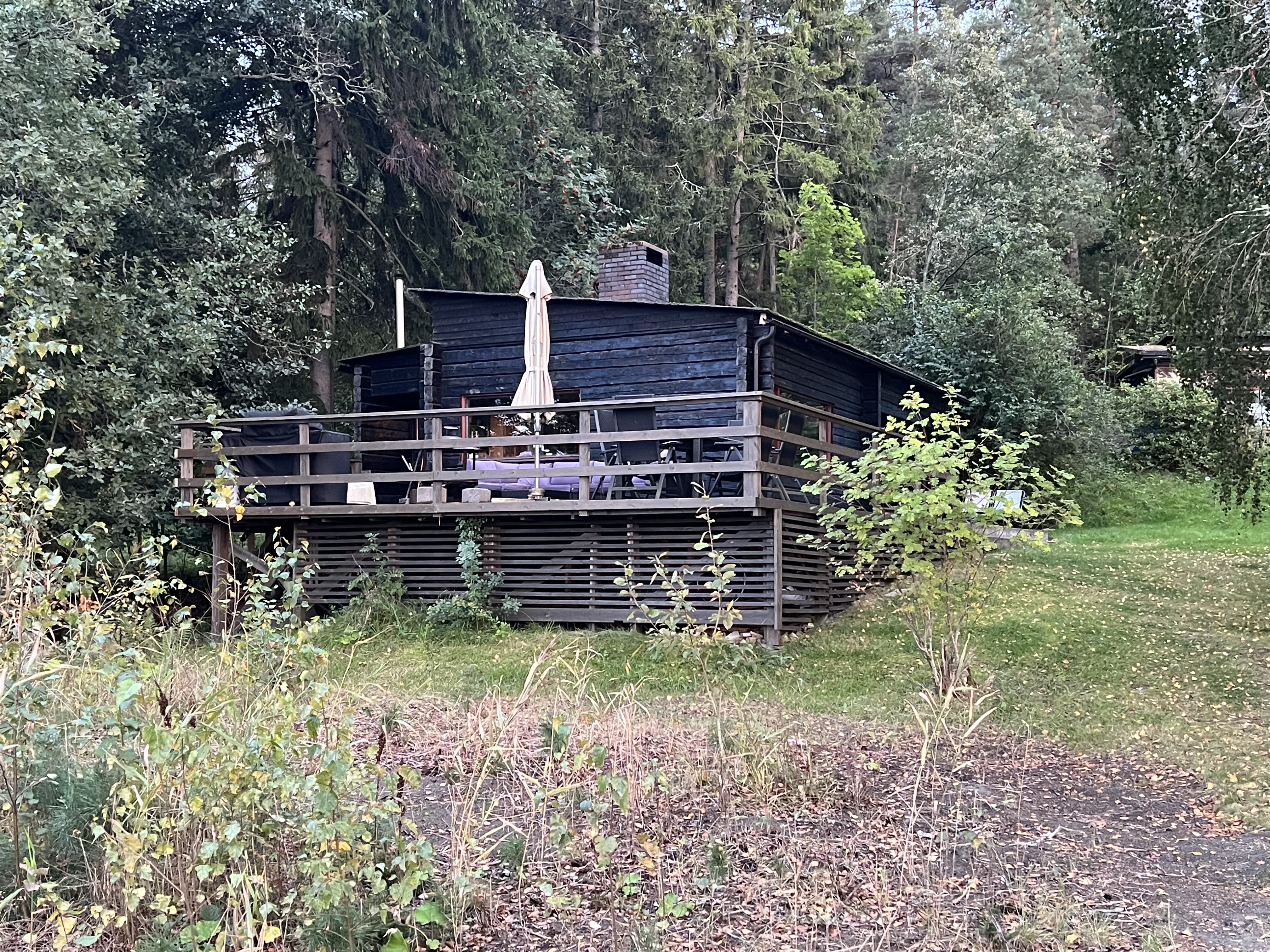
Mökki near Turku

Mökki near Sysmä
A quintessential part of Finnish lifestyle is the mökki (summer cottage) tradition, where families retreat to countryside cottages for weekends and holidays. These mökkis are typically situated by lakes in secluded locations, offering a perfect escape from urban life. During my exchange semester, I had the opportunity to experience this tradition firsthand, staying at different mökkis four times with friends.
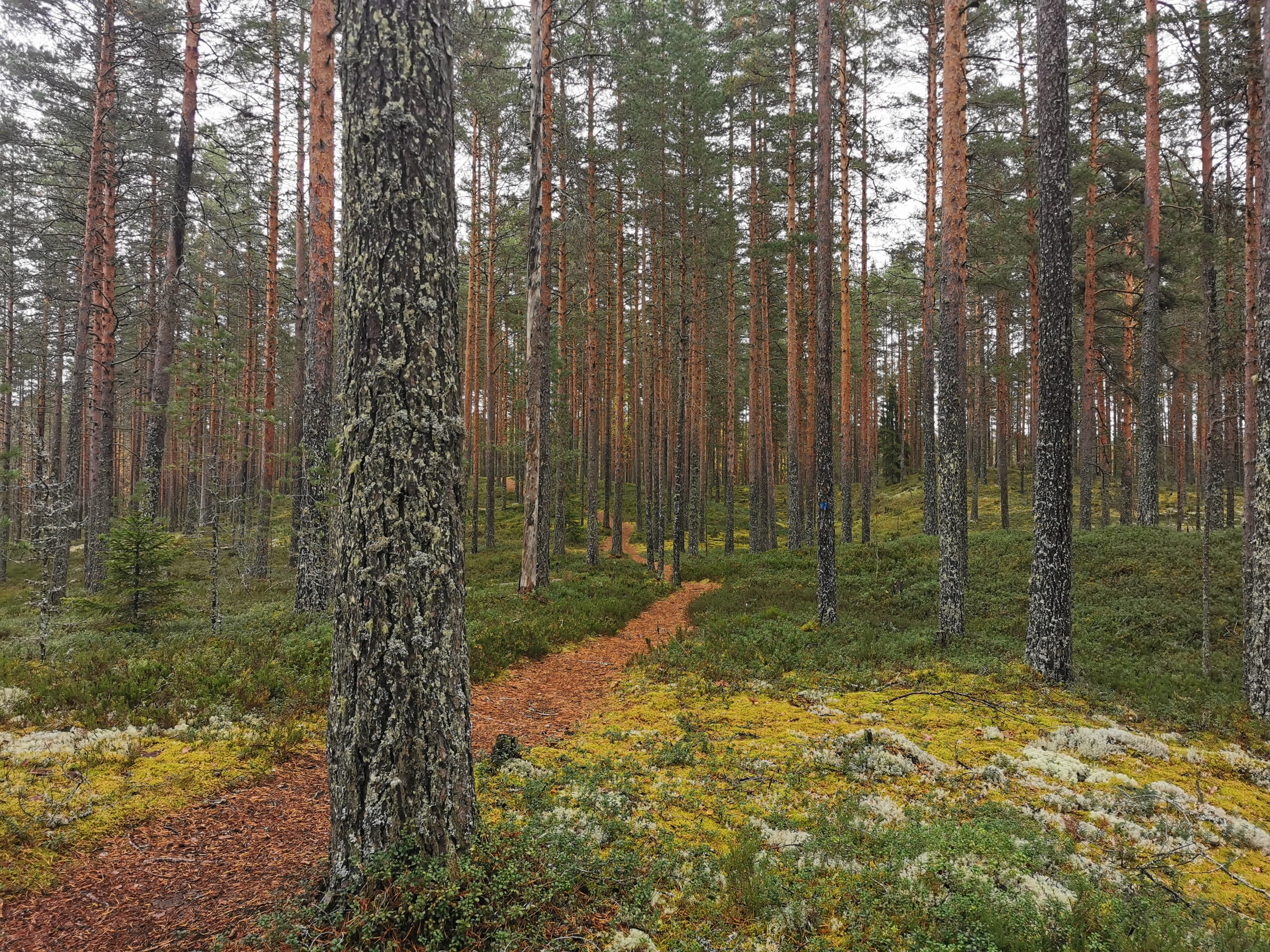
Leivonmäki Nationalpark

Campfire
Most mökkis can be booked through platforms like Airbnb, with prices varying significantly based on amenities. Our first mökki experience taught us to carefully check the facilities beforehand - while some cottages offer modern comforts, others maintain a more traditional approach with outdoor toilet cabins and no running drinking water. Basic but comfortable mökkis can be found for less than 100€ per night, making them an affordable option for group trips.
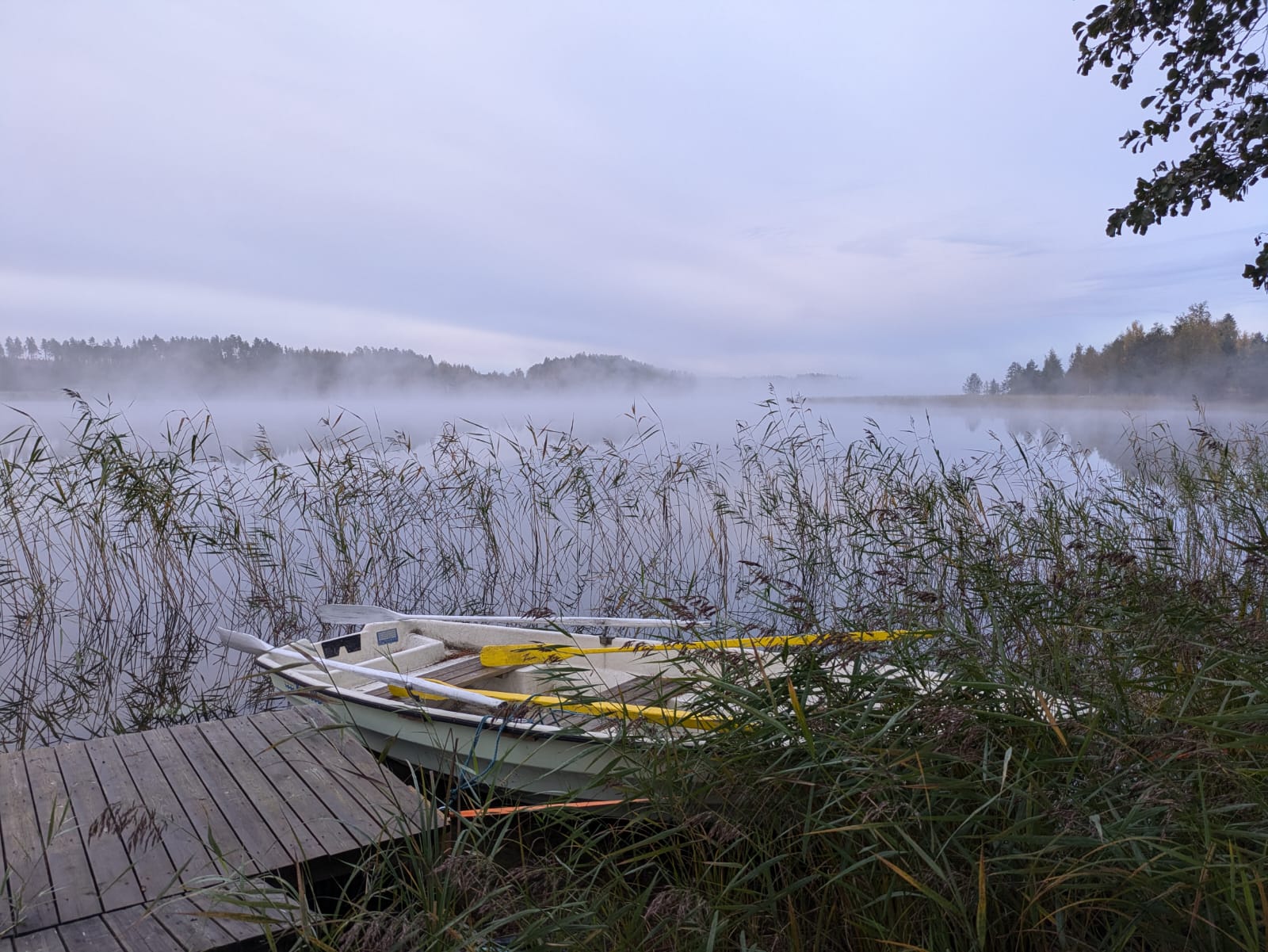
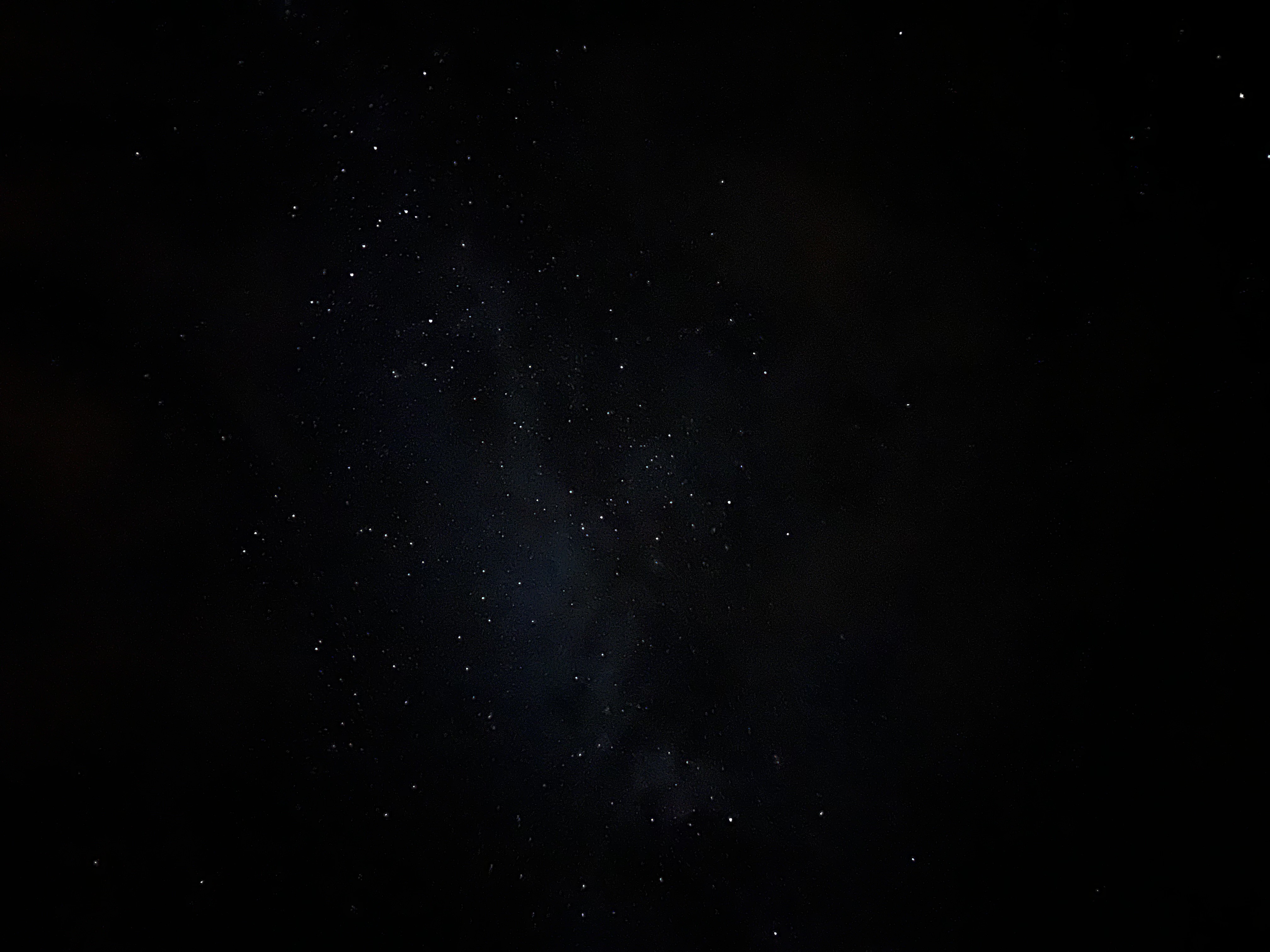
Getting to a mökki usually requires renting a car, as they're often located in areas with limited public transport. However, this isolation is part of their charm. Many cottages come equipped with rowing boats or canoes, perfect for early morning lake excursions when mist hovers over the water. The lack of light pollution in these remote locations offers spectacular stargazing opportunities, and while we weren't lucky enough to see them, the northern lights are sometimes visible.
The mökki experience encapsulates what Finns call 'mökki life' - a slower pace focused on nature and relaxation. Days can be spent hiking in the surrounding forests, swimming in the lake, fishing, or foraging for berries and mushrooms. The sauna, a standard feature in most mökkis, provides the perfect end to each day, especially after outdoor activities.
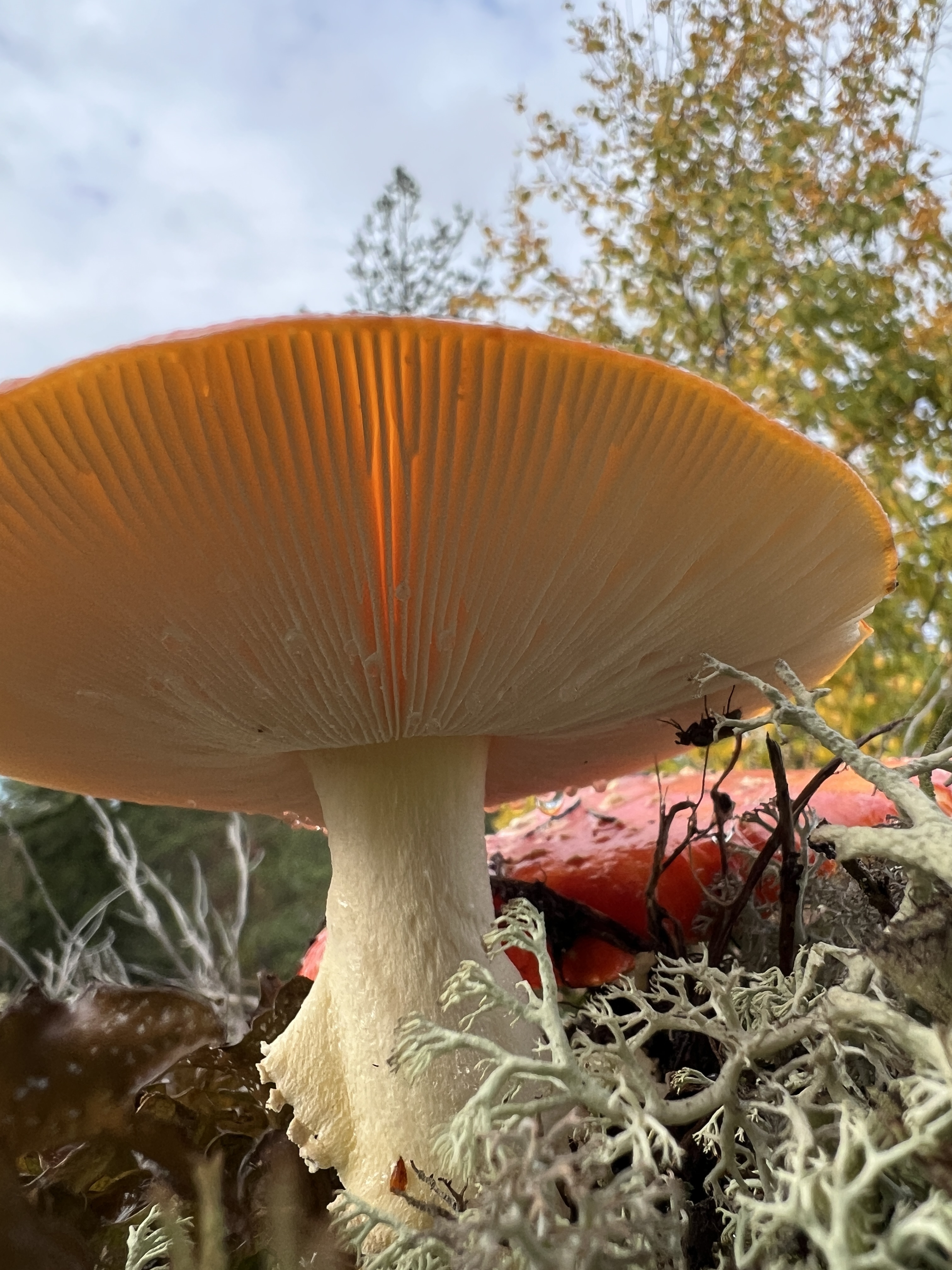
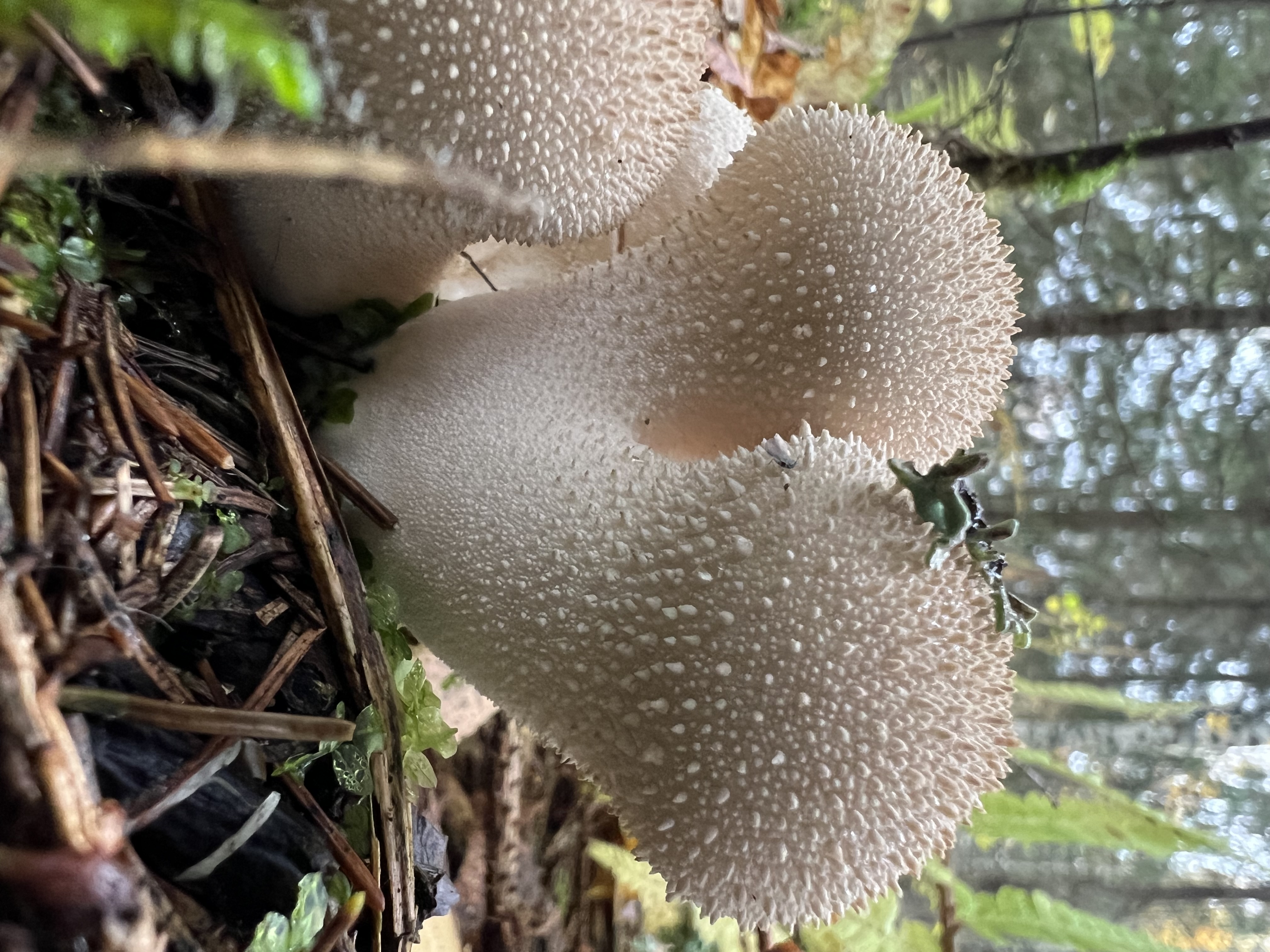
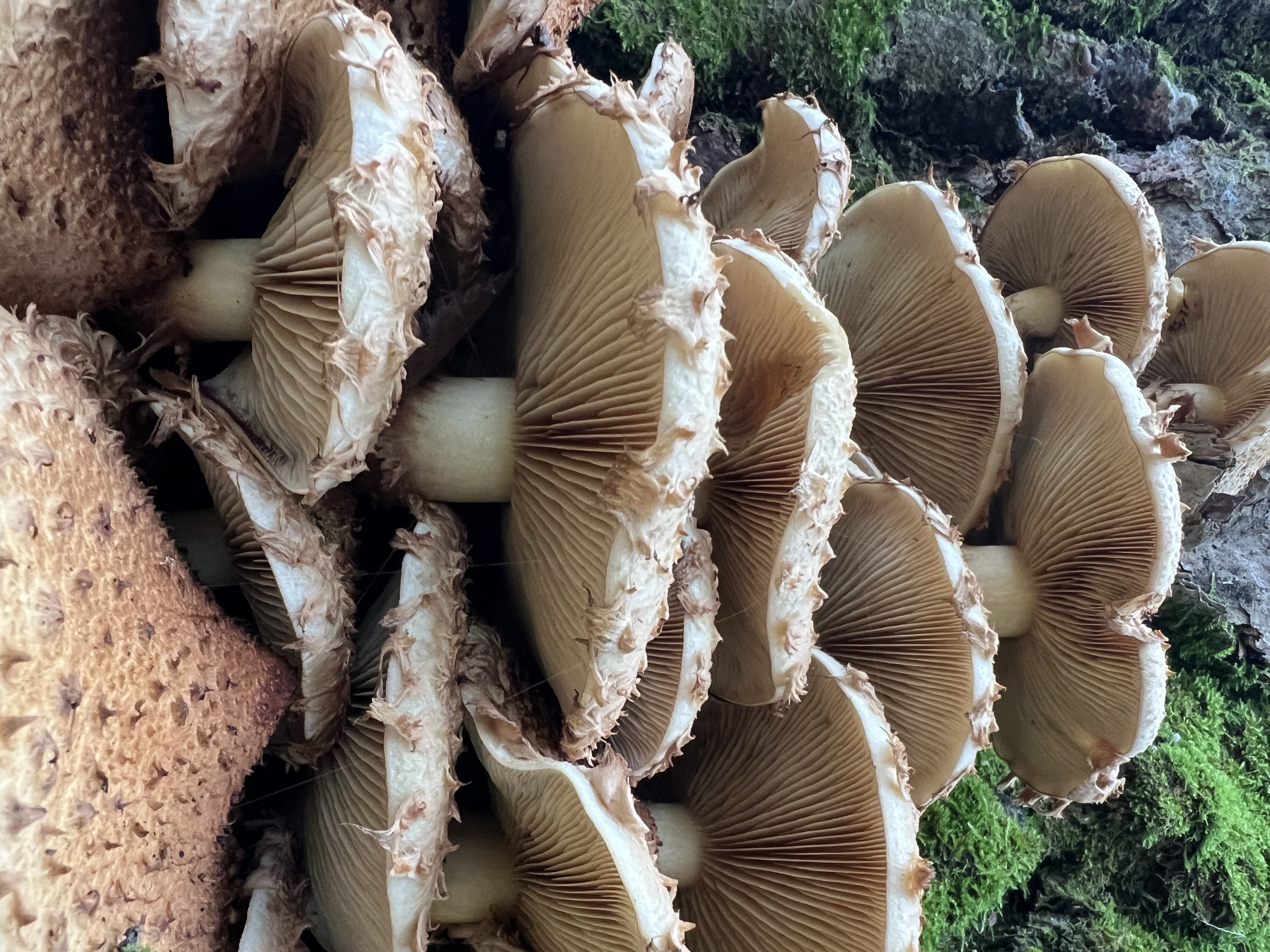
6.2. Baltic Countries
While Tallinn is easily accessible for day trips from Helsinki, the Baltic countries offer much more to explore. During my exchange semester, I participated in a trip organized by the European Student Network (ESN) Aalto that covered all three Baltic capitals - Tallinn, Riga, and Vilnius. Similar trips are also organized by ESN Helsinki, making it a convenient way to explore these countries with other students.
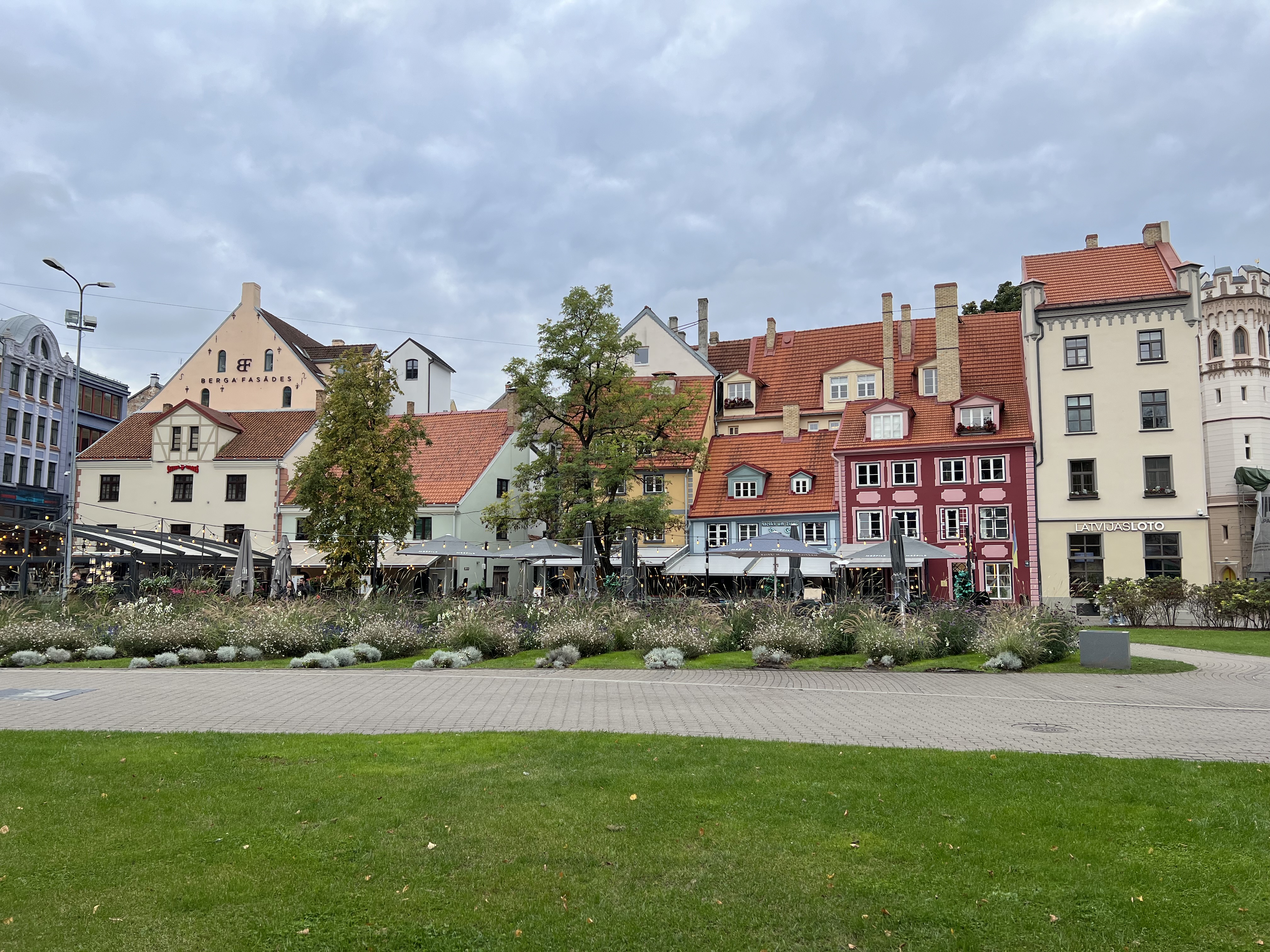
Riga Līvu Square
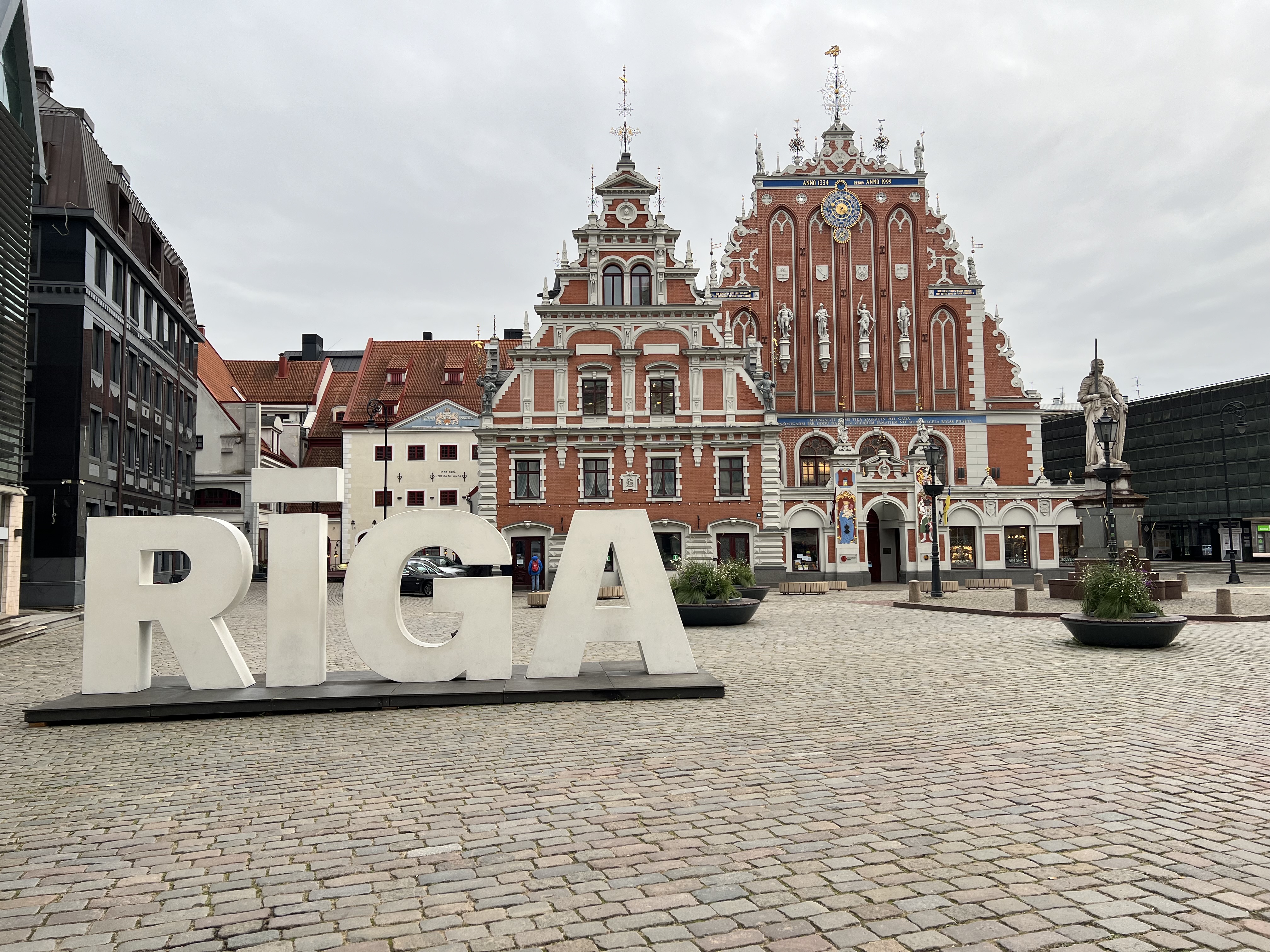
House of the Blackheads
Our journey began with the familiar ferry crossing to Tallinn for a day of exploring the old town. From there, we continued by bus to Riga, Latvia's capital known for its stunning Art Nouveau architecture. Among the architectural highlights is the famous House of the Black Cat, a yellow Art Nouveau building with two black cat statues perched on its turrets. According to local legend, the wealthy merchant who owned the building placed the cats with their tails turned towards the Great Guild building across the street as an act of spite, after the Guild refused him membership. The cats were later turned around to face the Guild following a lawsuit. We joined a walking tour through the old town and took a channel boat tour - though the latter proved somewhat disappointing as the single channel offers limited sightseeing opportunities. A highlight of Riga was the Central Market, an expansive facility offering a wide variety of local products and a genuine glimpse into local life.
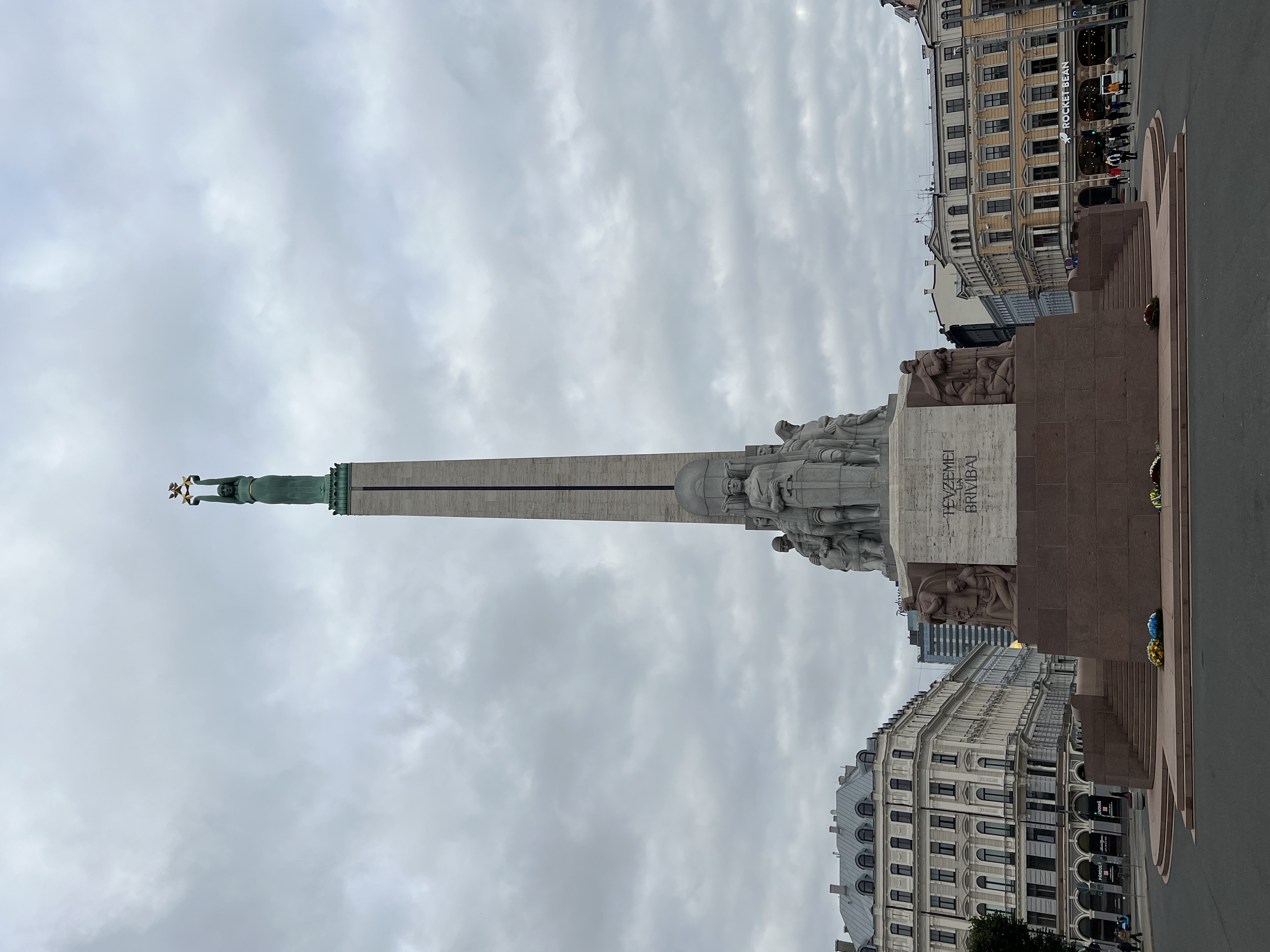
Riga Freedom Monument

Riga Three Brothers
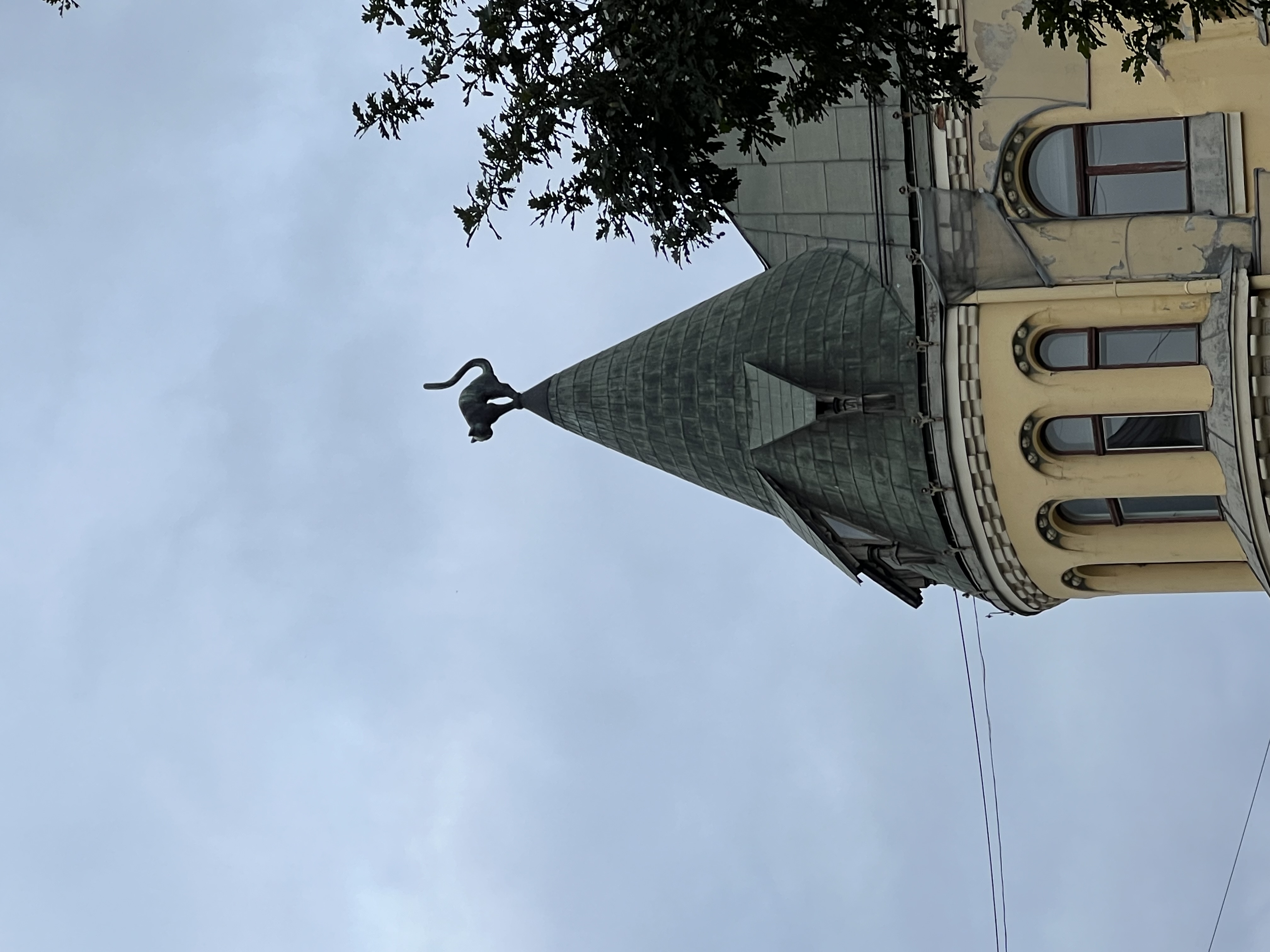
Riga Black Cat
The next leg of our journey took us to Vilnius, Lithuania's capital, with a meaningful stop at the Hill of Crosses. This remarkable pilgrimage site features thousands of crosses, placed there according to a legend promising wish fulfillment. Our first evening in Vilnius turned out to be the trip's highlight, featuring a traditional Lithuanian dinner complete with live folk music. The three-course meal included soup, meat-filled potato dumplings in meat sauce, and cake (though the dessert was somewhat underwhelming). The evening became particularly memorable when the band led us in traditional dances between courses.
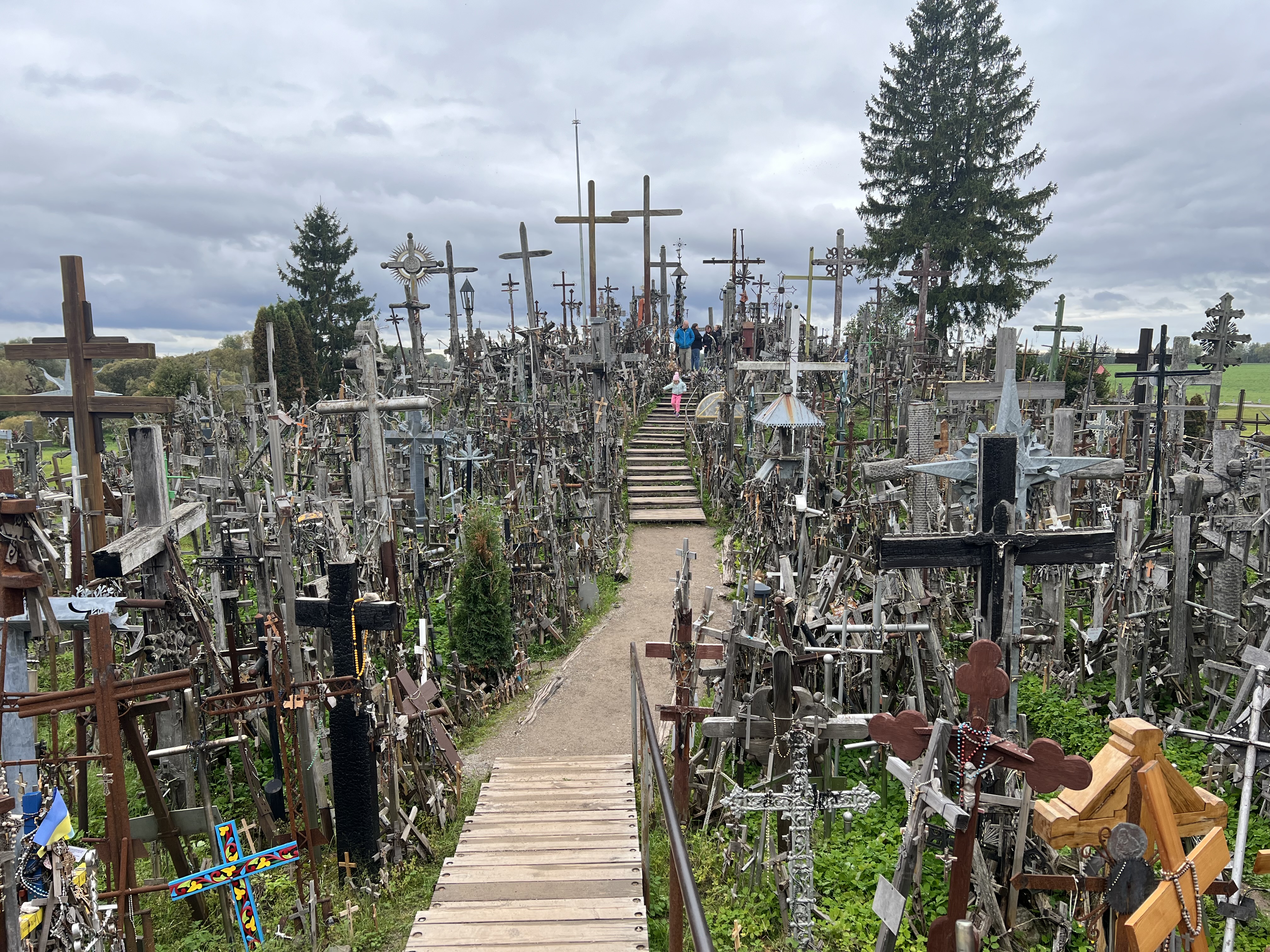
Hill of Crosses

Traditional Lithuanian Dinner
Vilnius offered numerous attractions worth exploring. For panoramic views, we ascended St. John's Church tower at Vilnius University. An alternative viewpoint is available from Gediminas Tower, though the hill itself offers free access and similar views. The quirky Užupis district, a self-declared republic complete with its own constitution and president, showcases a vibrant bohemian atmosphere and street art. For those interested in history, the Museum of Occupation and Freedom Fights, housed in the former KGB building, provides sobering insights into Lithuania's past. The museum documents the Lithuanian resistance against Soviet occupation from 1940-1991 and preserves original KGB prison cells and interrogation rooms in the basement, offering a powerful reminder of the country's struggle for independence. Unfortunately, we missed the cathedral catacombs tour due to time constraints.
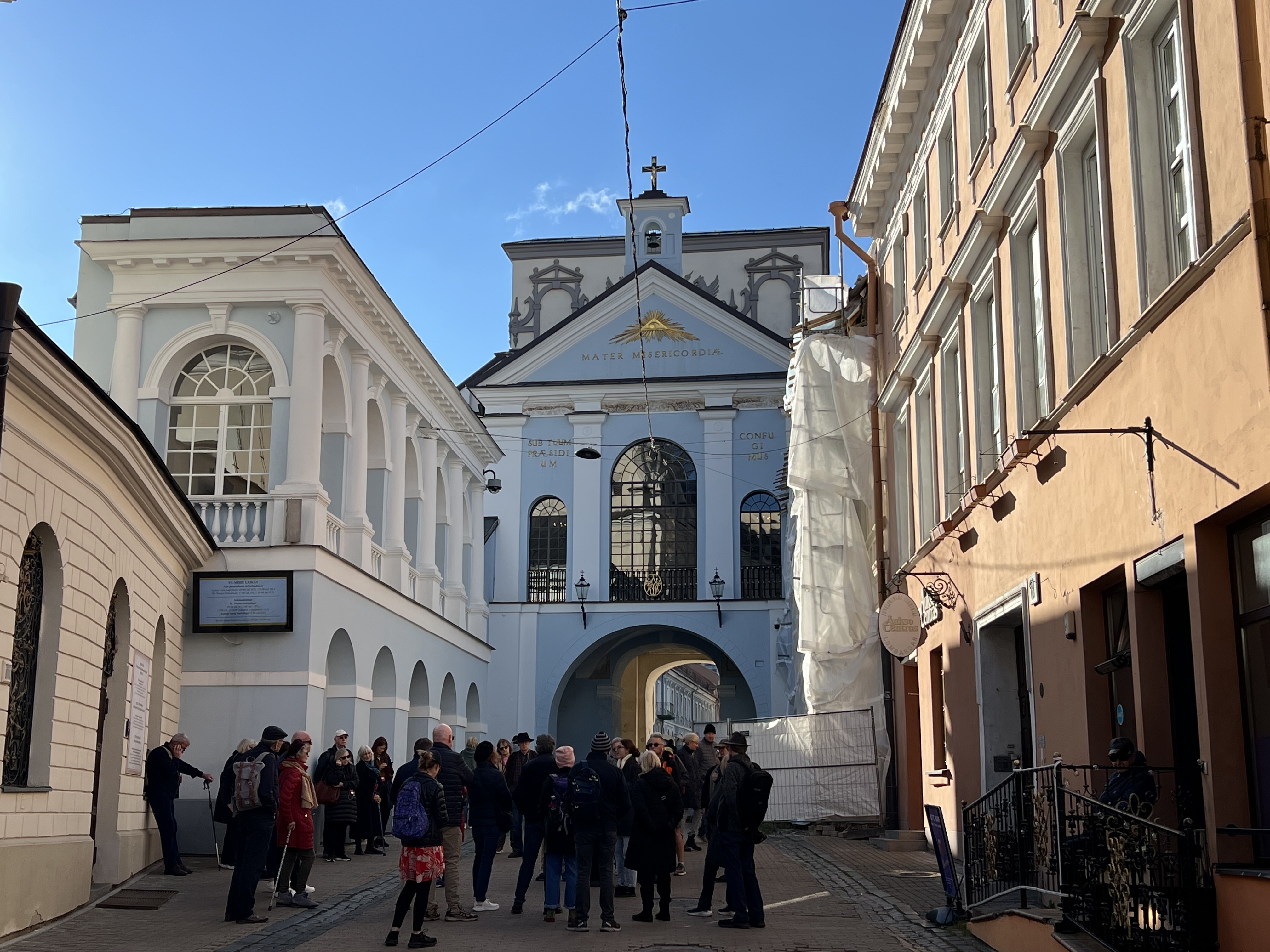
Vilnius Gate of the Dawn
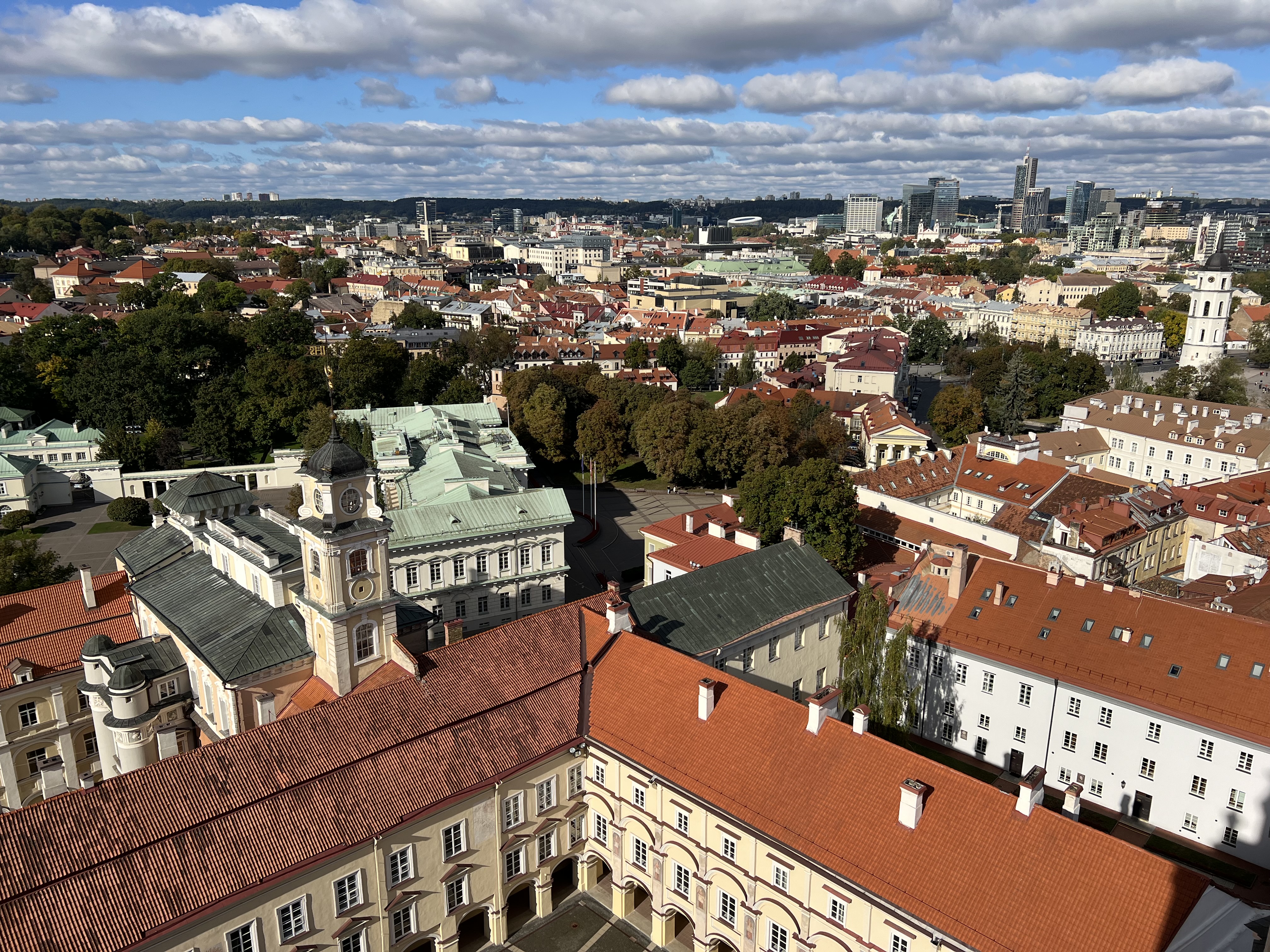
Vilnius View from St. Pauls
Our journey concluded with a bus ride back to Tallinn and the ferry return to Helsinki. While our ESN-organized trip provided a convenient way to explore these cities, independent travel to the Baltic countries is also worthwhile. The region offers rich history and culture at affordable prices, and all three capitals feature free walking tours (with optional tips), making it easy to discover their stories and hidden gems.
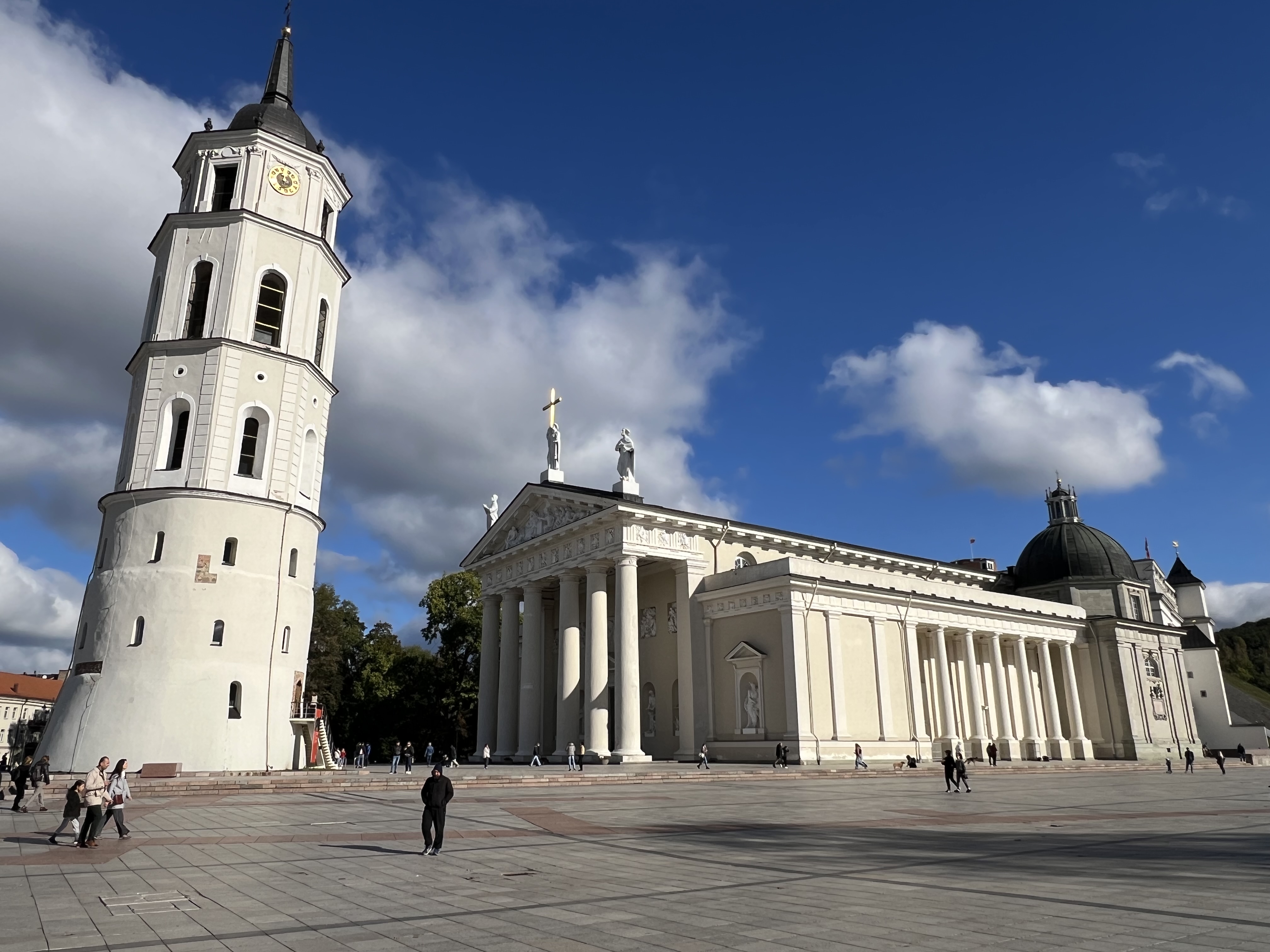
Vilnius Cathedral
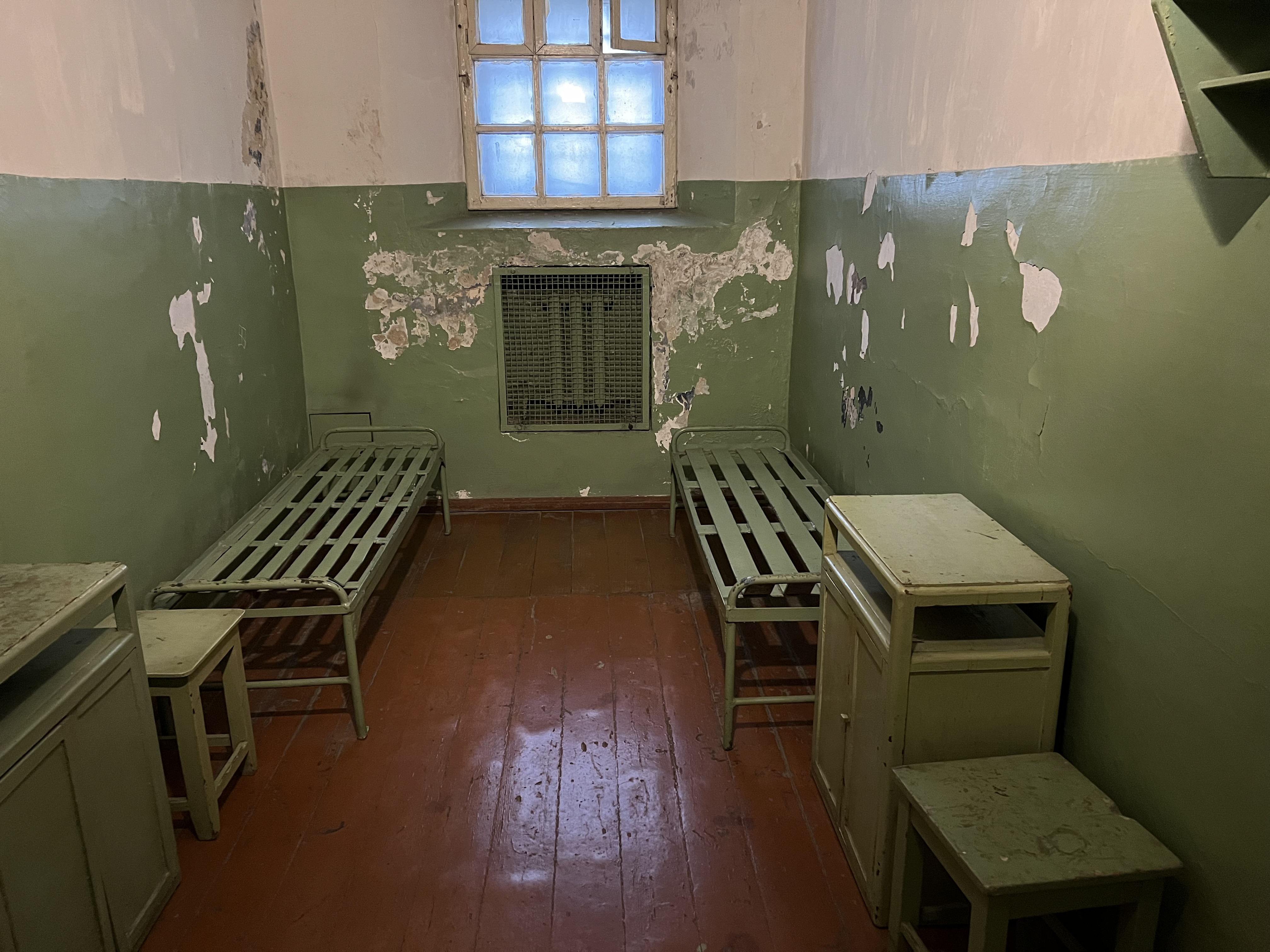
Vilnius KGB Museum
6.3. Stockholm (Pirates of the Baltic Sea)
Stockholm, Sweden's capital, is easily accessible from Helsinki via an overnight ferry cruise. I experienced this journey through the Pirates of the Baltic Sea (PoBS) student trip, organized by various ESN sections around the Baltic Sea region, including many in Finland and the Baltic countries.


The ferry journey itself is meant to be entertaining, with live music, shows, and onboard activities. However, the organization had some frustrating aspects. Many activities required pre-registration with very limited spots available. Even activities without pre-registration had capacity issues - it was essentially first-come, first-served, so you had to be extremely quick to participate in anything. While the ferry boasts a duty-free shop for discounted alcohol and other products, consumption of purchased items onboard is officially prohibited. There are also restrictions on bringing your own drinks and snacks aboard - during boarding, they conducted random checks for alcoholic beverages but allowed non-alcoholic drinks and snacks through. The ship offers various amenities including restaurants, bars, a casino, dance floor, karaoke bar, sauna, and pool. The included dinner buffet was quite impressive with a wide selection of dishes. However, we witnessed some disappointing behavior from fellow travelers (even ESN organizers) who wasted food by taking excessive amounts just for photos. The buffet included self-service drinks, which led to some amusing incidents - like a fellow passenger attempting twice to fill a wine bottle, getting caught both times. The staff was quite strict about the two-hour buffet time limit, promptly ushering everyone out when time was up.
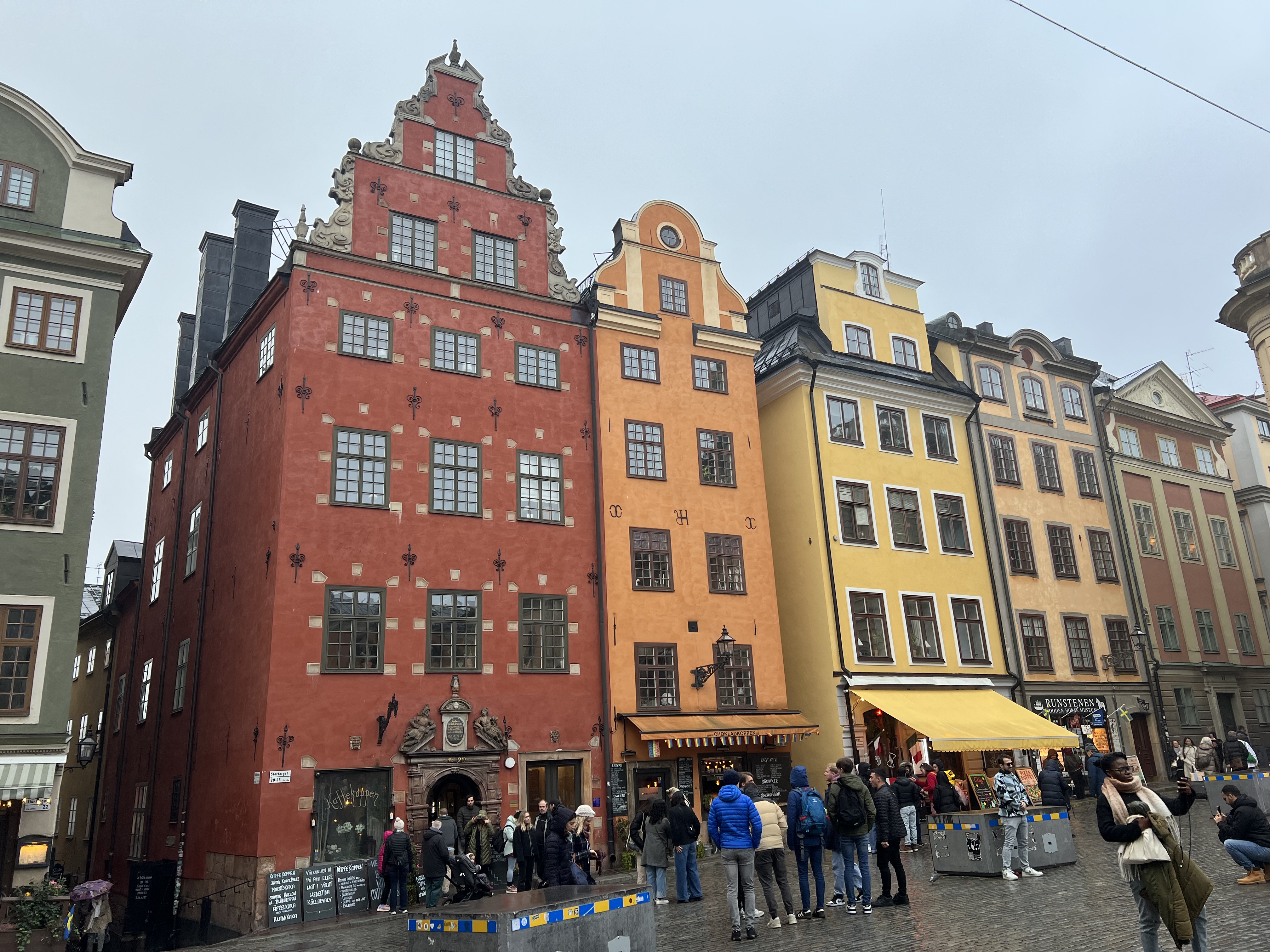
Stockholm Stortorget
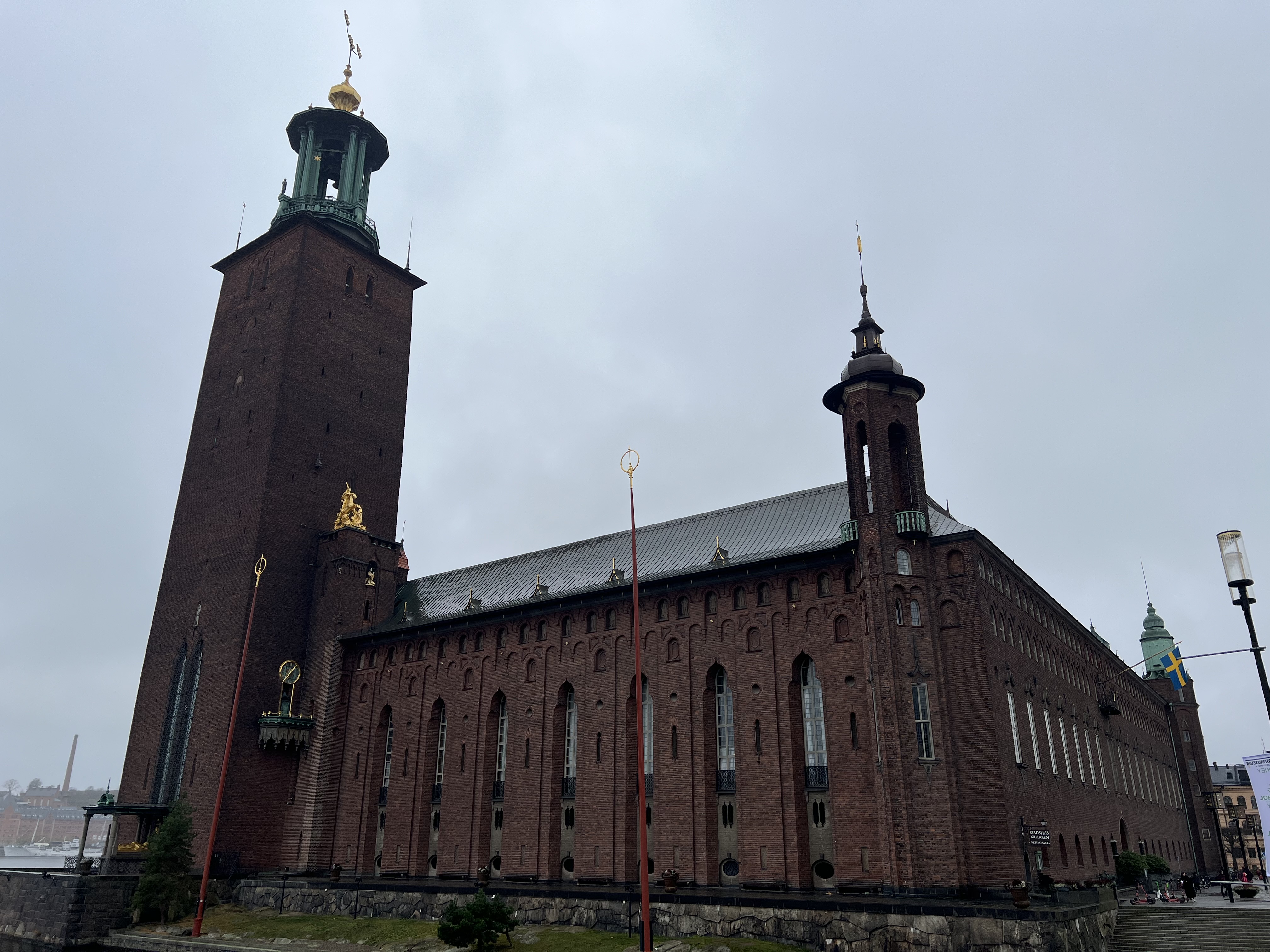
Stockholm Stadshus
After an evening of partying and some rest in our cabin, we arrived in Stockholm early morning with about five hours to explore before our return journey. The dock is located outside the city center, so we took the metro to reach the old town. The most charming area is Gamla Stan, characterized by its narrow streets and historic architecture. Highlights include the Royal Palace and Stortorget square with its distinctive colorful houses. The Katarina elevator provides access to a viewing platform offering panoramic city views. While Stockholm boasts numerous museums, including the fascinating Vasa Museum (home to a remarkably preserved 17th-century warship that sank on its maiden voyage), our limited time prevented museum visits. We did, however, make sure to try the quintessential Swedish cinnamon roll. Before the return journey, we enjoyed the ship's spa facilities with sauna and whirlpool, followed by more evening entertainment.
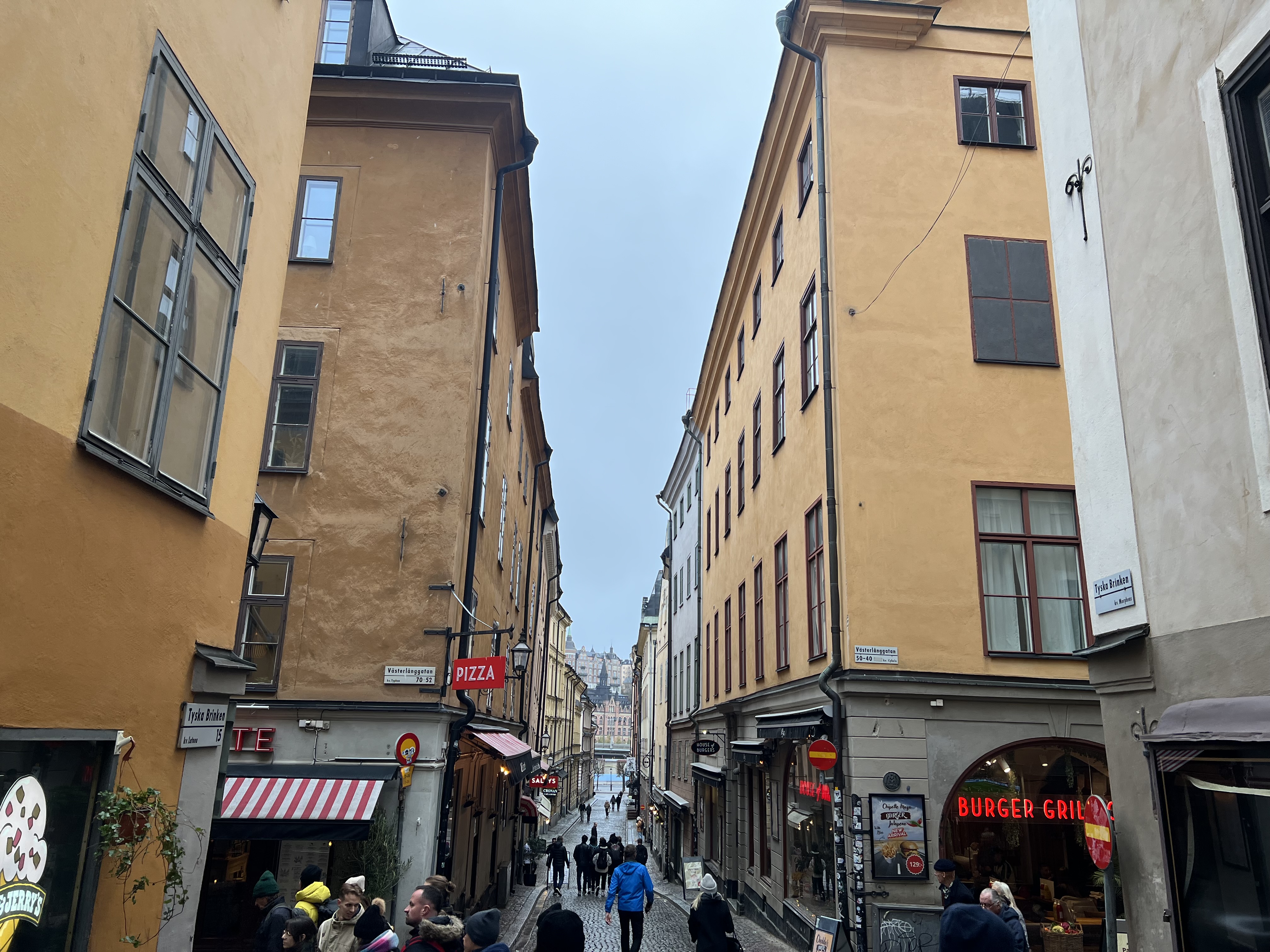

The PoBS trip was a fun experience, offering a unique way to visit Stockholm and meet students from various countries. However, the journey's focus on partying and entertainment may not suit everyone. For those looking to explore Stockholm more thoroughly, I recommend a longer stay to visit the city's museums and other attractions.
6.4. Lapland
When people think about Finland, they often imagine Lapland - the northernmost region of the country. During my exchange semester, I was lucky enough to visit Lapland twice.
ESN Trip to Kilpisjärvi
Our ESN Aalto adventure began with a 24-hour journey north. The first stop was the Santa Claus Village in Rovaniemi, right on the Arctic Circle. While it offers typical tourist activities like meeting Santa himself, sending postcards from the special Arctic Circle post office, and taking photos at the Arctic Circle line, I have to be honest - unless you're a kid, it's totally overrated. Sure, the entrance is free, but everything inside will cost you an arm and a leg. After this brief tourist stop, we continued our journey, making a quick stop in Levi to pick up our guide before finally reaching Kilpisjärvi, a tiny village tucked away in Finland's northwestern corner, right by the Norwegian border.
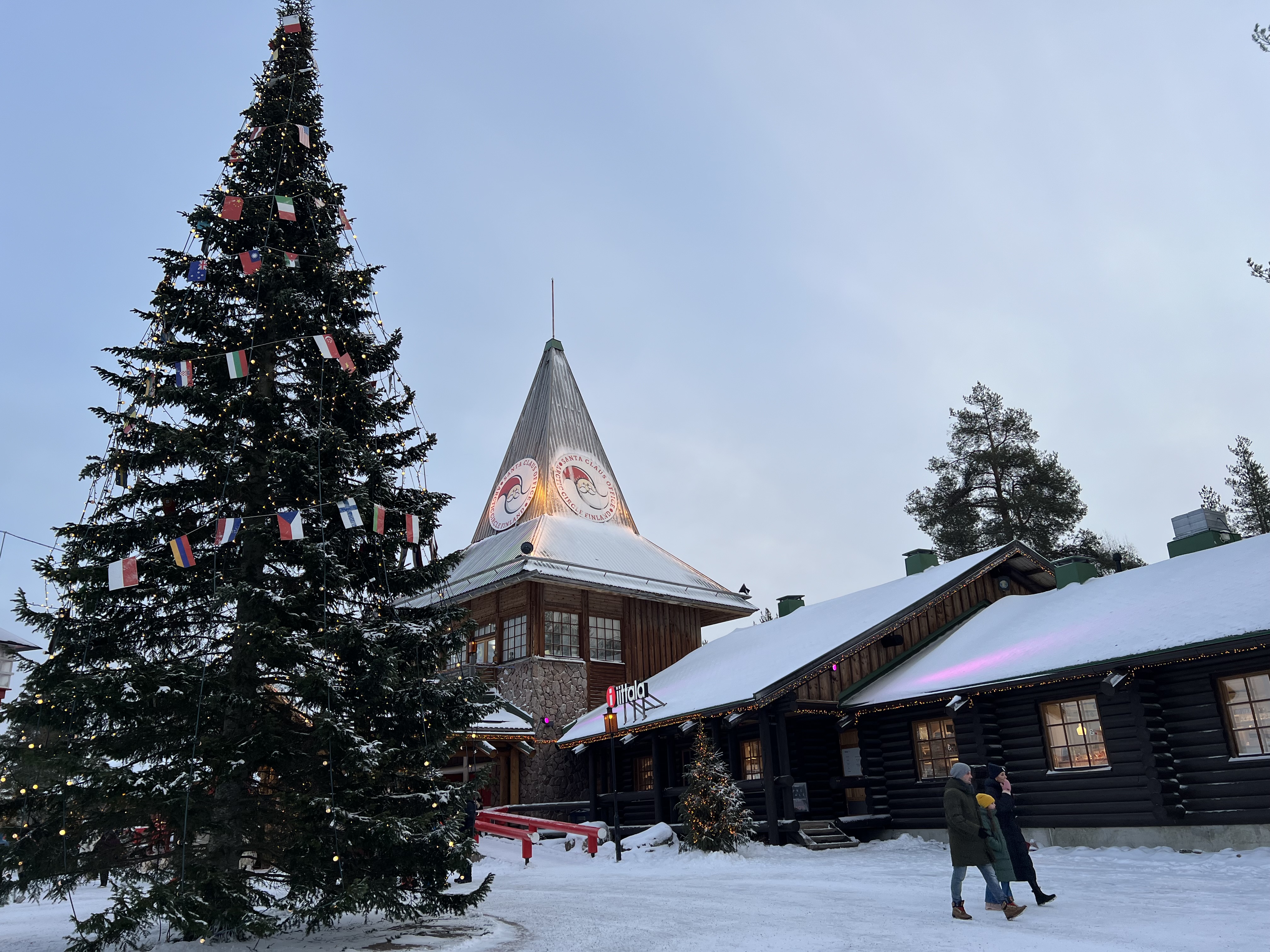
Santa Clause Village
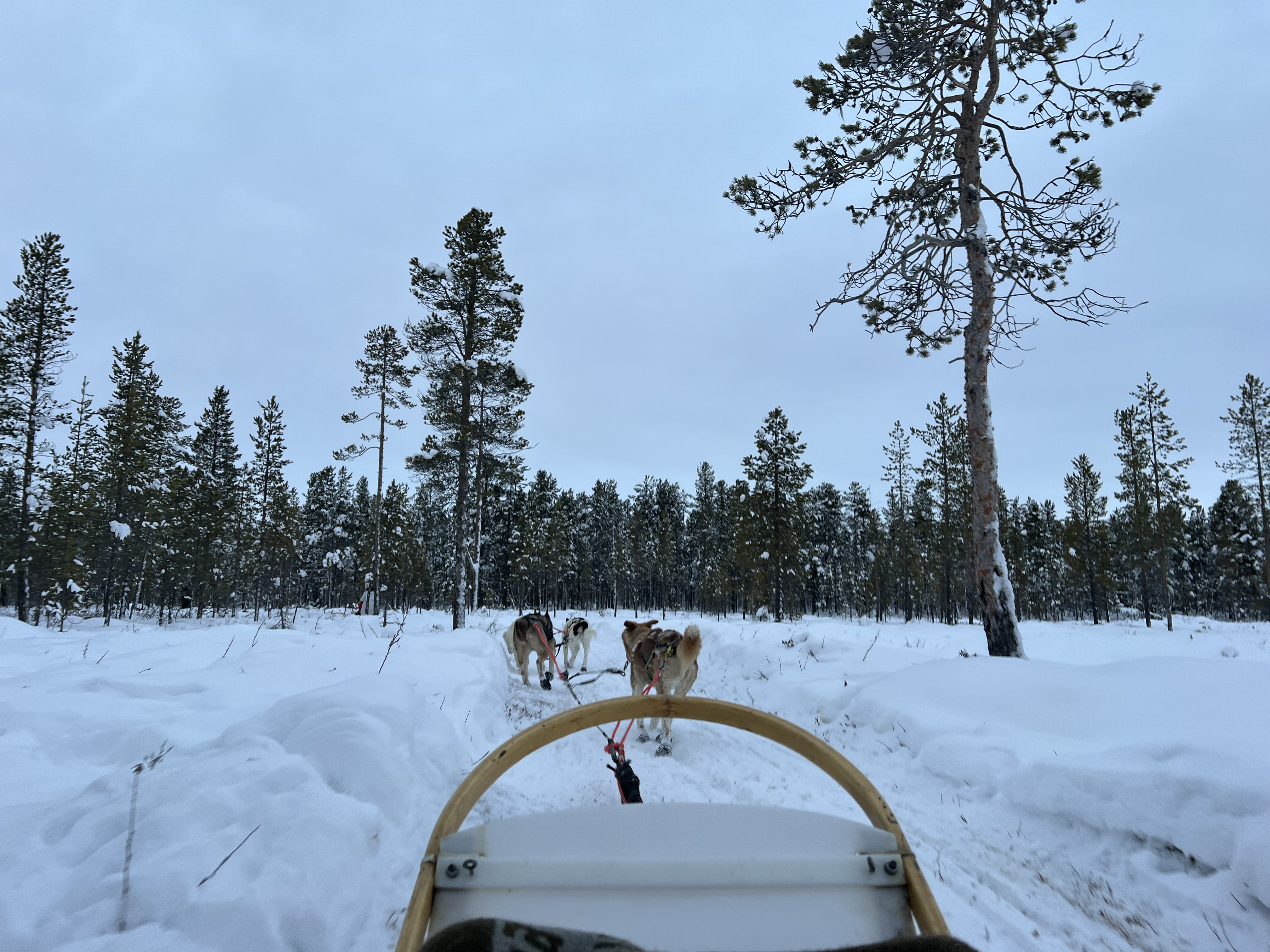
Dog Sledding
Our first full day kicked off with a dog sledding adventure, though we had to take a 2-hour bus ride south to reach the husky farm. After a brief orientation, we were ready to hit the trails. Each sled took two people - one driver and one passenger - and the control system was surprisingly simple: just a brake, since the dogs are trained to follow the sled in front of them. They used Alaskan huskies here, which turned out to be an interesting choice. These dogs are actually stronger than their Siberian cousins and have less fur, making them better suited for running in milder temperatures. Our 30-minute ride took us across a frozen lake before weaving through the forest. After spending some time petting the dogs and taking photos, we headed back to prepare for our evening activity. That night, we crossed into Norway to visit a sauna by a fjord, complete with an amusing border control check involving drug dogs. The sauna experience wasn't quite what we hoped for - the constant flow of people meant it never really got hot enough, making our dip in the freezing fjord especially bracing. This evening we also caught our first glimpse of the Northern Lights on our way back to the bus, even if they were partially obscured by clouds.
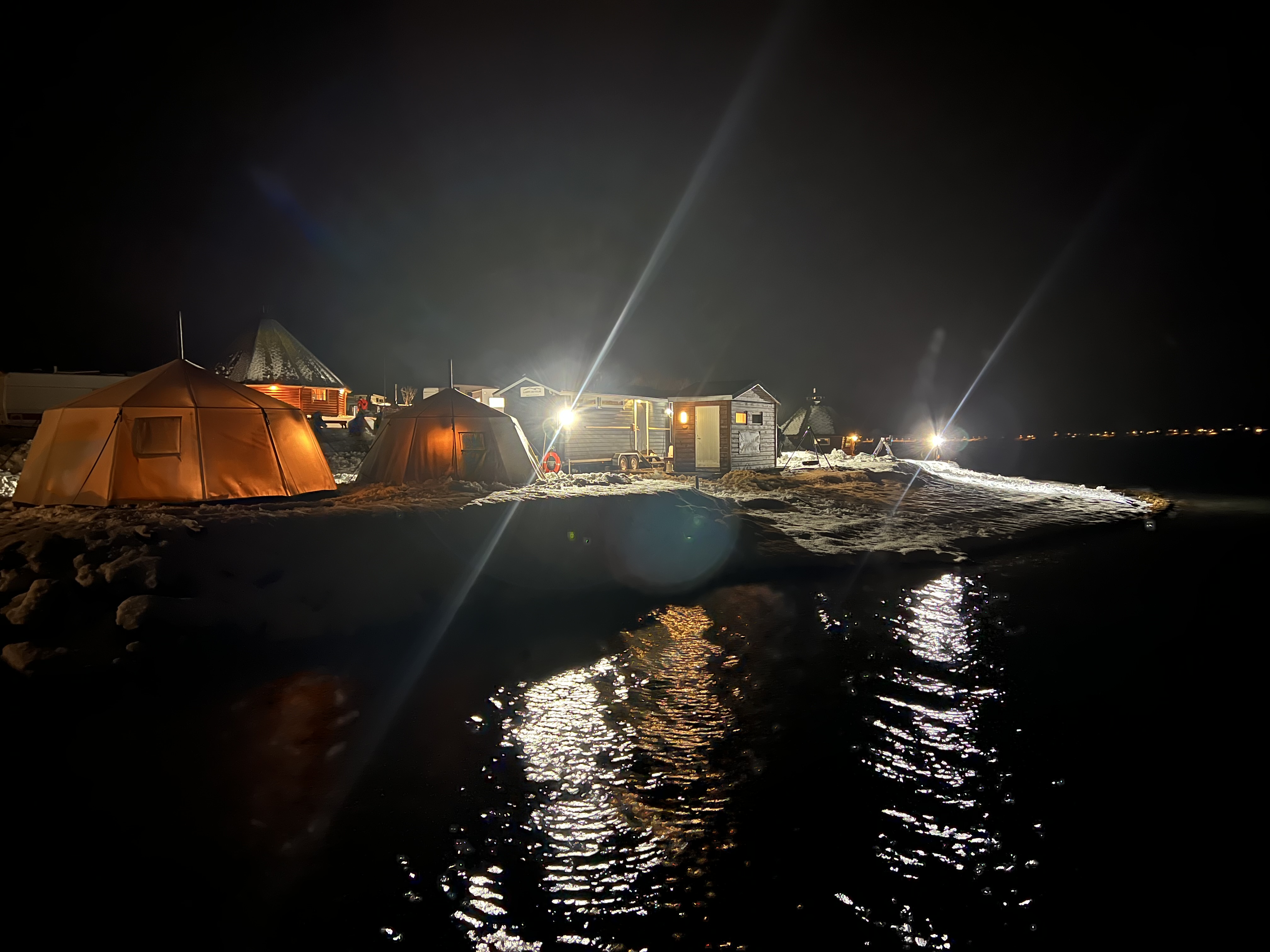
Sauna in the Fjords
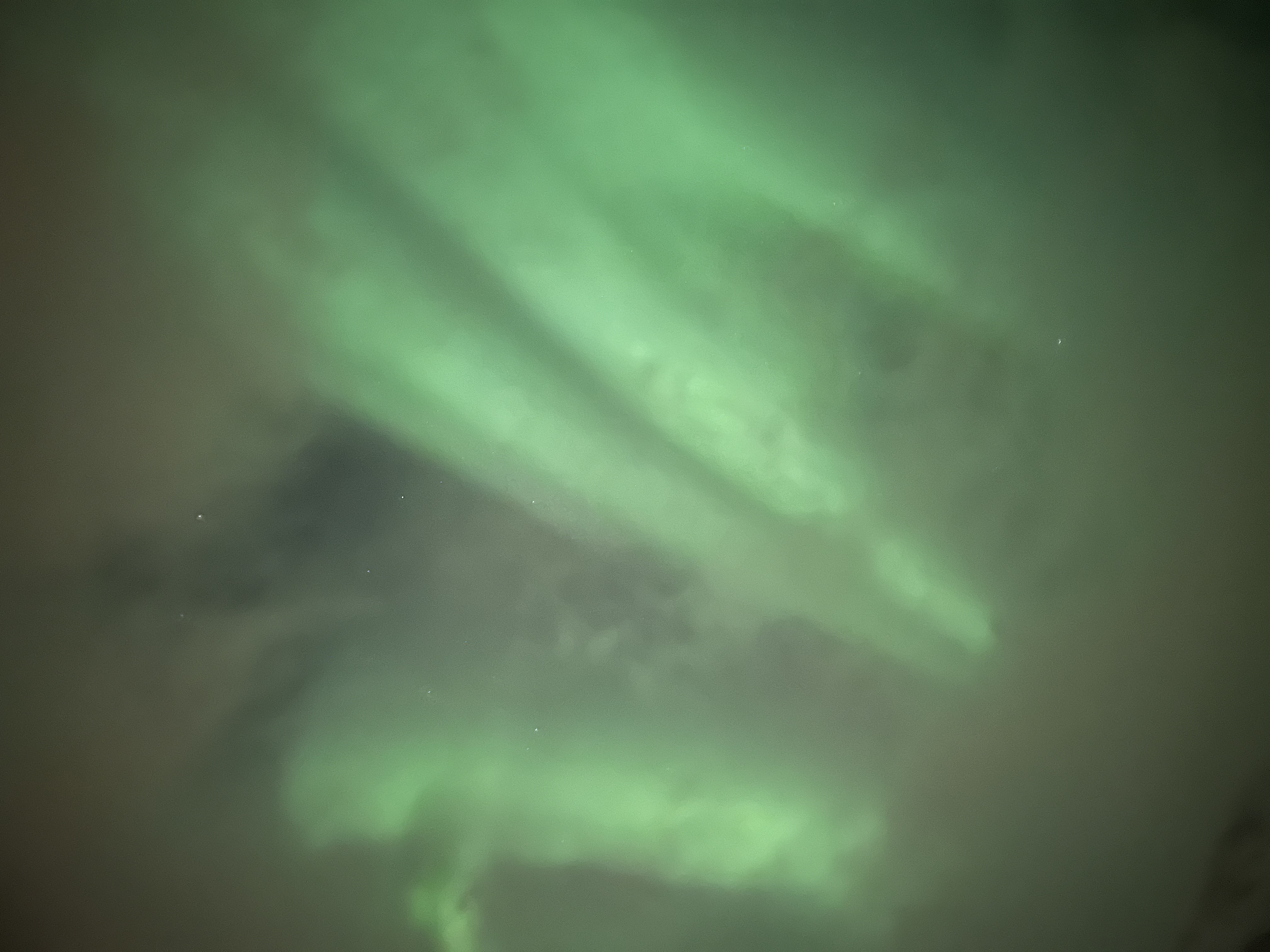
Northern Lights in Clouds
The next day brought a snowmobile adventure, which took an unexpected but appreciated turn. Originally, we were supposed to ride across a lake to the three-border point where Finland, Norway, and Sweden meet. However, with temperatures hovering around a surprisingly mild -5 degrees, the lake wasn't completely frozen. Instead, we got to take an alternative route into the mountains - which honestly turned out to be amazing, probably even better than the original plan would have been. Sure, we might have been able to go faster on the lake, but the mountain scenery was far more spectacular. Our two-hour tour started in darkness, early in the morning. The snowmobiles themselves were pretty straightforward to operate - just gas and brake - but without power steering, you really had to put your whole body into turning these machines. By the time we reached the mountain summit, the sky was starting to lighten. After a break for photos and switching drivers (we rode two per snowmobile), we headed back under a stunning red sky as sunrise merged directly into sunset, creating some truly magical views.
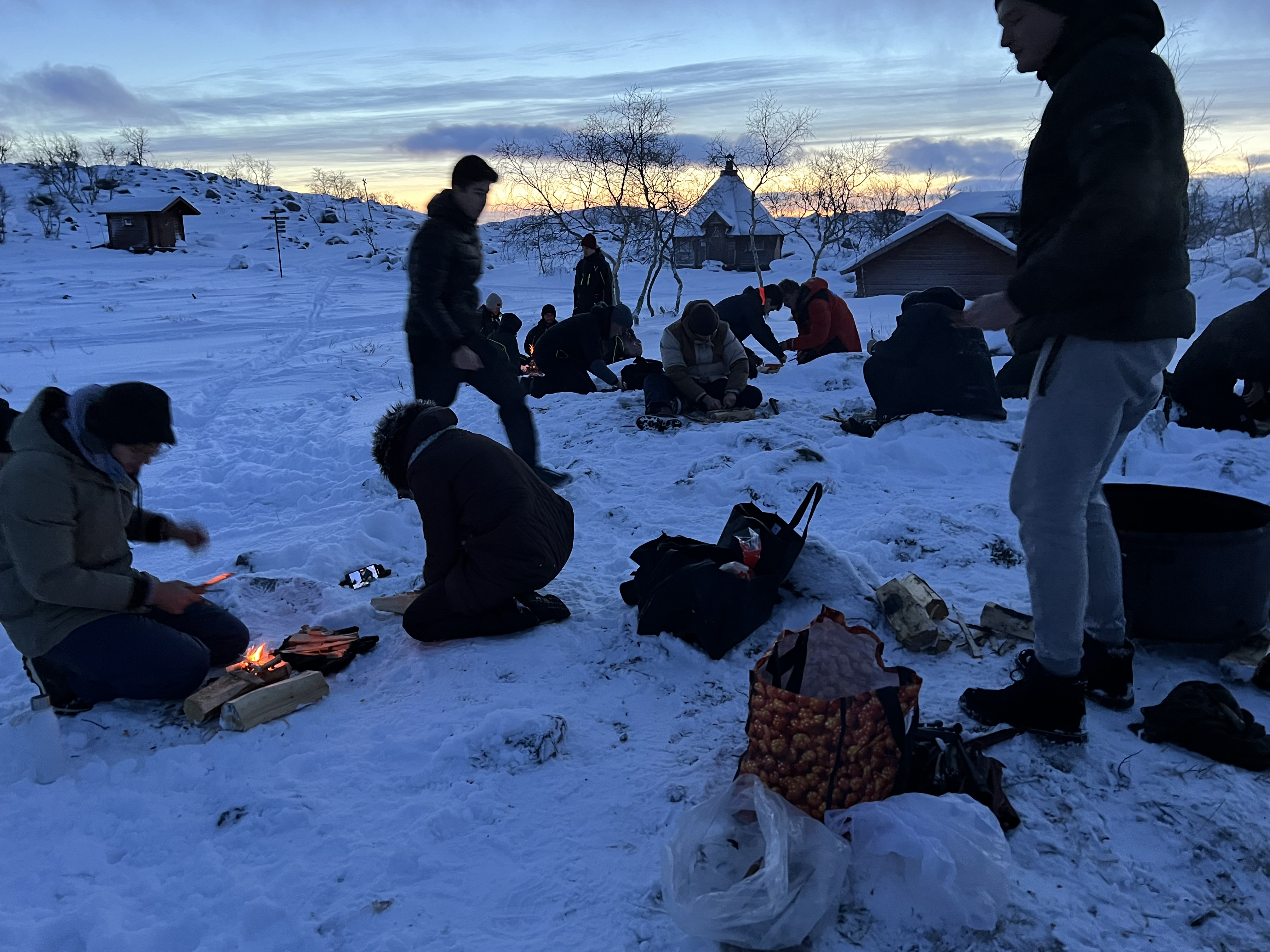
In the afternoon, our planned ice fishing had to be scrapped due to the thin ice, but we got to learn something equally cool instead - how to make fire with a magnesium stick. Trying to master this skill while snow was falling around us was both challenging and hilarious, but definitely worthwhile. We wrapped up the day with a cozy campfire cookout, roasting sausages, and then headed back to make full use of our accommodation's sauna. Between sauna sessions, we did the proper Finnish thing and cooled off by rolling in the snow.
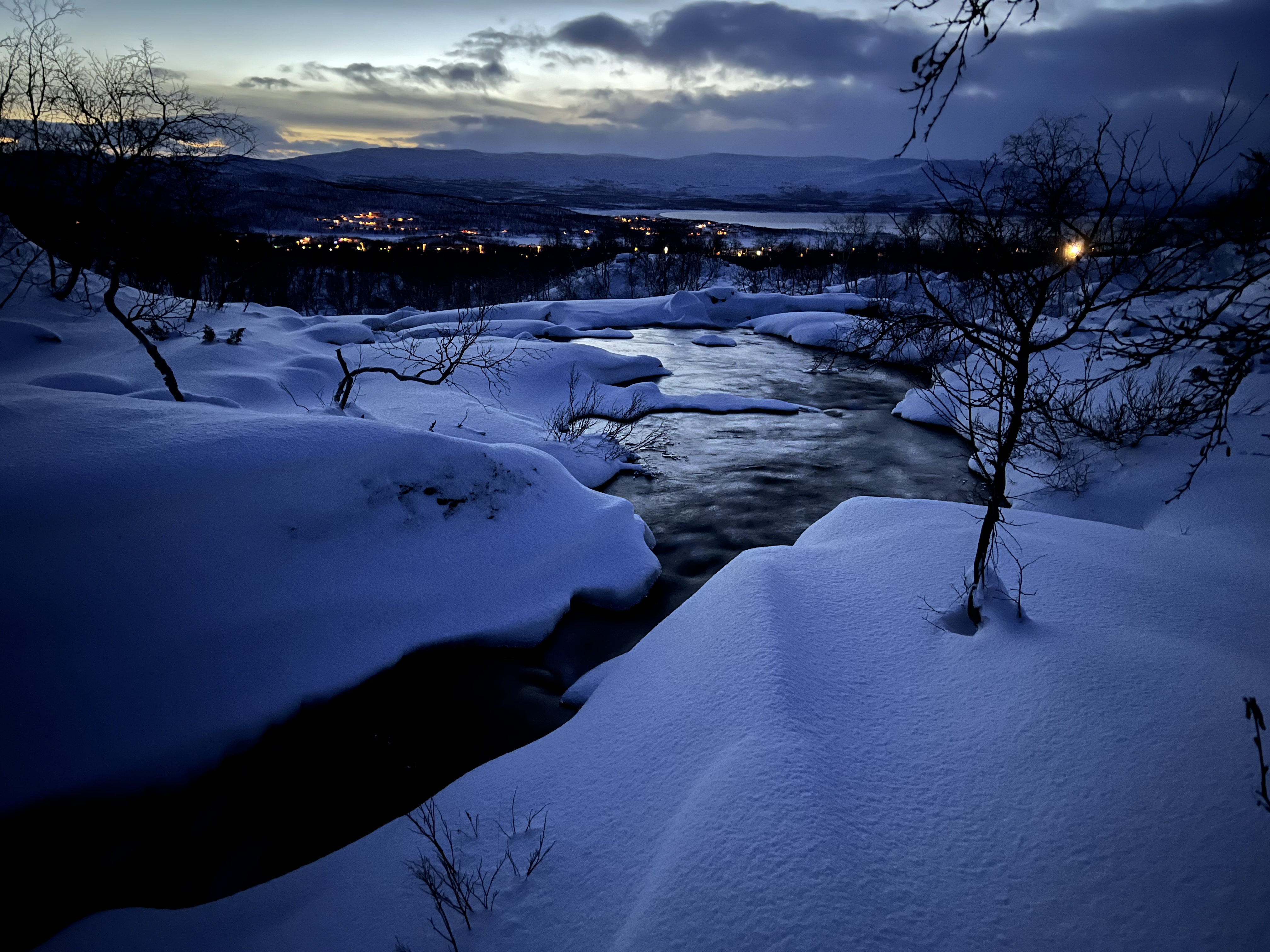
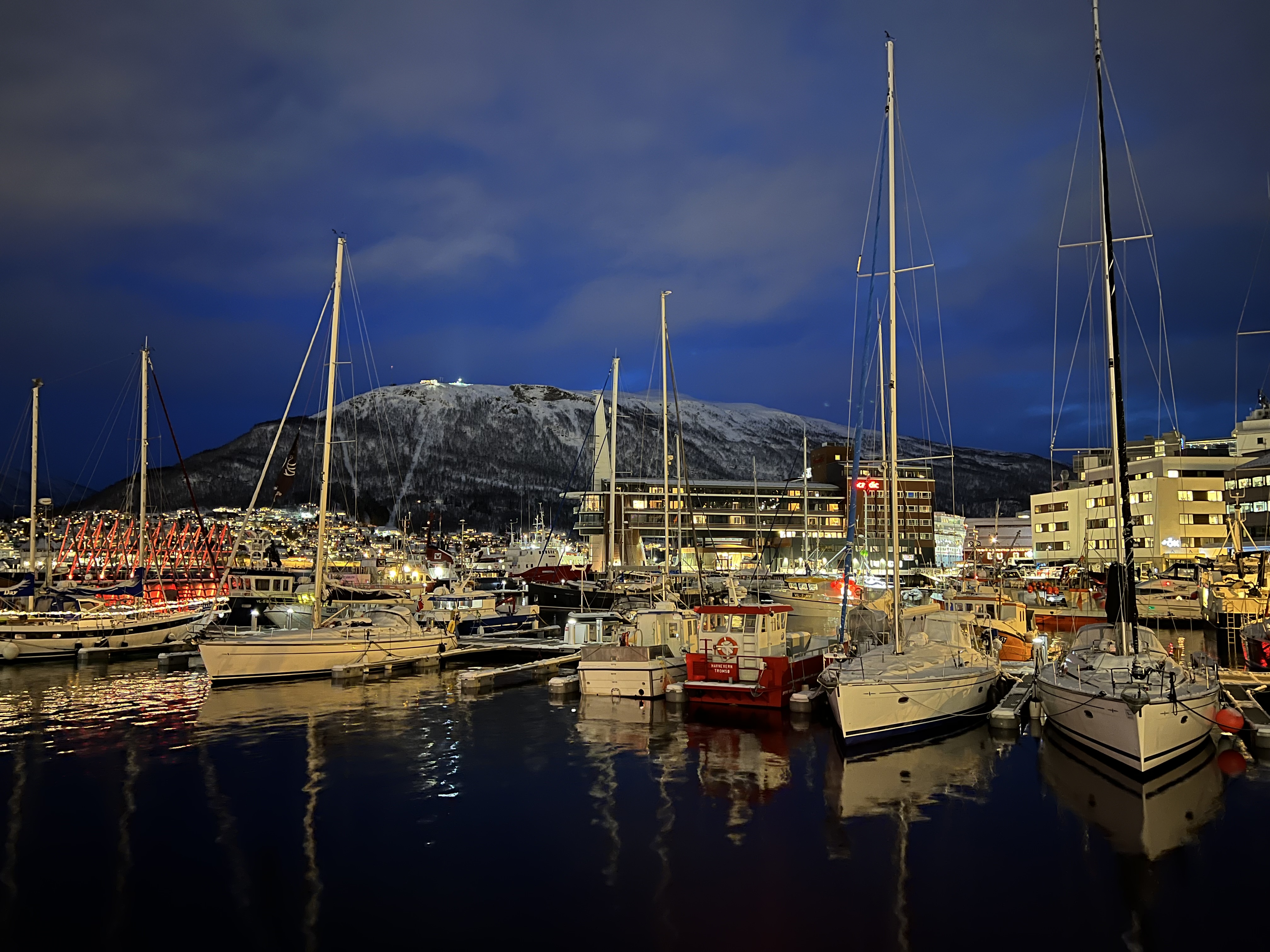
Tromsø
Our final full day featured a trip to Tromsø, Norway. The three-hour bus journey was an attraction in itself, winding through stunning fjord landscapes. Once in Tromsø, we visited the Arctic Cathedral and explored the city center. The journey back to Helsinki included another quick stop in Levi before the long drive south.
Self-Organized Trip to Levi
My second Lapland adventure was entirely self-planned, focusing on Levi, a popular ski resort in northern Finland. We traveled by bus and made the Crazy Reindeer hotel our base, which included breakfast. Our first day started with another round of dog sledding, this time on a 5km track that offered even more varied and beautiful scenery than my first experience. The weather was bizarrely warm at +6 degrees! In the afternoon, we attempted a snowshoe hike that turned into quite an adventure. We started along a frozen lake before heading uphill, aiming for the summit. That's when we had the brilliant (or not so brilliant) idea to take a "shortcut" straight up instead of following the trail. Big mistake - the snow was thigh-deep, the slope was crazy steep, and the whole attempt was exhausting. After fighting our way back to the actual trail and reaching a plateau, we had to admit defeat and turn back as darkness was falling and we needed to return our rental equipment.
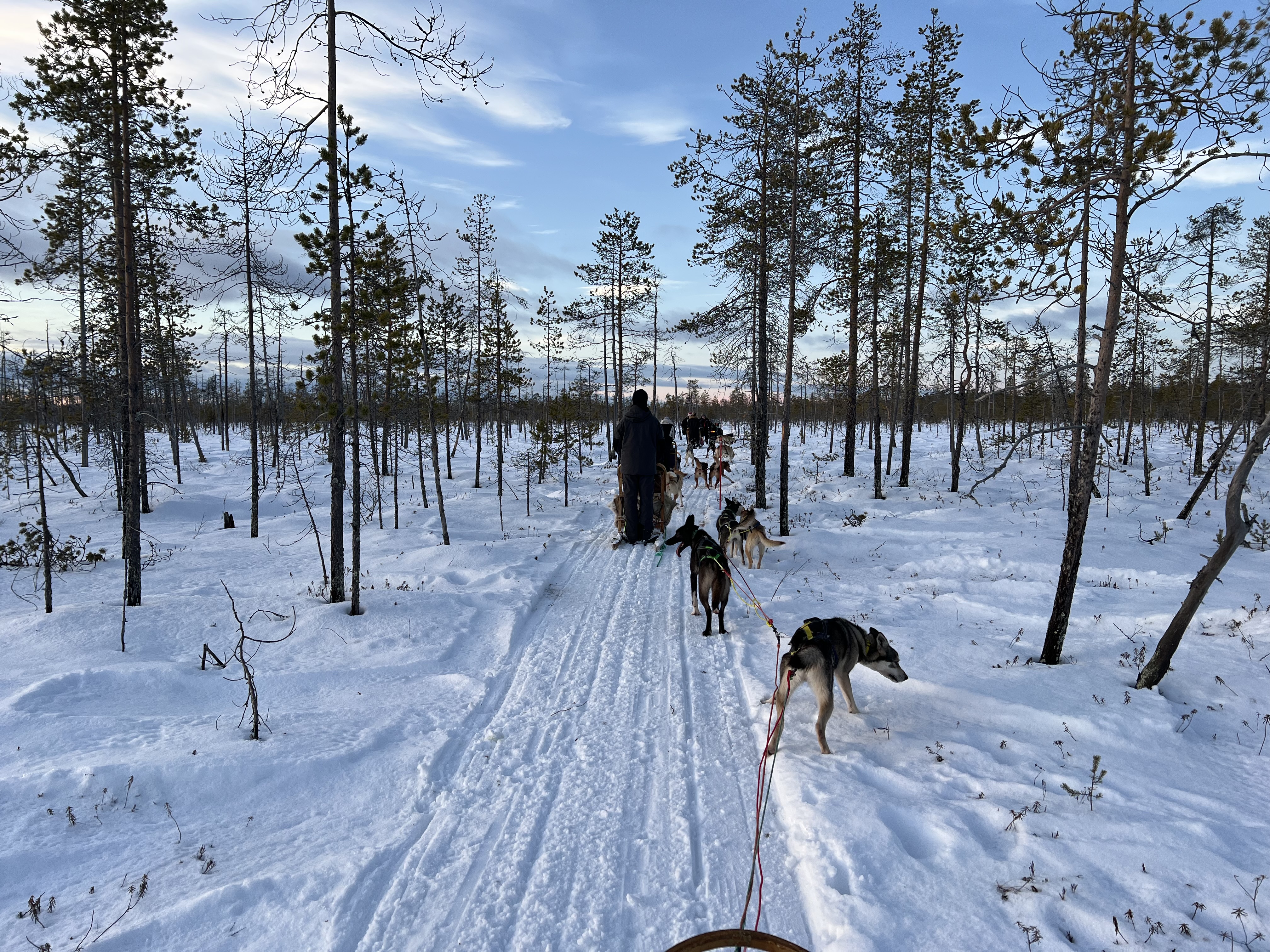
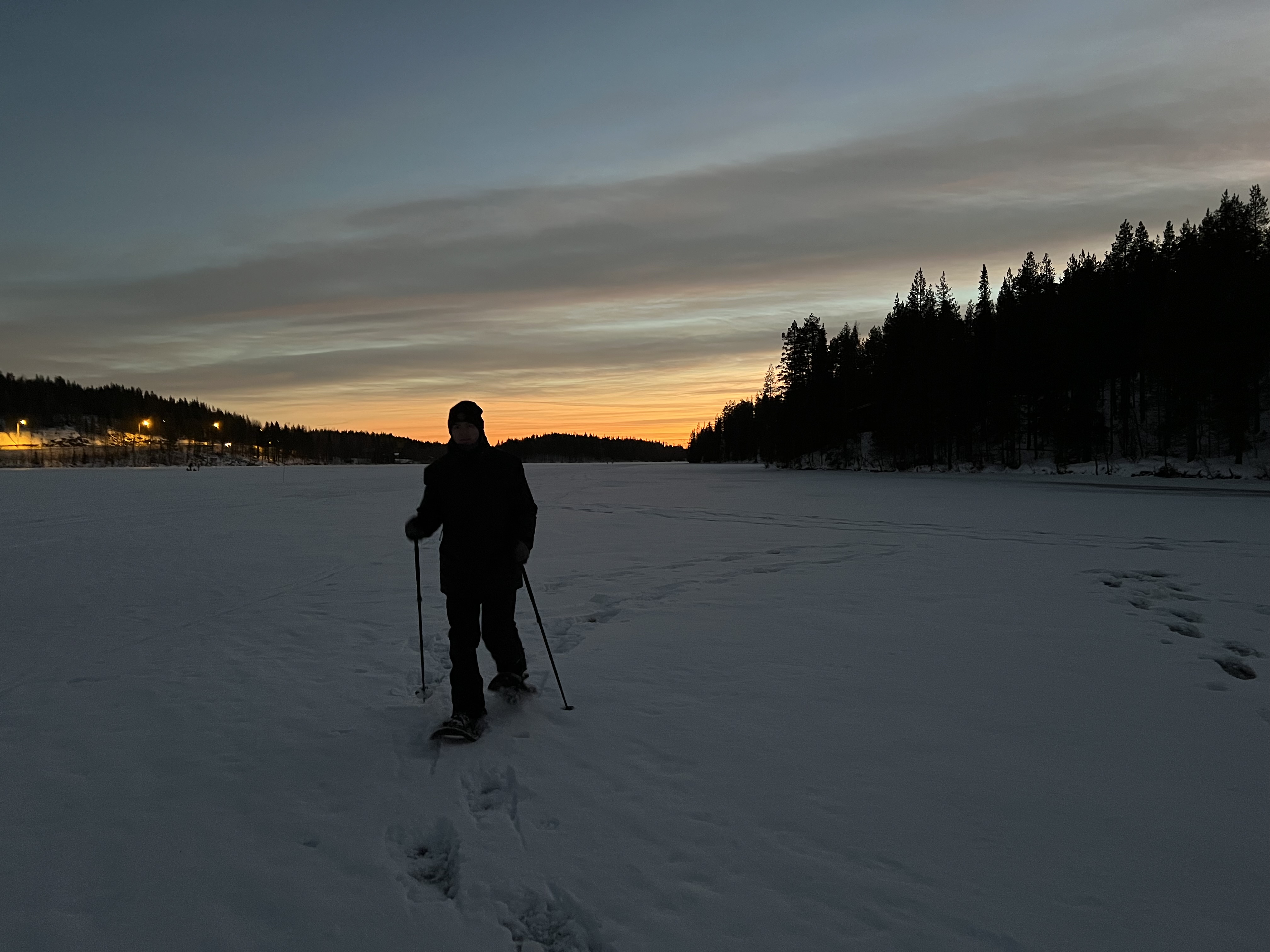
The next day's snowmobile safari was a completely different experience from Kilpisjärvi. Instead of wild mountain trails, Levi had proper snowmobile "highways" complete with marked lanes and even a roundabout - quite a contrast! The thin snow cover made for a bumpy two-hour ride across the lake, which was finally frozen solid enough. Our plans for cross-country skiing got derailed by the warm weather - the tracks couldn't be properly prepared - so we switched to downhill skiing instead. The 90€ price tag for a three-hour ski pass and rental equipment gave us access to some nice slopes, though not all were open.
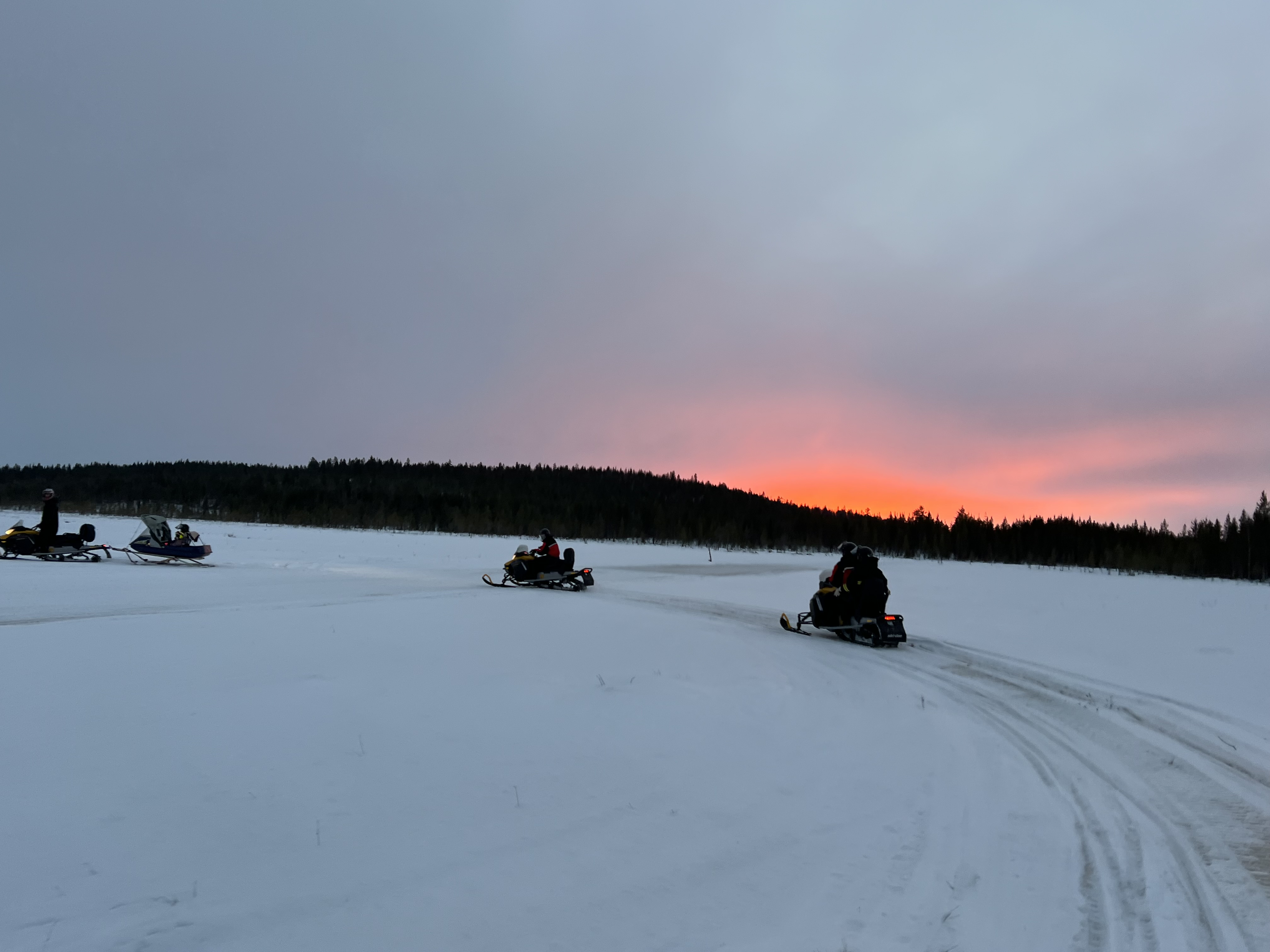
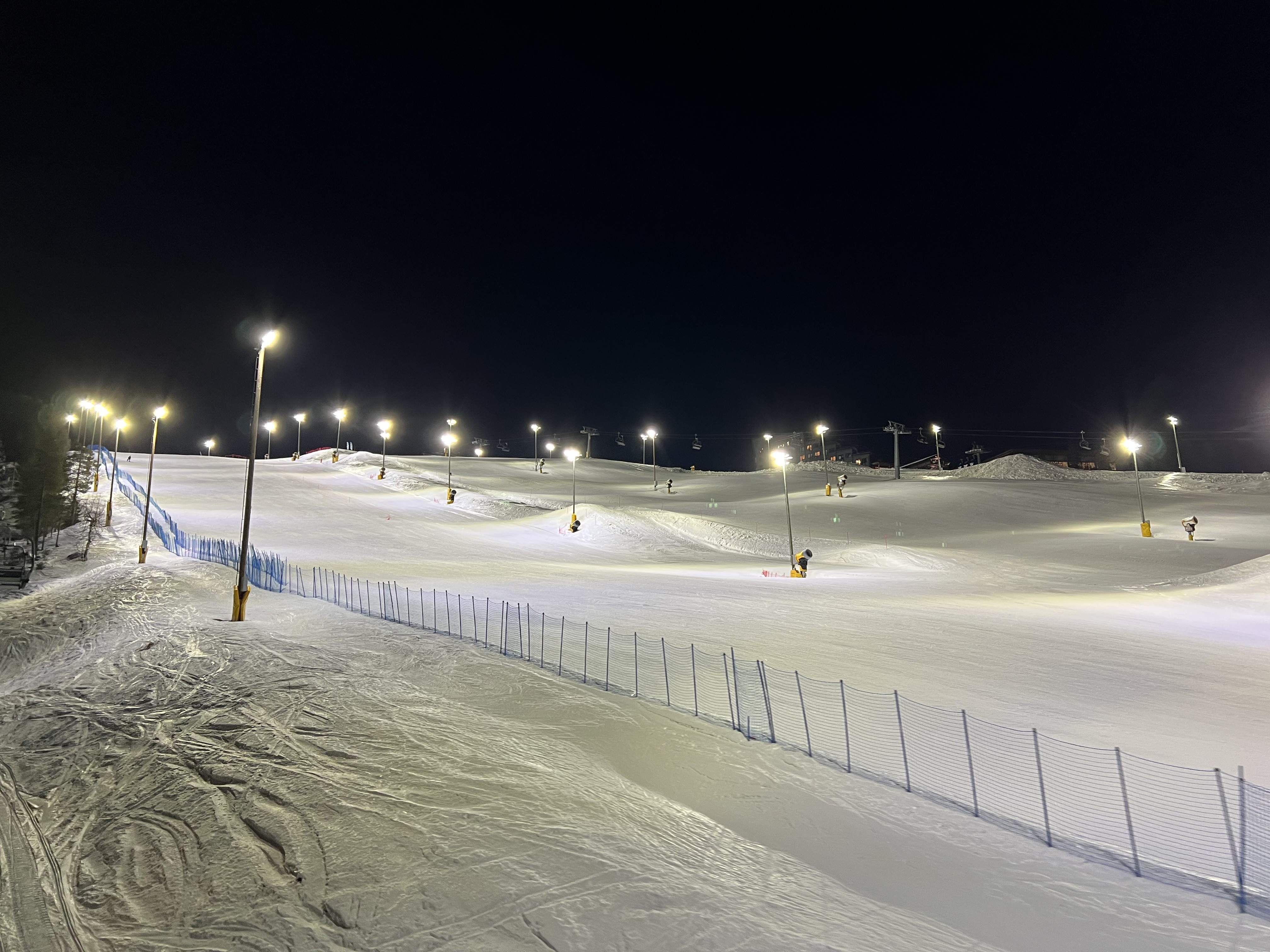
Day three was all about ice fishing. The ice had reached an impressive 40cm thickness, and we got to drill our holes with a hand drill. After a long stretch of catching nothing at my first spot, I moved and drilled a new hole - immediately catching a small perch! The temperature had dropped dramatically to -15 degrees, so dramatic in fact that the fish froze solid while we were taking photos. Unable to release it back, we ended up grilling our one and only catch of the day. Our final day finally gave us the chance to try cross-country skiing. The tracks were freshly prepared, leading us through beautiful forest scenery. The 30€ three-hour rental felt like a bargain, though we were skiing in an incredible -23 degrees (quite a shock from the +6 degrees just days earlier!). We caught our afternoon bus back to Helsinki after that.

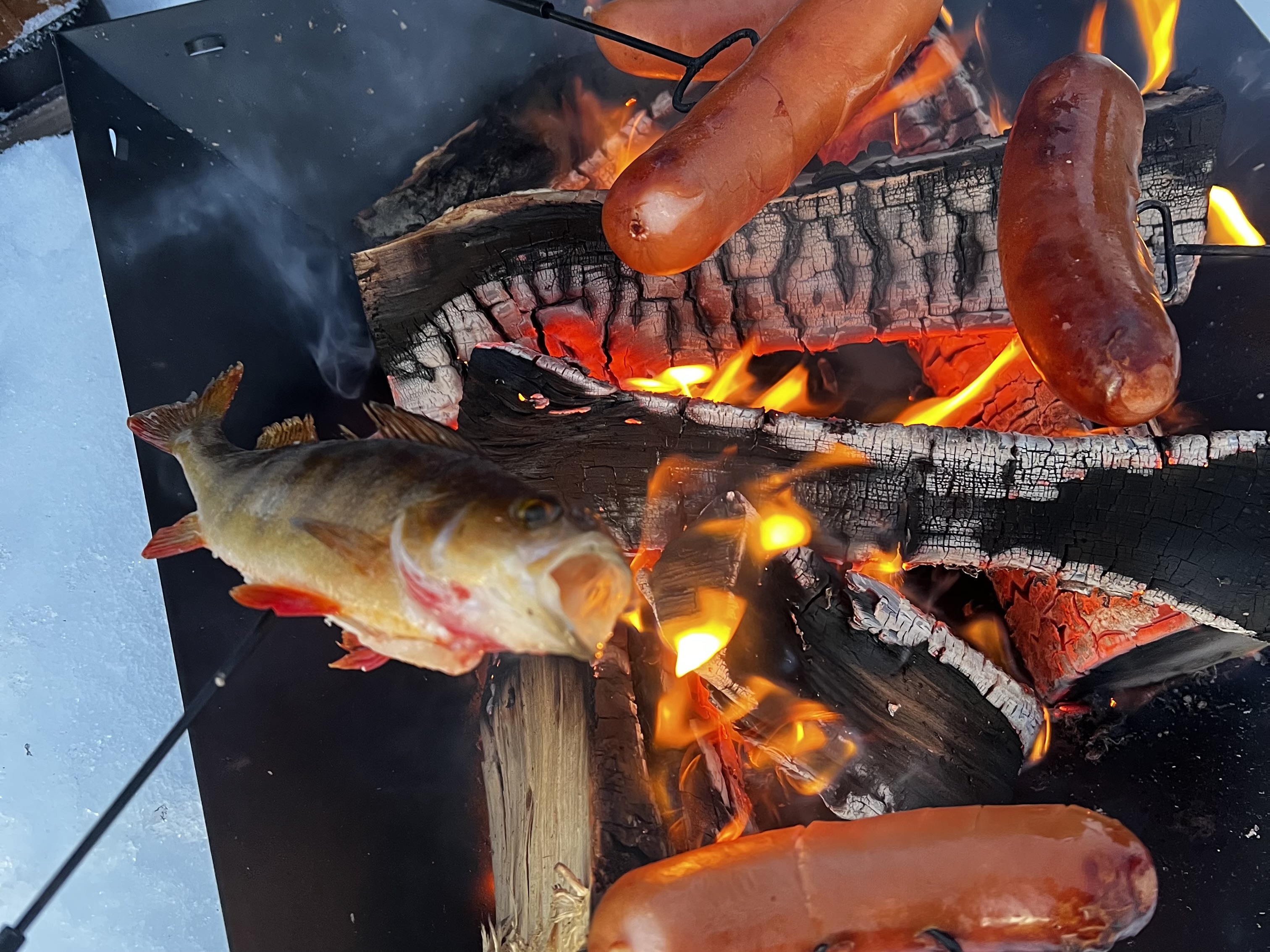
Throughout our stay in Levi, we made nightly trips to a nearby lake (location) whenever skies were clear enough to hunt for the Northern Lights. Our persistence paid off twice with spectacular aurora displays, making perfect endings to our Lapland adventure.

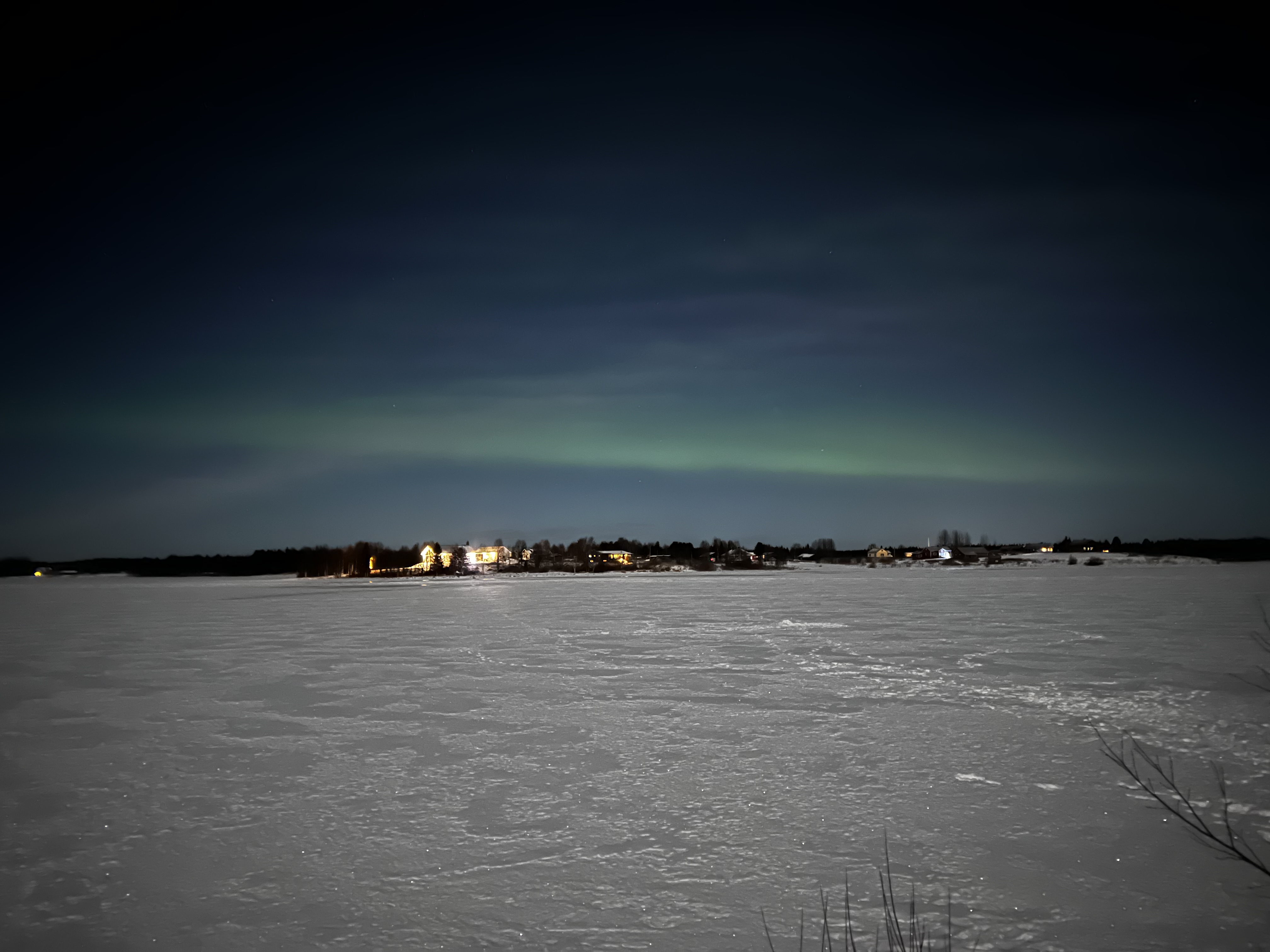
7. Useful Apps and Links
- Helsinki Region Transport (HSL) [Playstore, App Store] - Public transport schedules and route planner for the Helsinki metropolitan area. Google Maps also works quite well for public transport in Helsinki but purchasing tickets requires the HSL app.
- FMI Weather App [Playstore, App Store] - Weather forecasts from the Finnish Meteorological Institute.
- Frank App [Playstore, App Store] - Student discounts and benefits in Finland, as well as a digital student card (for AYY members).
- Kide App [Playstore, App Store] - Event app for booking tickets to various events in Helsinki and Espoo, as well as for memberships like ESN.
- Kanttiinit [App Store] - Official app for checking campus restaurant menus and opening hours.
- Aalto Space [Playstore, App Store] - Aalto University’s official app for room bookings and campus navigation.
- EasyPark [Playstore, App Store] - Parking app for paying parking fees in Helsinki and other cities.
- Aurora App [Playstore, App Store] - Aurora forecast app for predicting Northern Lights visibility.
- Komoot App [Playstore, App Store] - Outdoor route planner for hiking, cycling, and other activities.
- Otaniemi buy/sell Telegram group
- Otaniemi Subleasing Telegram group
- housinganywhere - Website for finding accommodation in Helsinki and other cities.
- Facebook group for finding accommodation in Helsinki.
